August 11, 2019
Martha O'Kennon

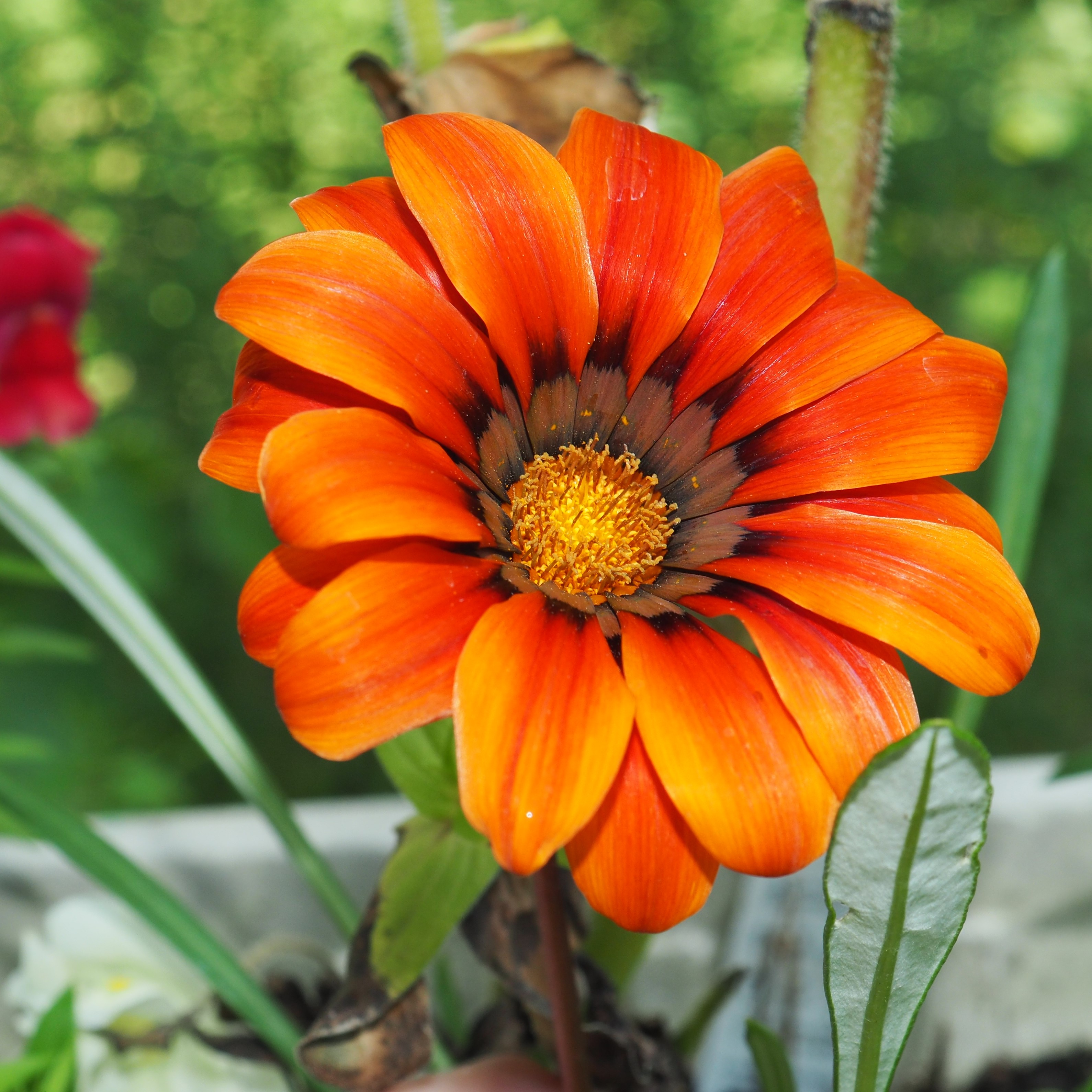
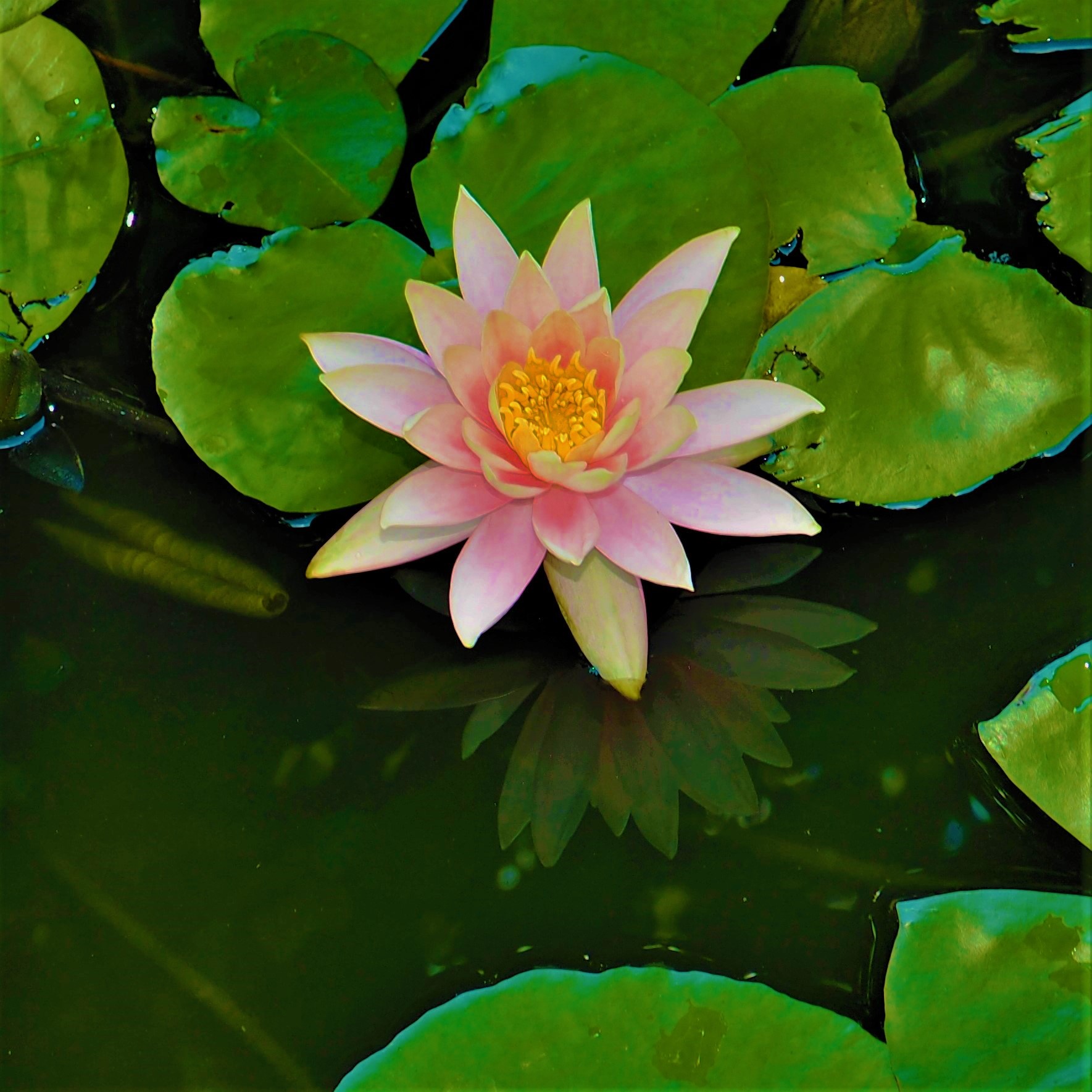
It is officially cooler, whatever that means. Much less humid but also much dryer. I plan to water as much as I can reach this afternoon, while trying not to waste water. Here we have a new Day Lily called August Orange. Perfect! The wild things keep trying to smother this lovely lily but here it is blooming triumphantly. The Gazania is too pretty not to show even though we saw it last week here. Now that the raccoons are less of a problem, the Water Lilies are having a chance to bewitch the afternoons. Yesterday there were six of them blooming. Here is one with its reflection!
Remember that there is information in the name of the file for each image. You can see it by mousing over the image - look at the lower left of the screen. Or you can click on the image to get to the (usually) larger image. Then the info is displayed in the address line above. Sometimes the second click will actually display a different view of the original image.
The drought is making it harder to find the quantity of ants we usually have, but there is always a place to find some ants. We'll be looking at more galls later on but here is an oak stem with pinkish galls - and an Eastern Black Carpenter Ant. The galls are caused by a little wasp, the Oak Rough Bulletgall Wasp (Disholcaspis quercusmamma). But the ants enjoy something that the galls exude. Second is a Myrmicine Ant, probably the Punctuated Ant, nurturing the Oak Galls in a smaller stage. Isn't it interesting that the ants switch species as their hosts get bigger? Third is a TINY little yellow ant, the Hairless Rover Ant (Brachymyrmex depilis). We met that little ant last year - it is supposed to stick to the forest floor, since their naked hairless skin allows the ant to dry out when it's in the air. Yet here it is again up on a leaf.
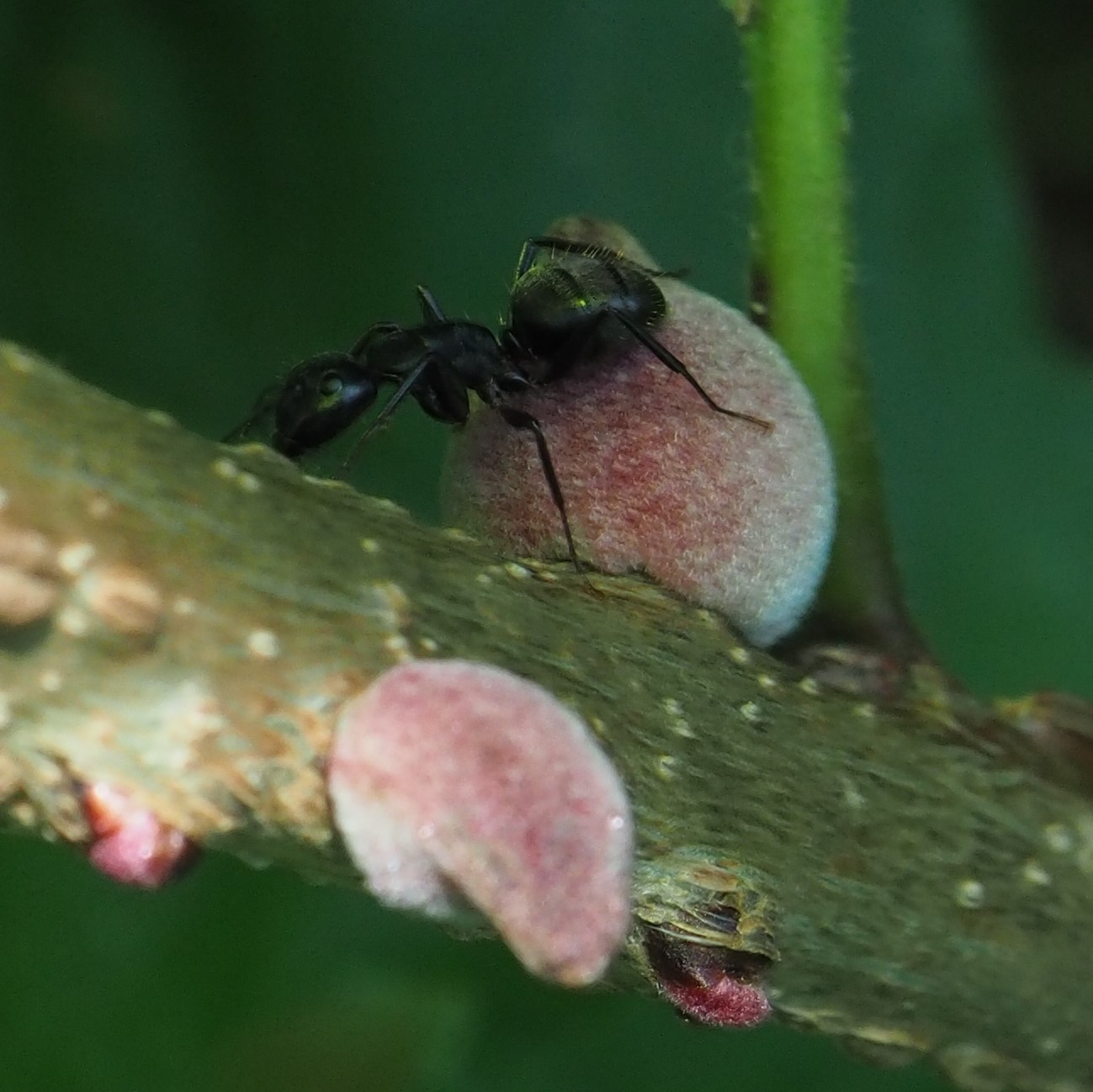
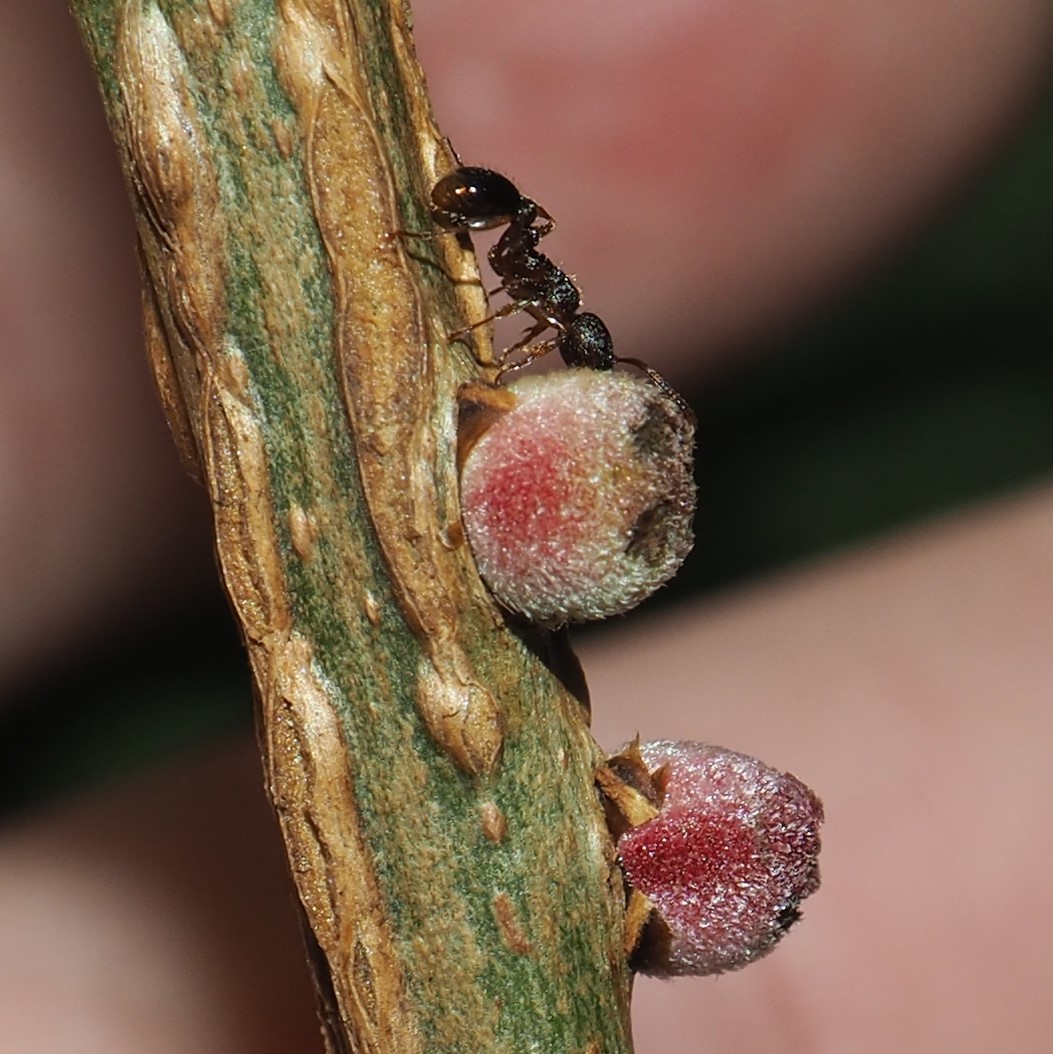
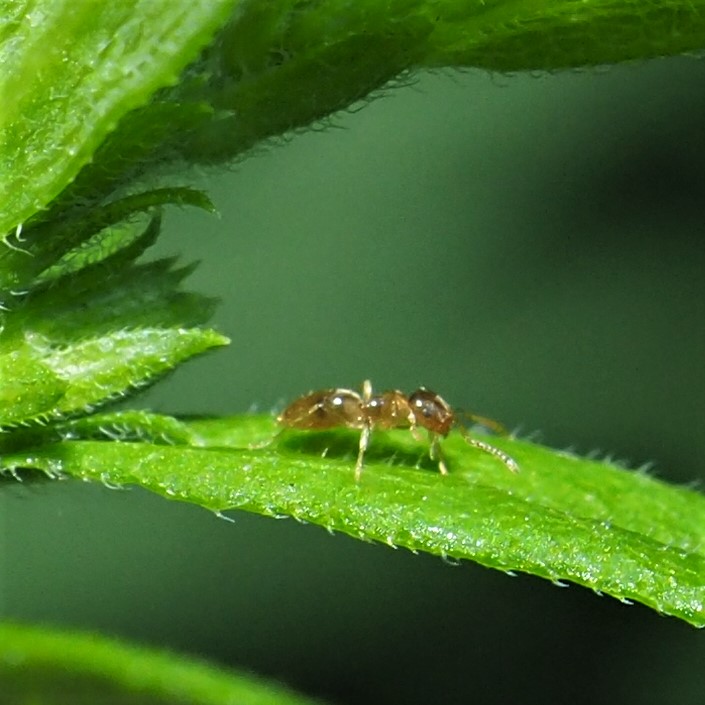
I don't think I saw ANY barklice this week, after the relative diversity of them last week. So were there any bees? Why yes, there was this one tiny fellow enjoying the nectar of the Trumpetvine Flowers (or Trumpets). It had just a thin greenish veneer, but I don't have an ID back from it.
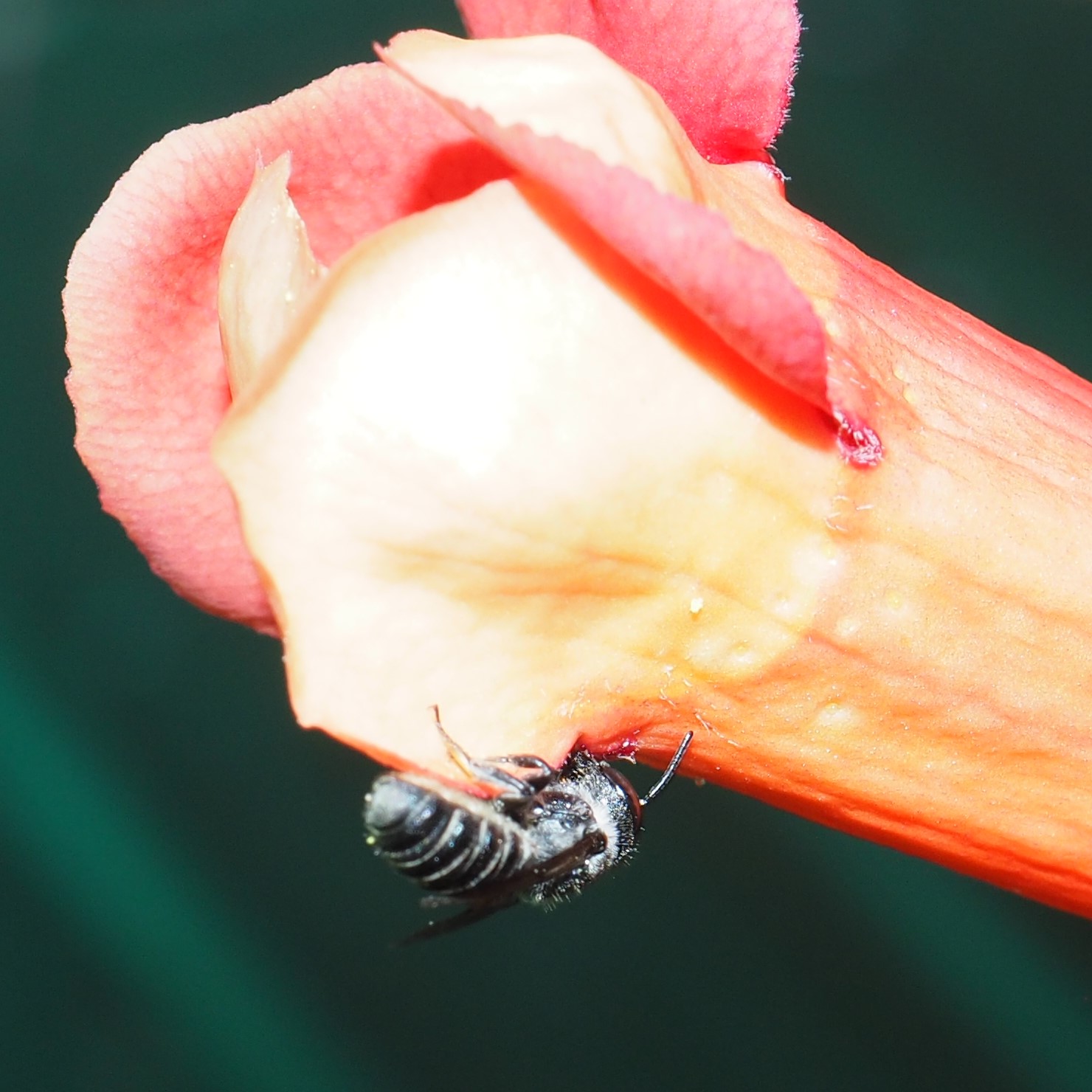
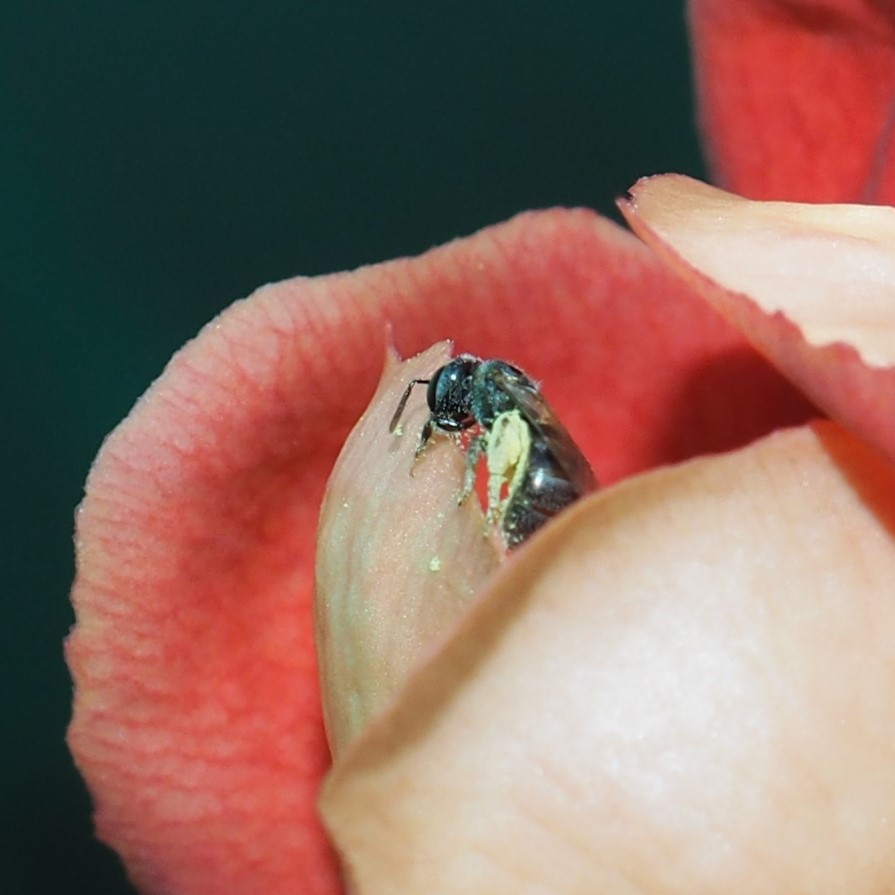
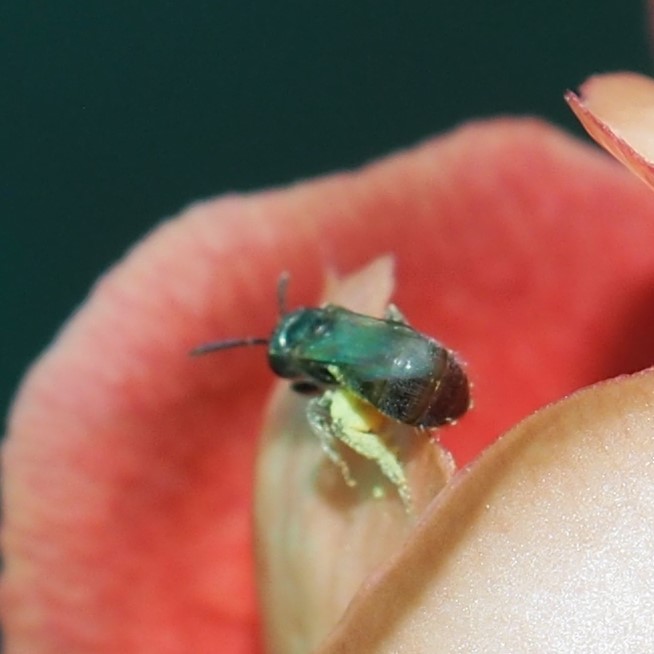
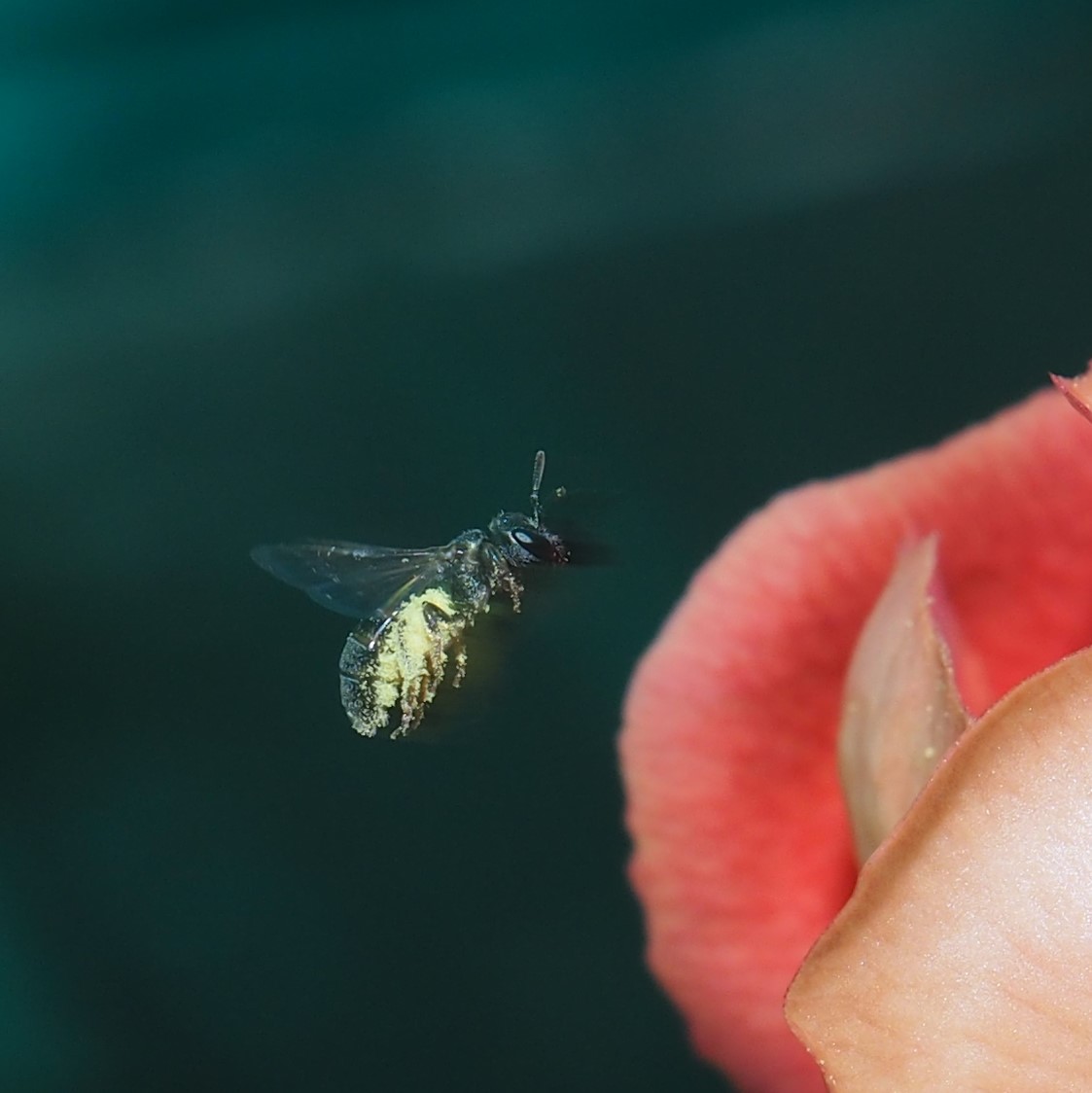
There were, however, some beetles to make up for the scarcity of bees. This little Flea Beetle was visiting again (do they ever go away?). And an Asian Lady Beetle was walking around nibbling small creatures.
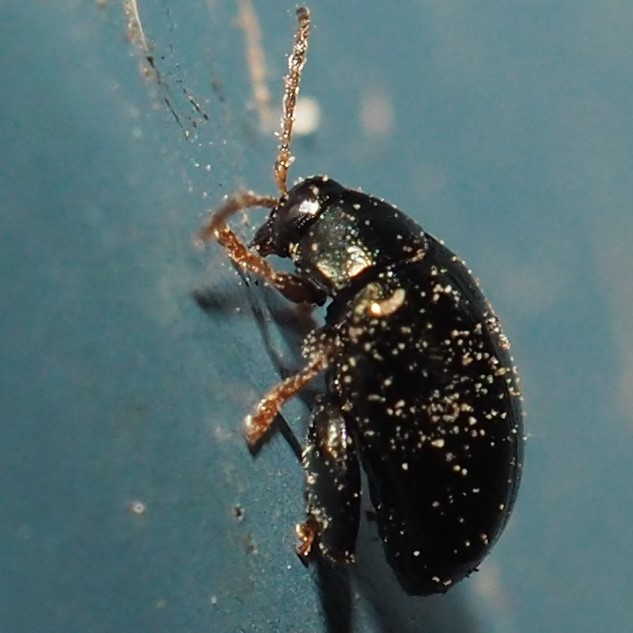
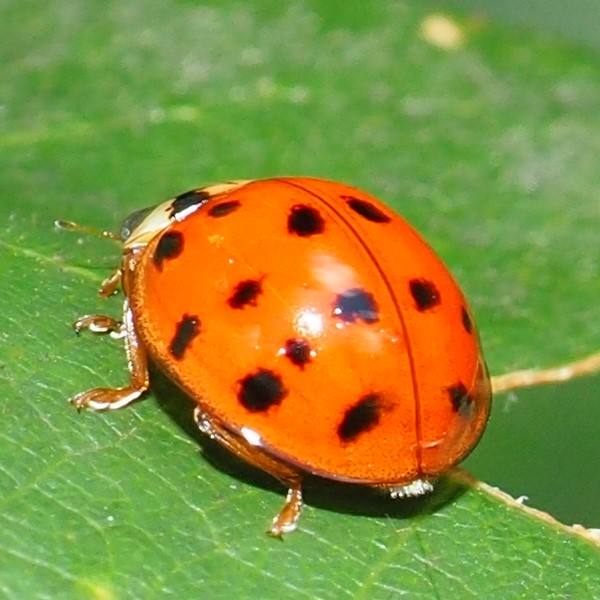
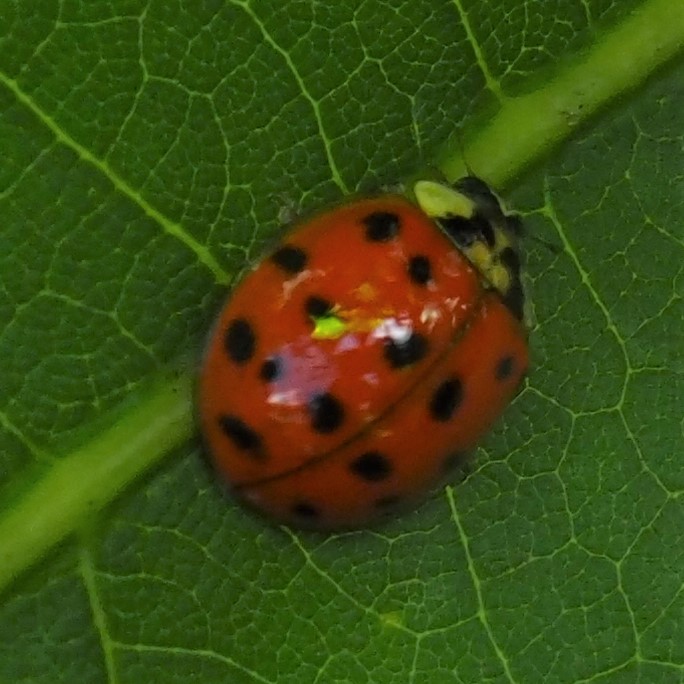
Here's another kind of Lady Beetle. It has one red spot on each side, and hence the delightfully macabre name, the Twice-stabbed Lady Beetle. A spider had hung up some of its day's take and so I got a pretty good picture of the Goldenrod Leaf Miner Beetle (Microrhopala vittata), which means its larvae make tracings from the inside of a leaf. The Lightning Beetles are still quite active at dusk.
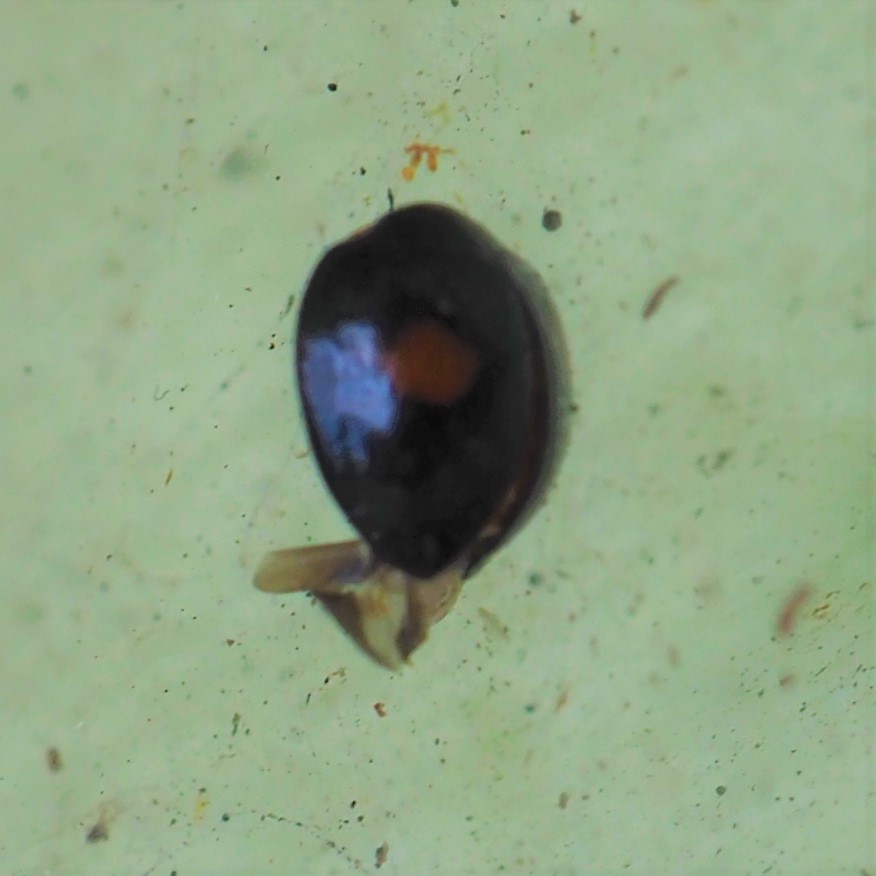
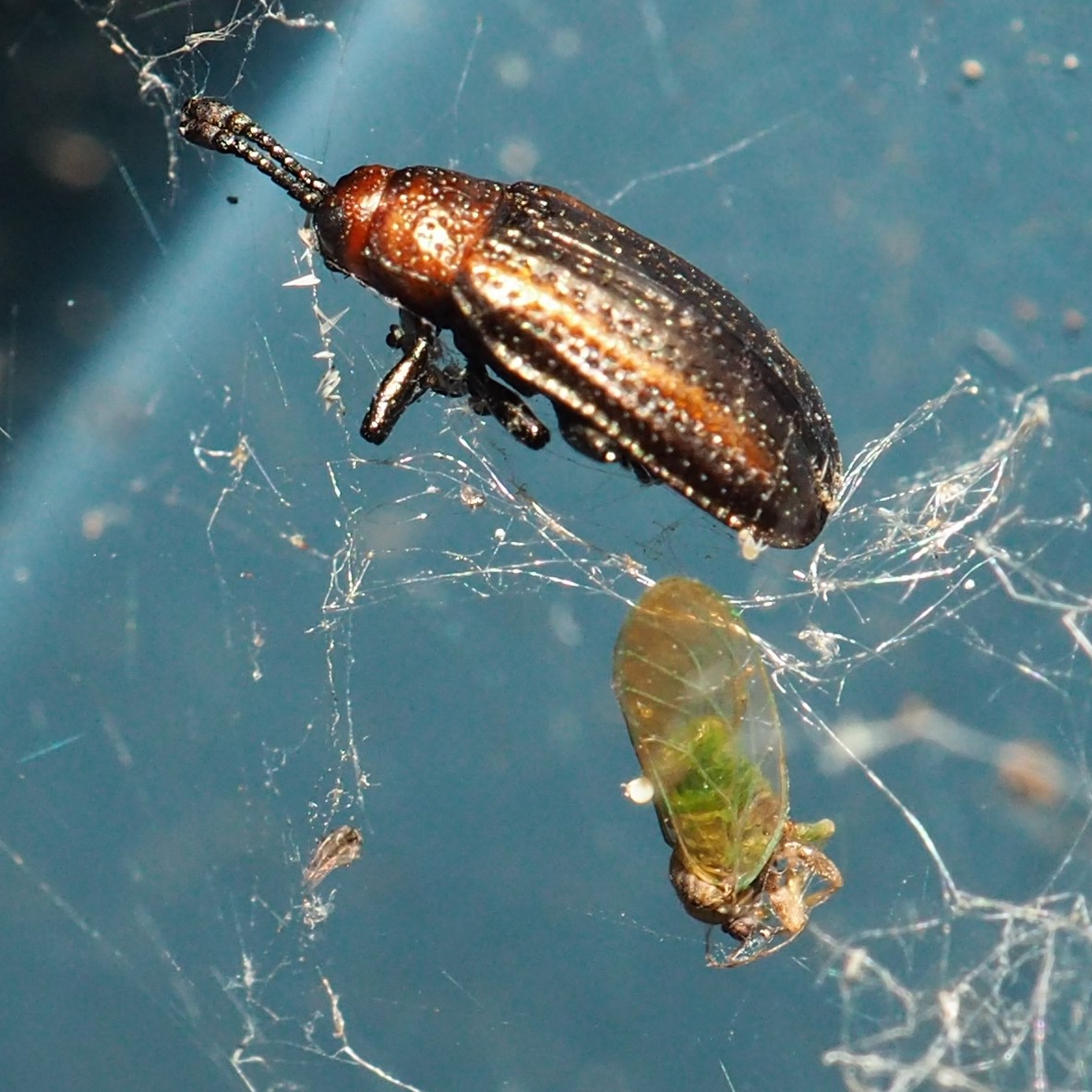
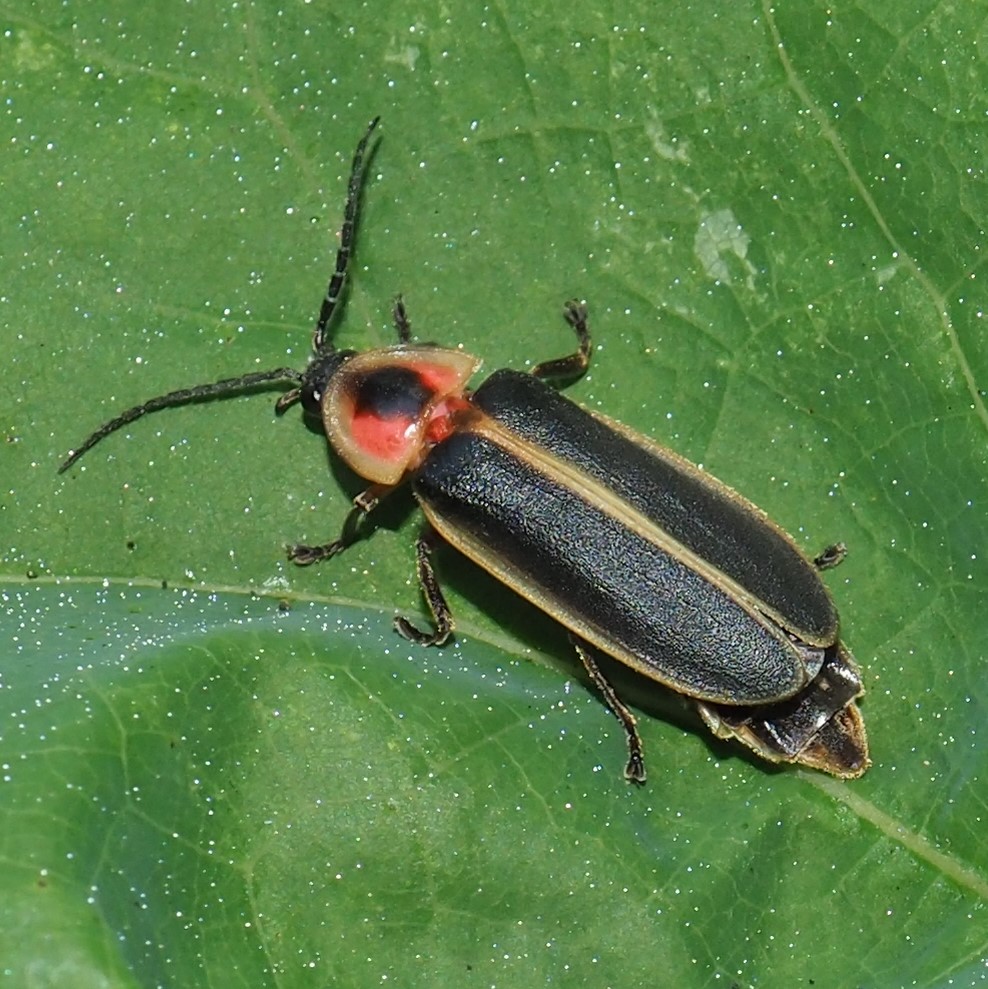
Here is the Redbud Bruchid, a Weevil whose larvae eat the seeds of the Redbud tree from the inside of its seed-pods. (Did you remember that the Redbud, a good-sized tree, is actually a member of the bean/pea family of leguminous plants?) Next is a Checkered Beetle, a very hairy one. Third is a small (about a quarter-inch or 7 mm) beetle, found on a raspberry leaf. It is the Red-necked Cane Borer, Agrilus ruficollis.
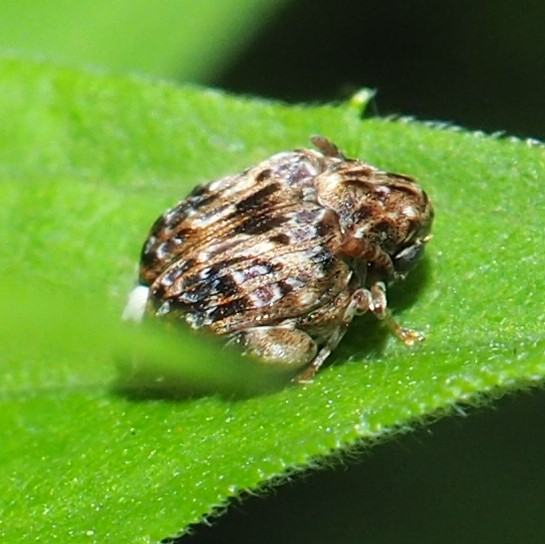

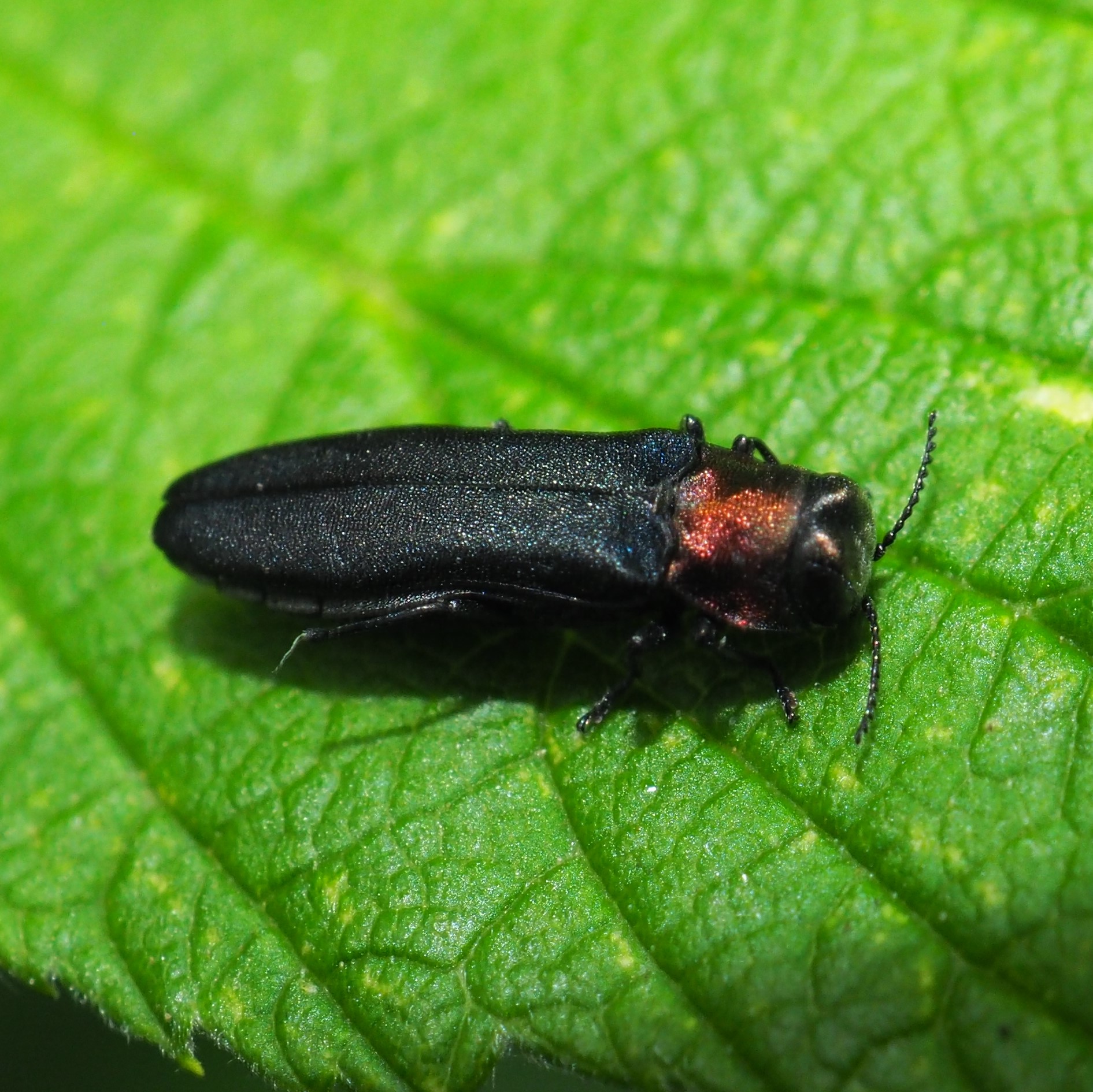
It wasn't a bad week for Bugs either. As usual, we start with our popular Assassin Bugs (Zelus luridus). They are back from a few days of not showing up - now we're seeing a new generation, with very small members. Here are examples from August 6, 7 and 9.
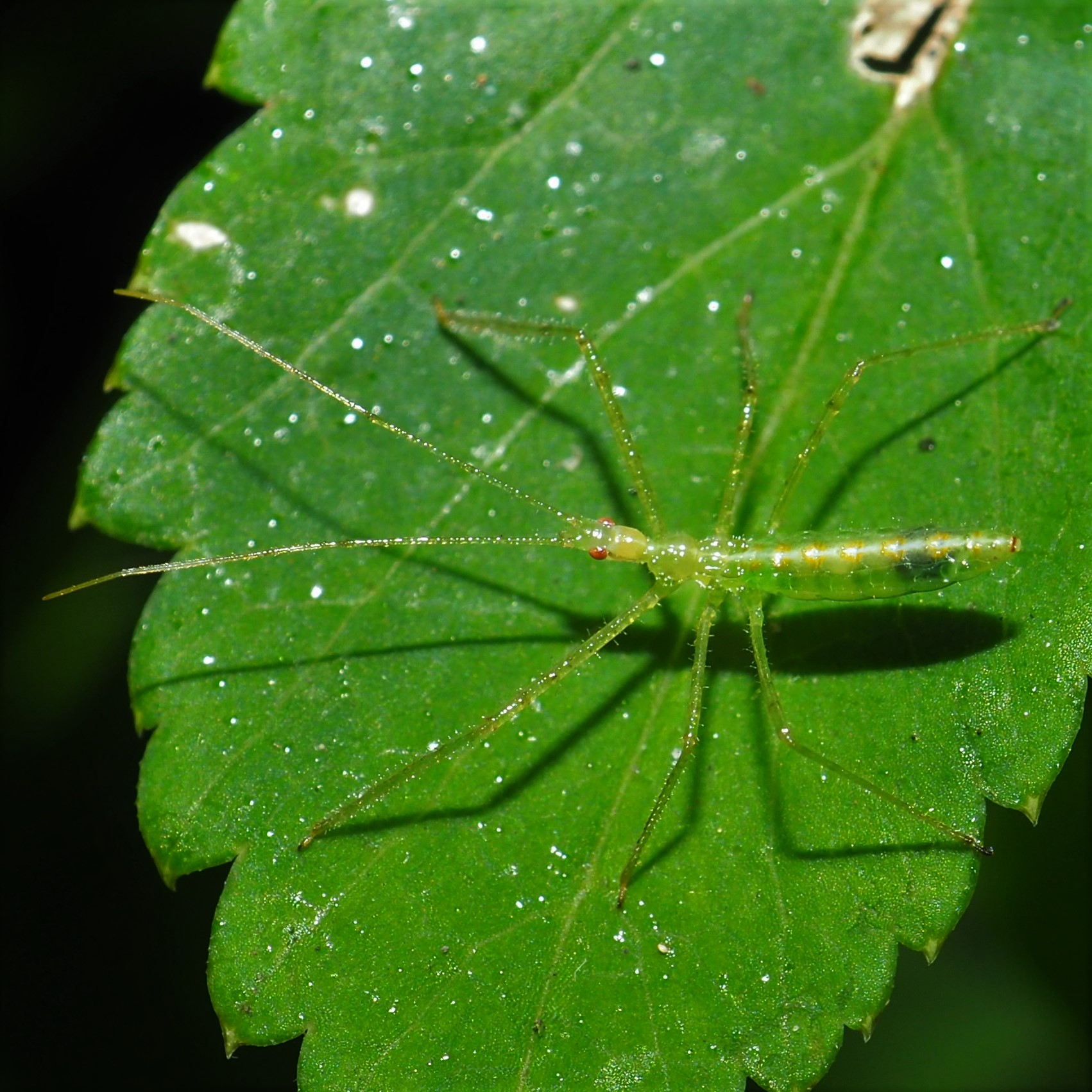
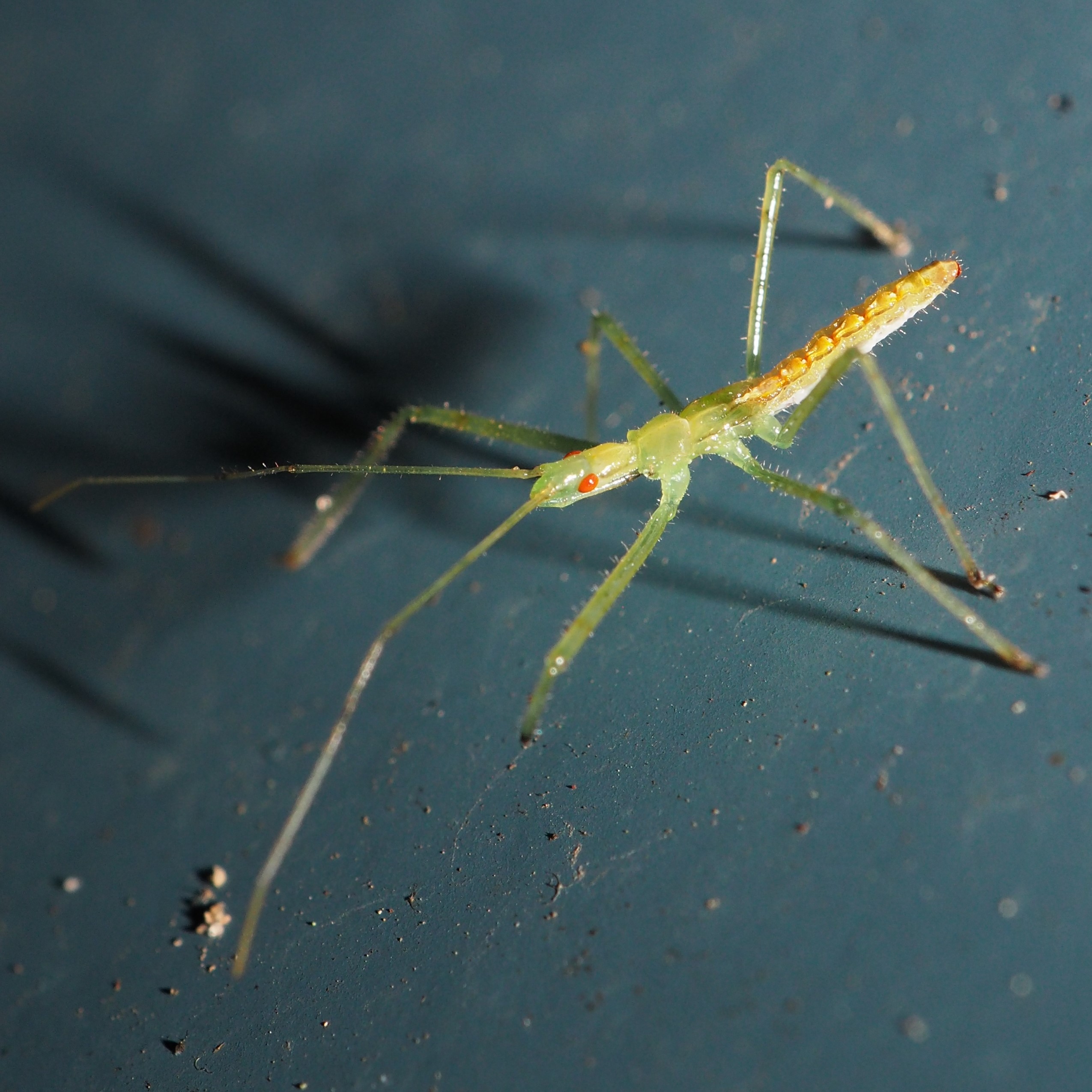
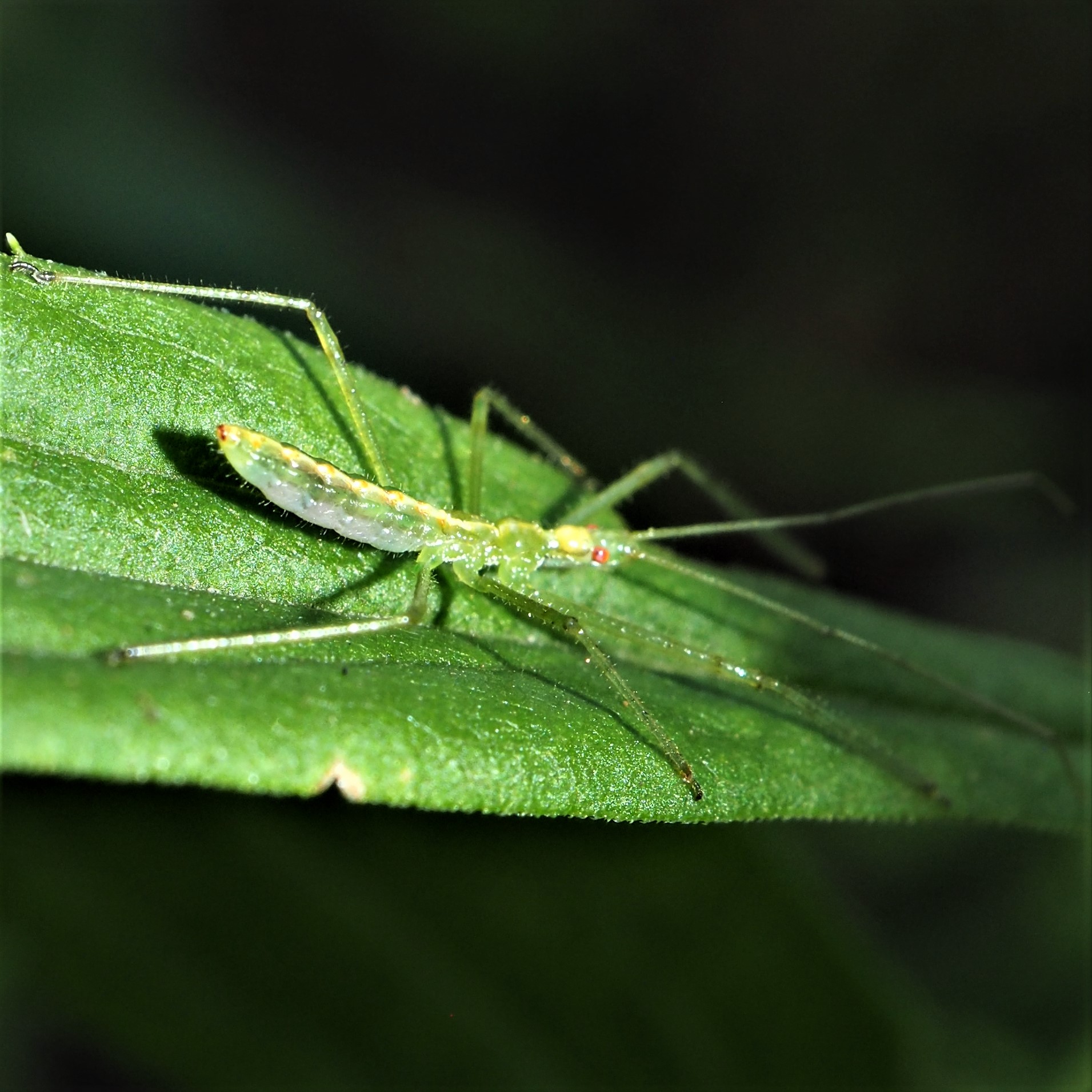
Let's go on to the Leafhoppers, one of my favorite families of Bugs. There are so many species in many genera, and many of them have very interesting colors and/or patterns. This first one must be a very numerous group, because we're seeing so many of these nymphs. This one hasn't gotten any colors yet, but you can see it has wings that are coming along. The second is an adult of a species with a long pointy head, probably in genus Aphrodes. The third, one of the Candy-striped Leafhoppers (genus Graphocephala) is red and blue this time.
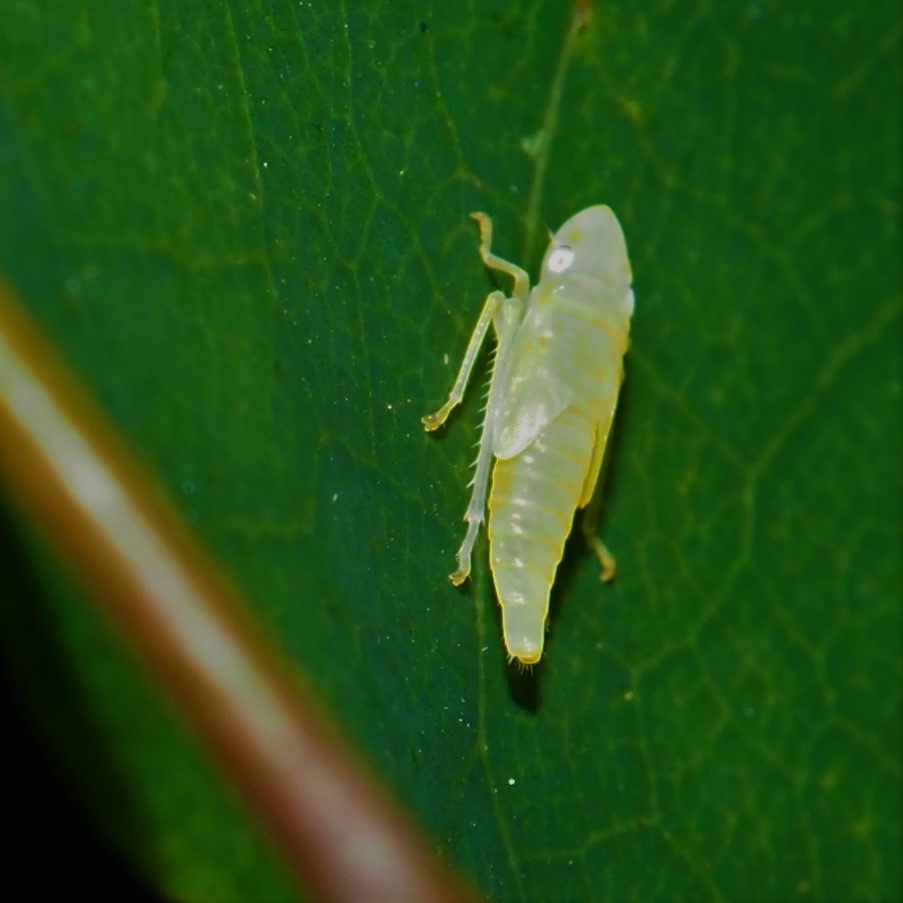
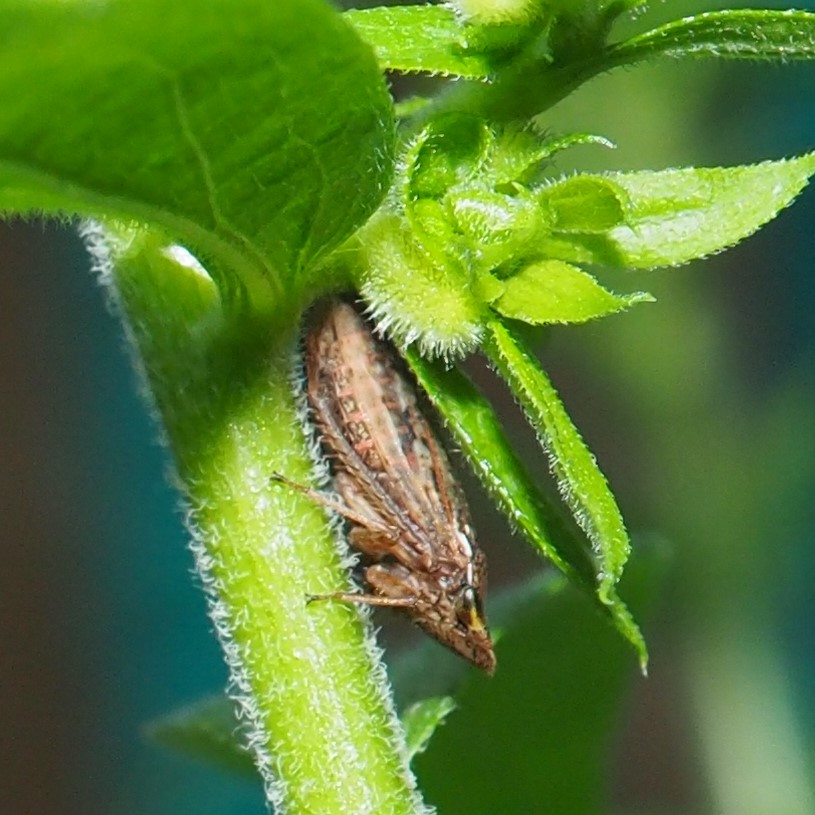
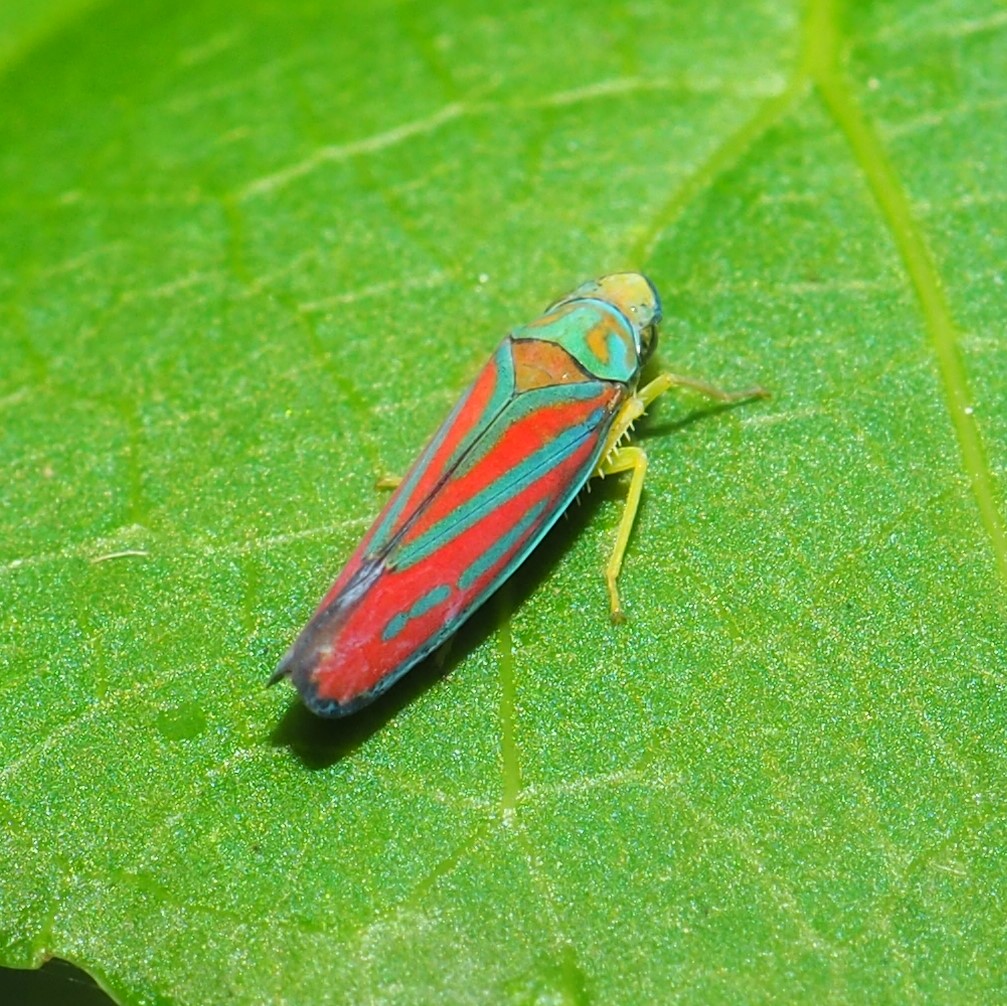
Erasmoneura vulnerata is one of the most common Leafhoppers around here. But that doesn't stop it from being one of the most attractive. Second is one I haven't seen for a couple of weeks, the Japanese Maple Leafhopper. (I don't have any Japanese Maple but a neighbor about a half-block north has one.) This light blue-green one was caught in a spider's larder. You might be able to see the webbing.
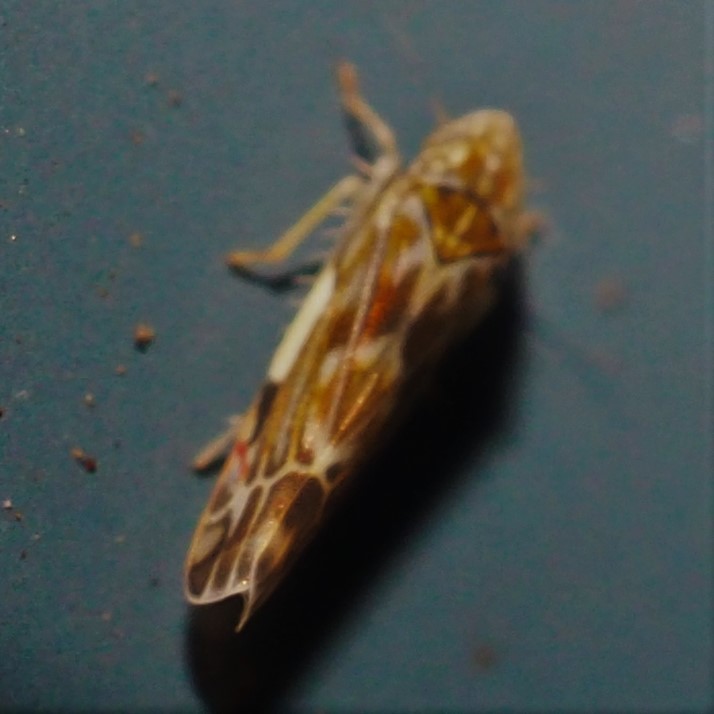
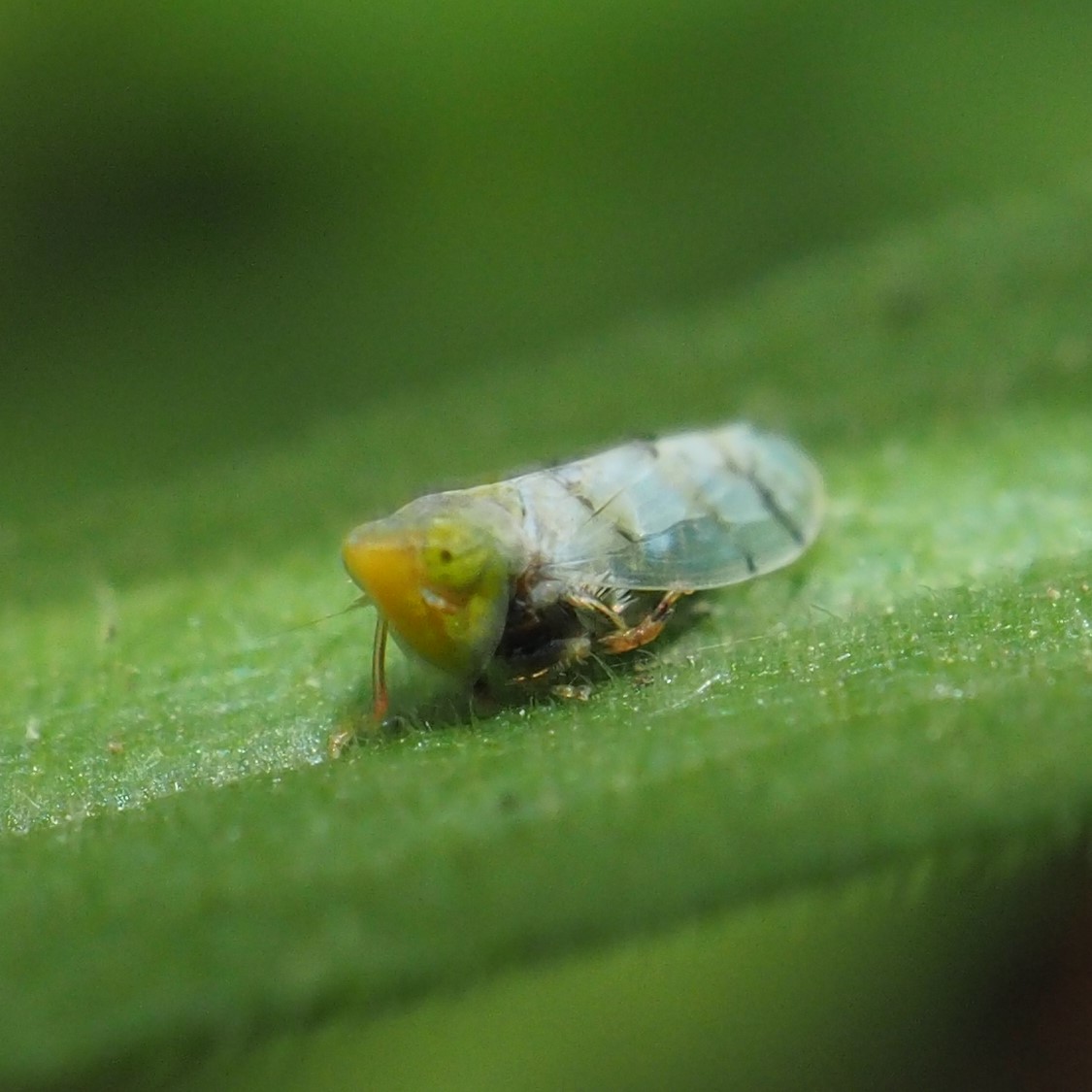
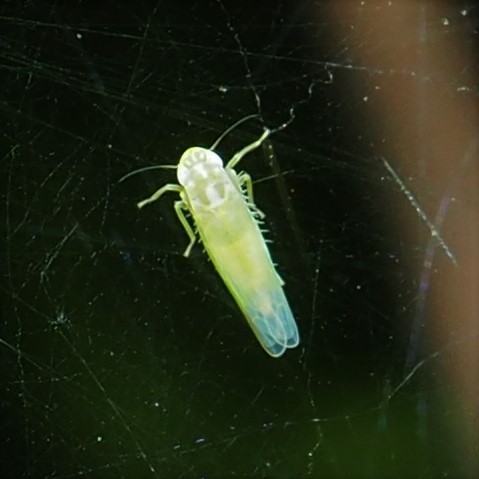
The first bug here is probably a Spittle Bug, maybe even an Orchard Spittlebug without the typical markings (number 2, which you saw last week).
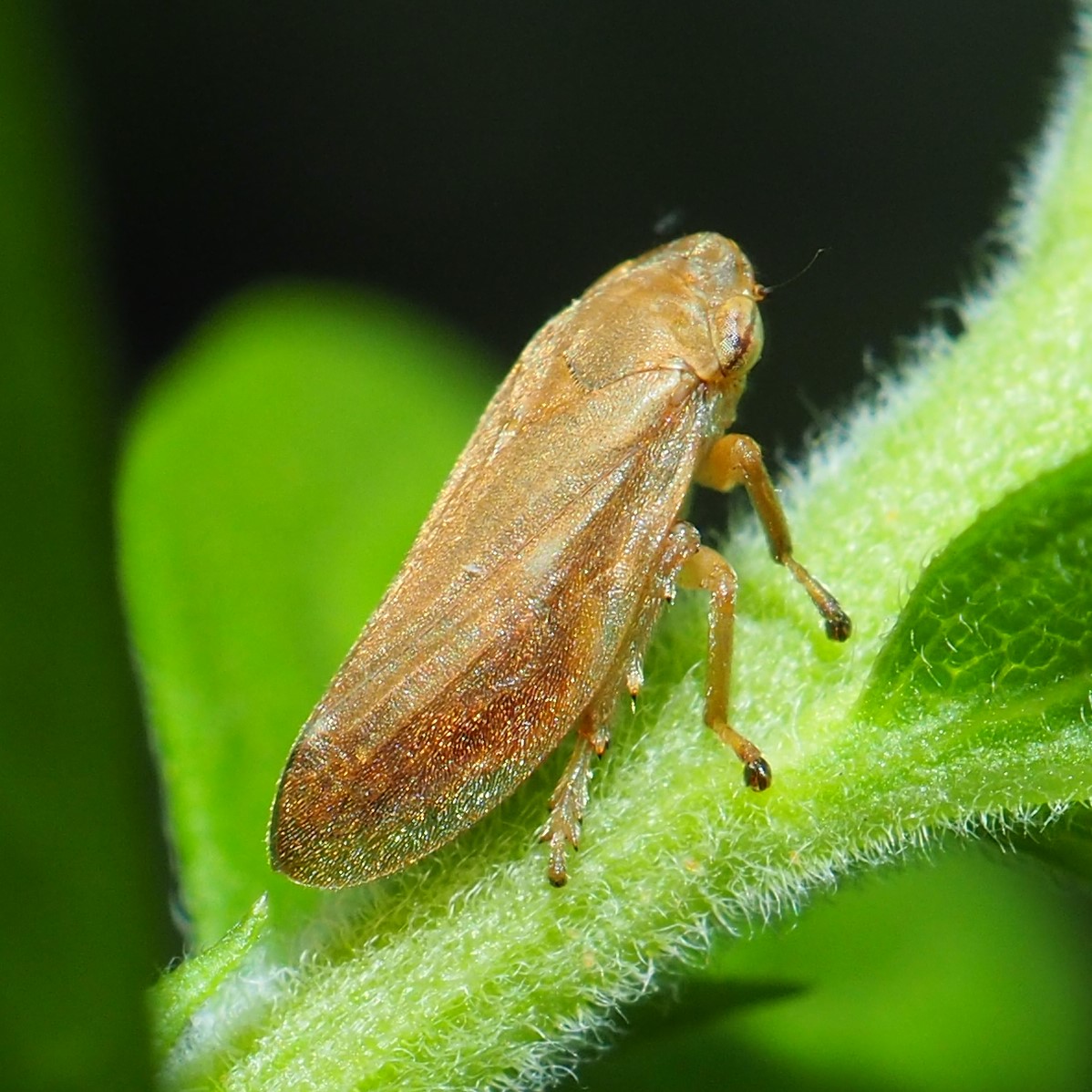

This bug was caught in the web with the Goldenrod Leaf Miner Beetle above. It seems to be a Psyllid of genus Cacopsylla ("bad psyllid").

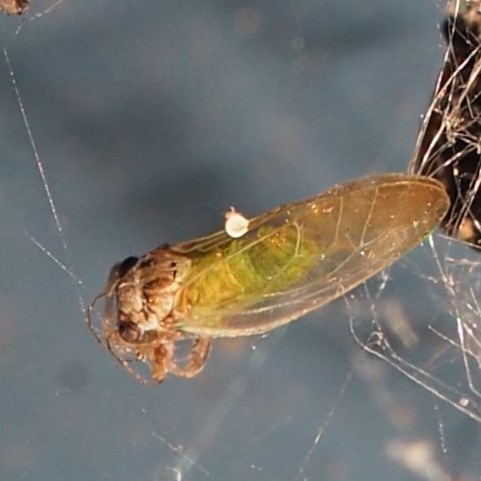
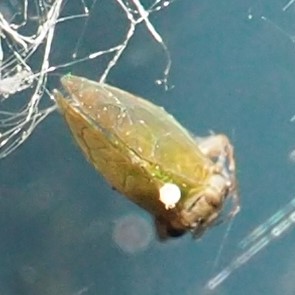
Back to other bugs. Here is Paraxenetus guttulatus, and I was actually able to remember what it was from its picture (after a couple of guesses). Second is an Ant Mimic, an earlier instar of Paraxenetus guttulatus from July 12. Today's is the adult. Picture 3 is one of the Stilt Bugs, which we seem to be seeing fairly often these days. And number 4 is the last of the bugs of the week. With its fat strong front legs, I suspect it is a seed-cracking bug, so I'm guessing it is something like Oedancala dorsalis, one of the Seed Bugs.
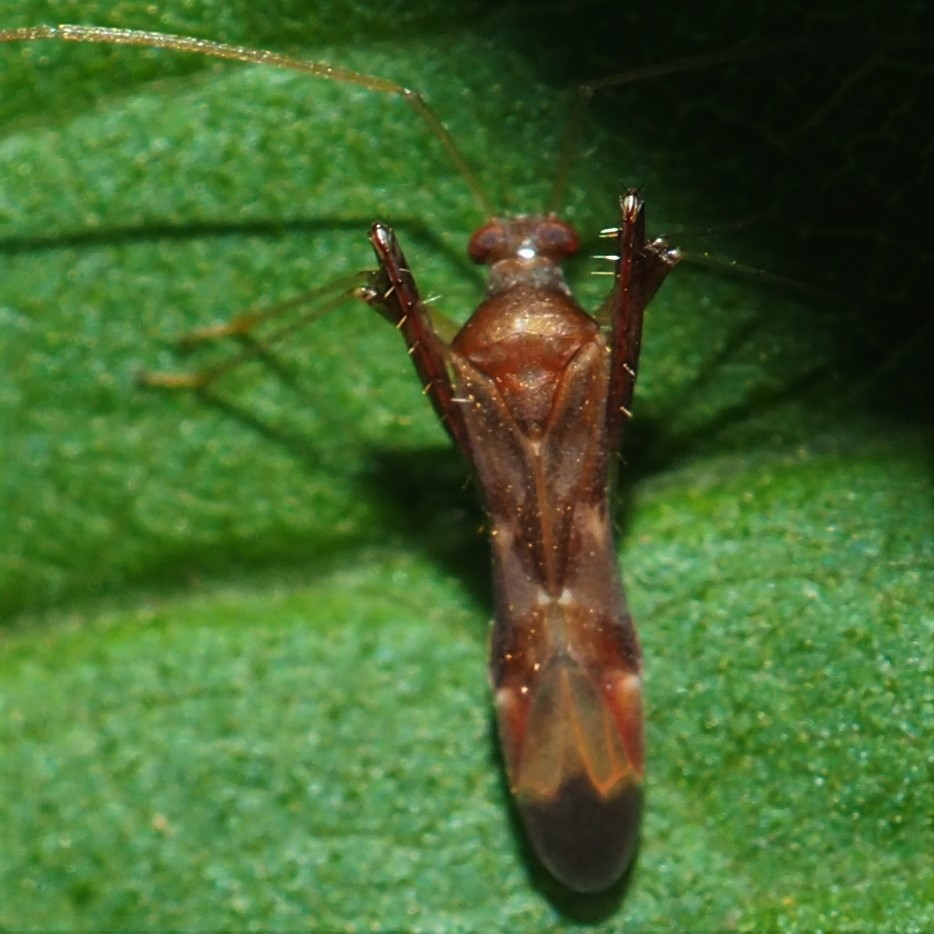
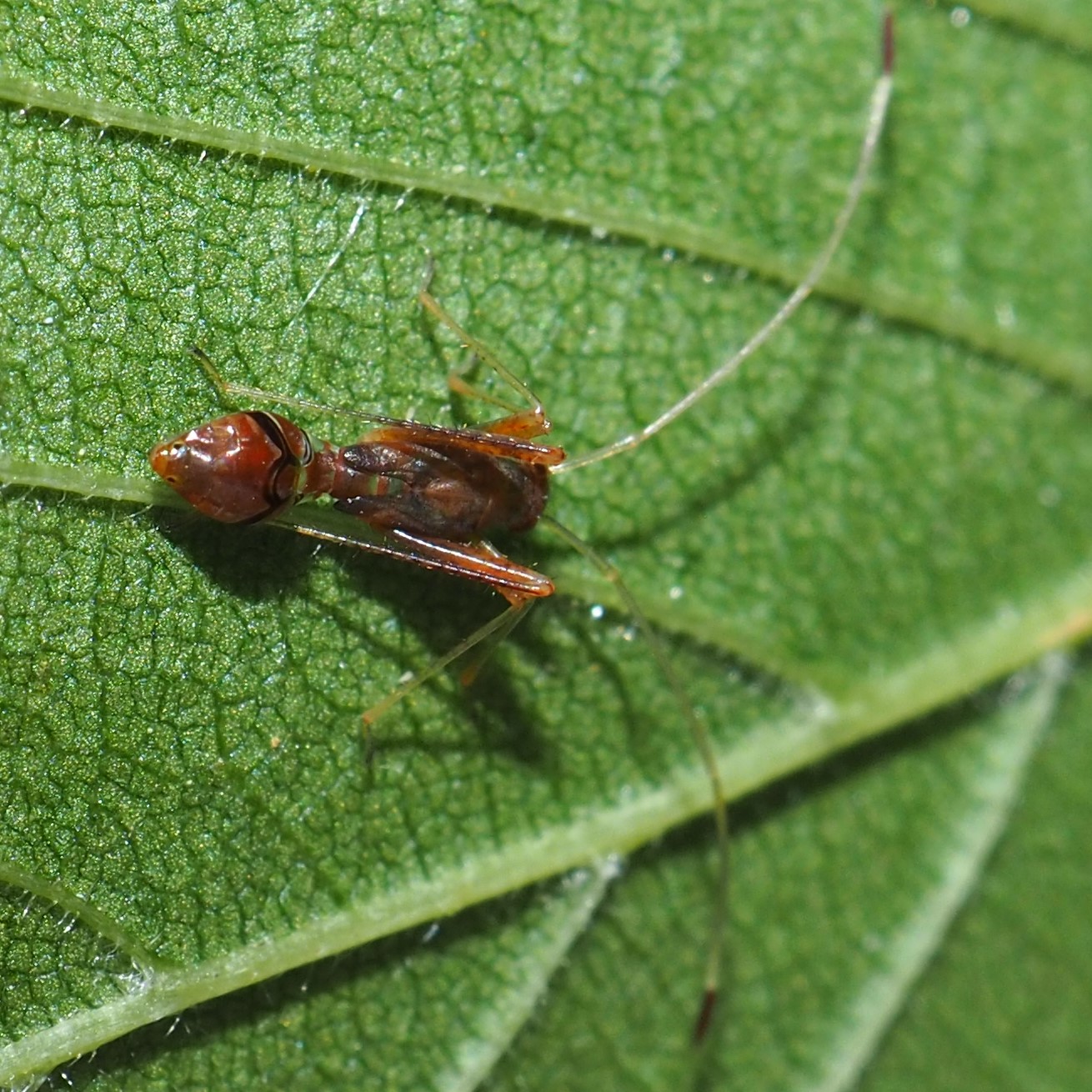
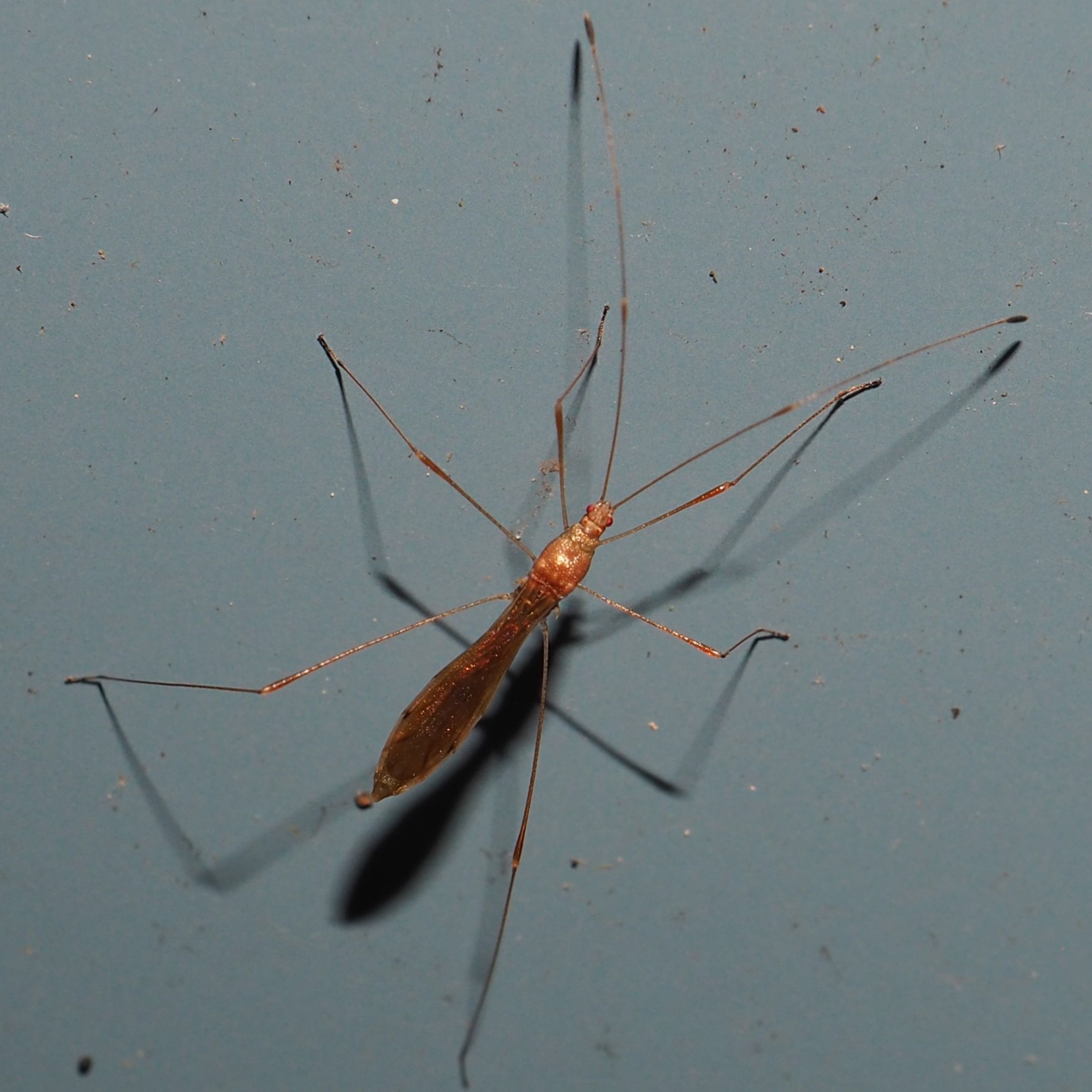
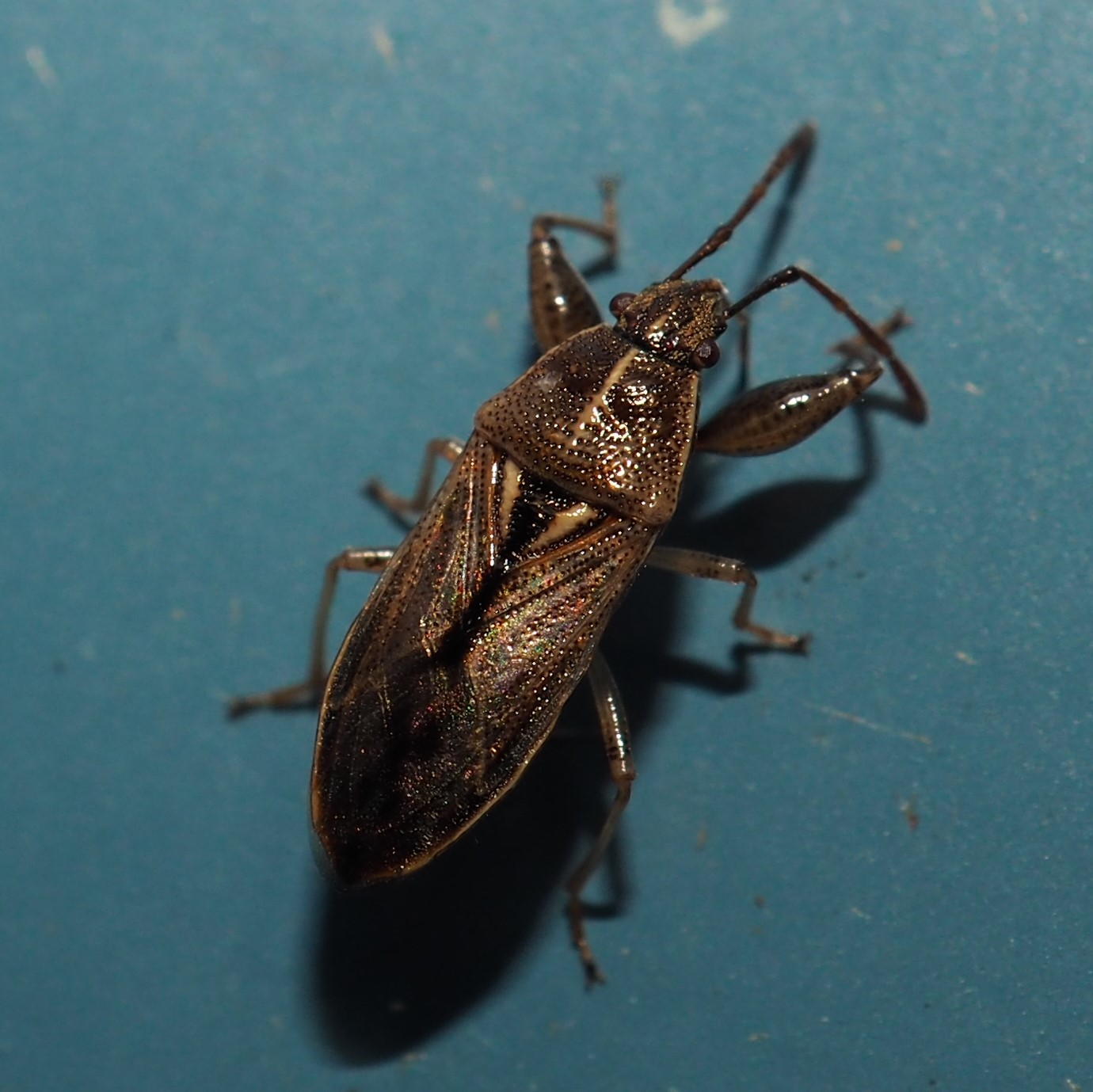
Just a bit more on Bugs. We haven't talked about the Treehoppers yet. First up is the Keeled Treehopper, who actually prefers the Bull Thistle in this yard to any tree. The second picture makes me think there is an adult hopper waiting to crack out from inside a clear shell. There seem to be too many feet for one 6-legged creature. Of course I could be wrong. :-)

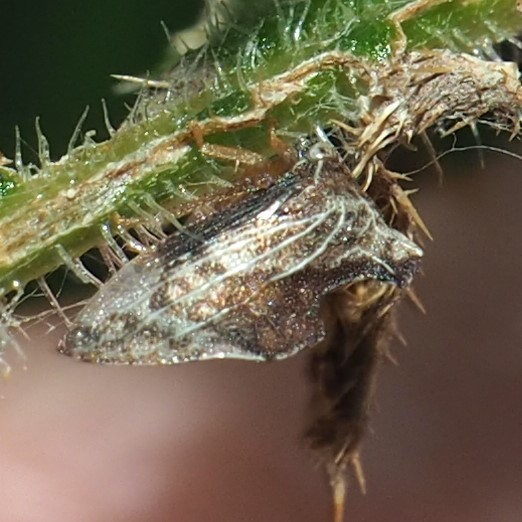
We haven't seen much of our favorite Two-marked Treehopper lately. Here is one adult which seems to be in transit to a new home. It's sitting in a very small sapling not far from the Mother Tree. Second shows an egg (or maybe an older one from last year) in the Weeping Redbud in the front yard. We've seen other eggs in other trees in the past couple of weeks. Third, I spotted this nymph on a leaf of the Mother Tree, but it seems to have been left over and never opened into an adult back when they were opening last month. You can see some spots that I think are mold or other fungus. I'm preparing a website on this group of Treehoppers to try to explain their life to everyone. Keep your eyes peeled!
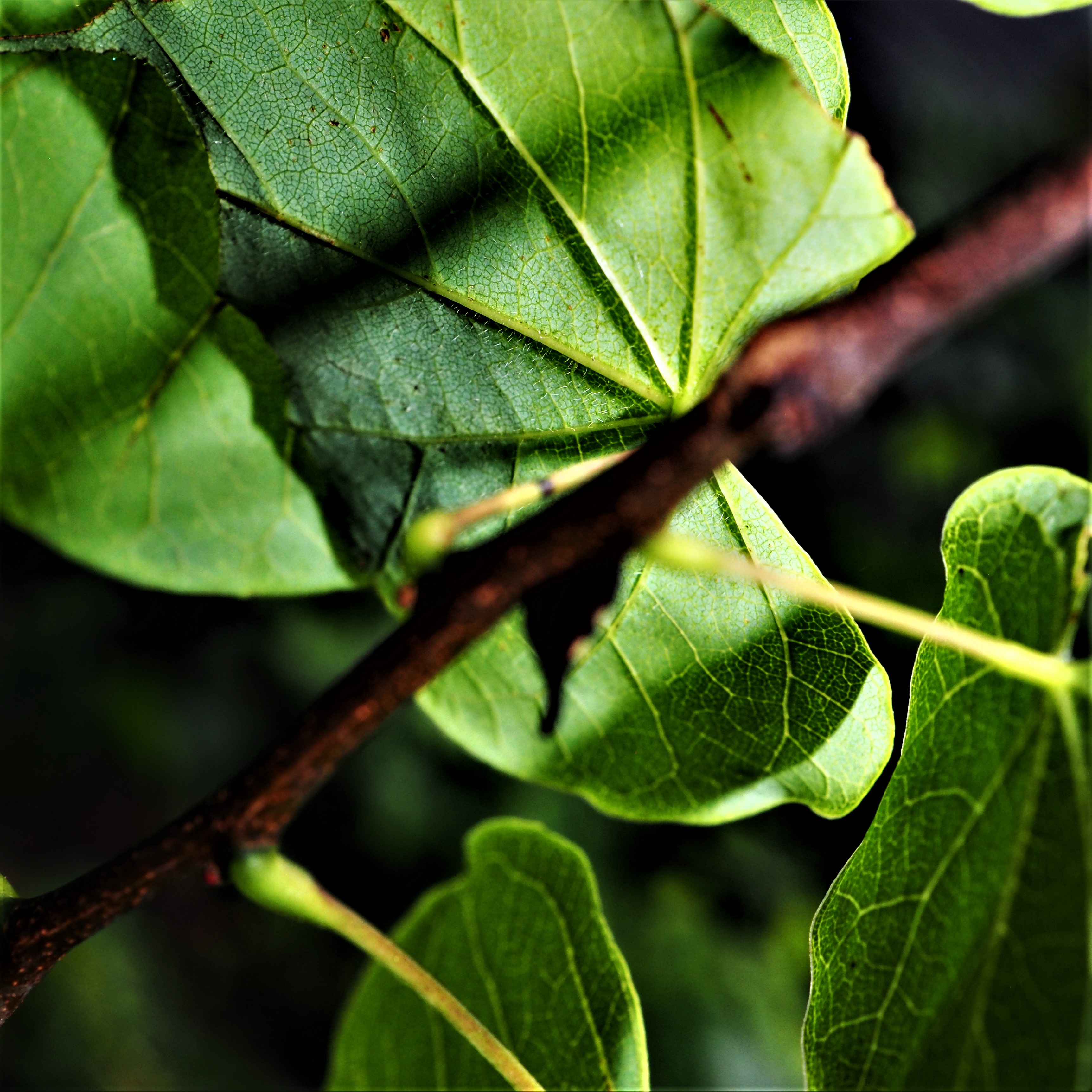
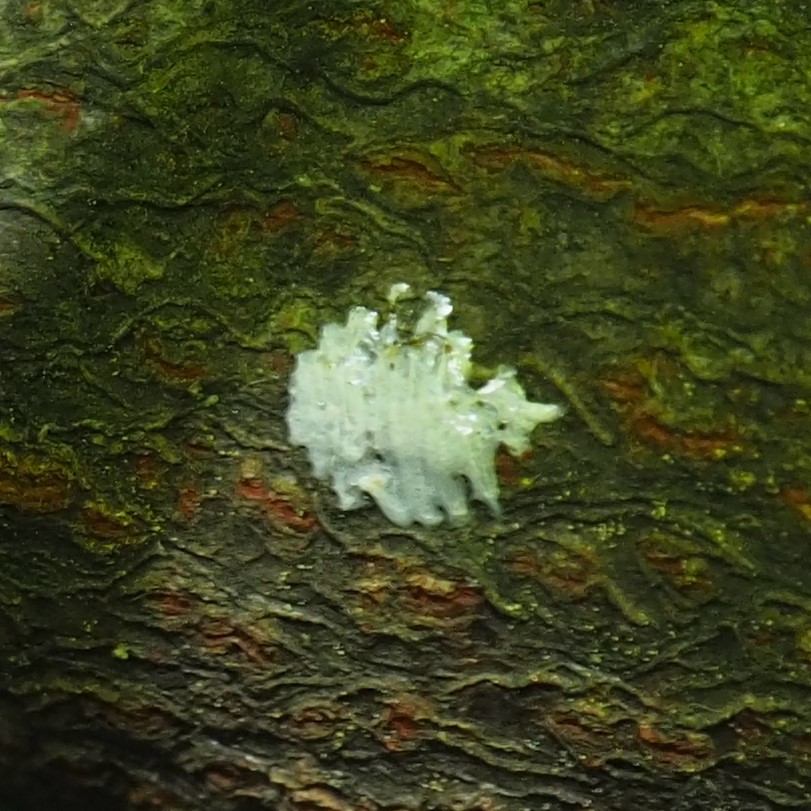
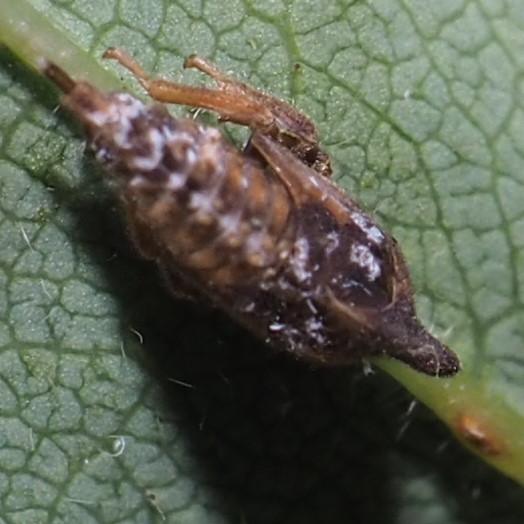
Here's a Red-spotted Purple, which wanted to light but didn't want to get so close to me. This picture was taken with the Macro lens from several feet away, which accounts for the weirdness of the image. Yesterday I saw one flapping just out of sight in the back yard. Its brilliant blue iridescence reminded me of the blue Morpho Butterfly I saw in Ecuador! The next picture is of a "crescent-like" butterfly in the grass. The Crescents (like the Pearl Crescent) are very hard to tell from one another. If anyone spots this one and can identify it for me, thanks in advance! This next moth, resting on the shop wall,
was identified by Joanne Russo, an iNat Moth identifier, as a Bent-line Carpet Moth (Costaconvexa centrostrigaria). Jason Dombroskie, another iNat identifier, says this last one is the Bat Man Moth! If you see its lit-up image in the sky over Gotham City, look out!
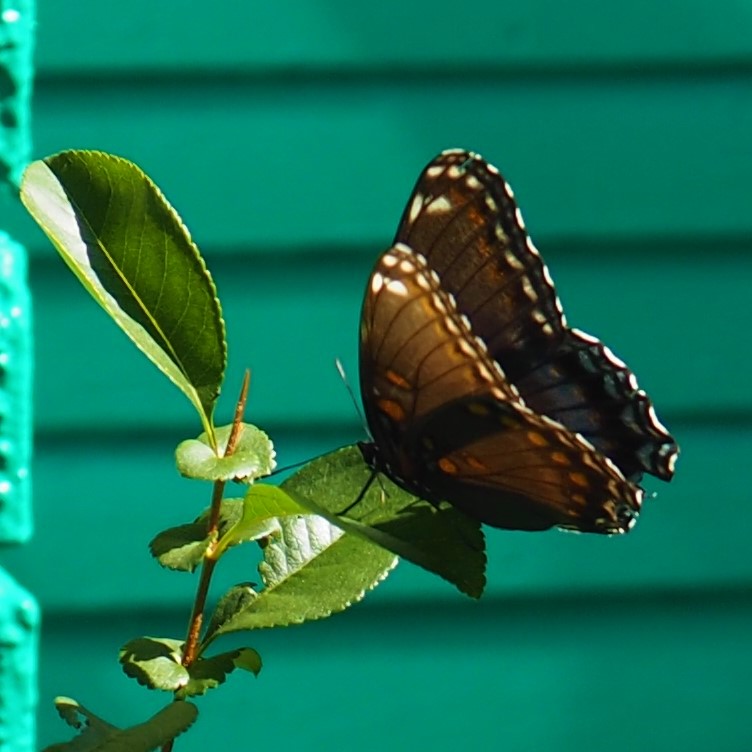
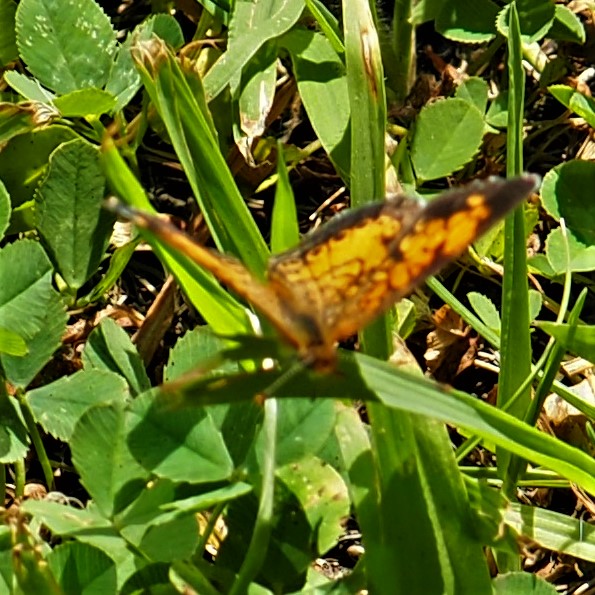
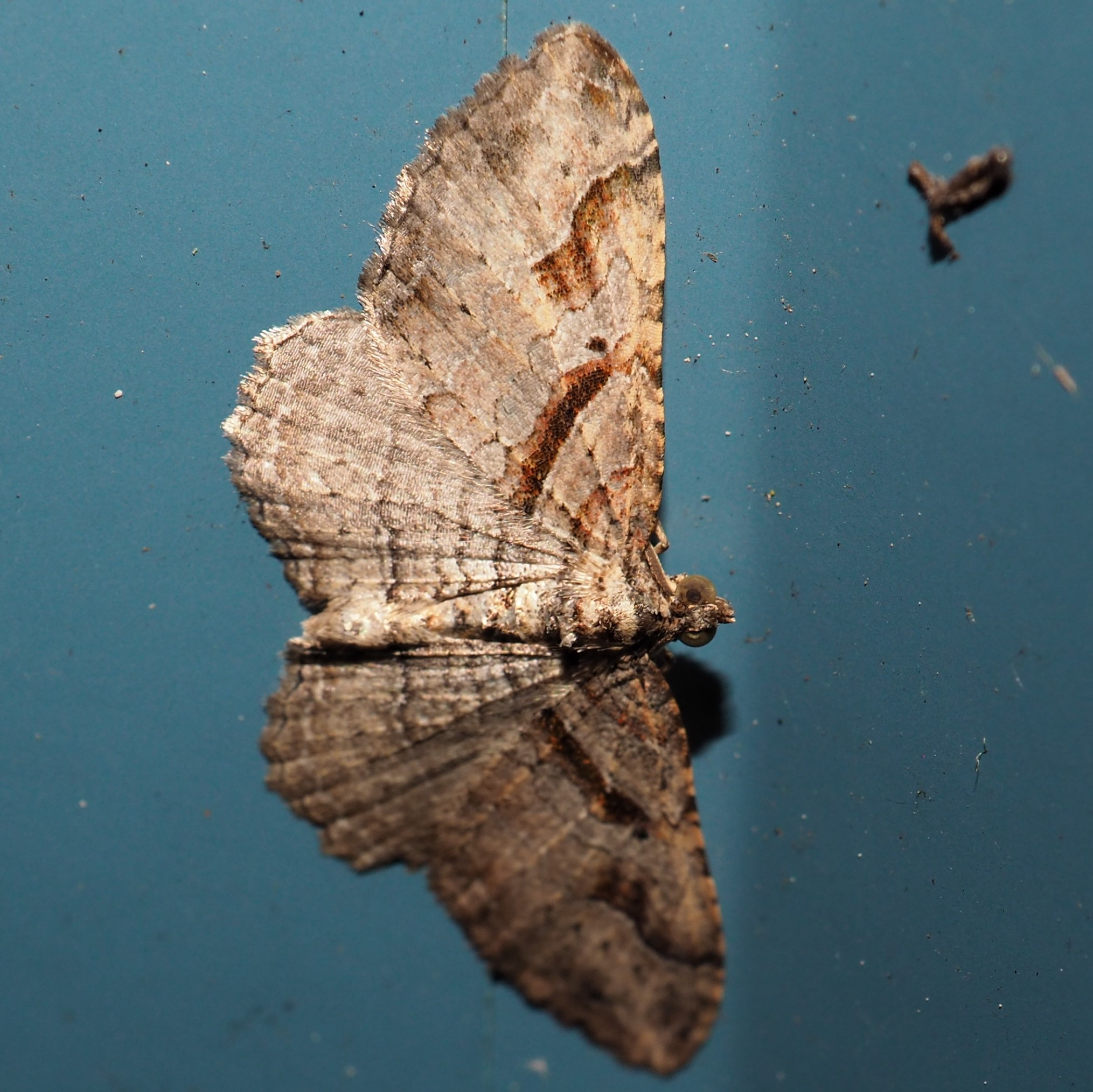
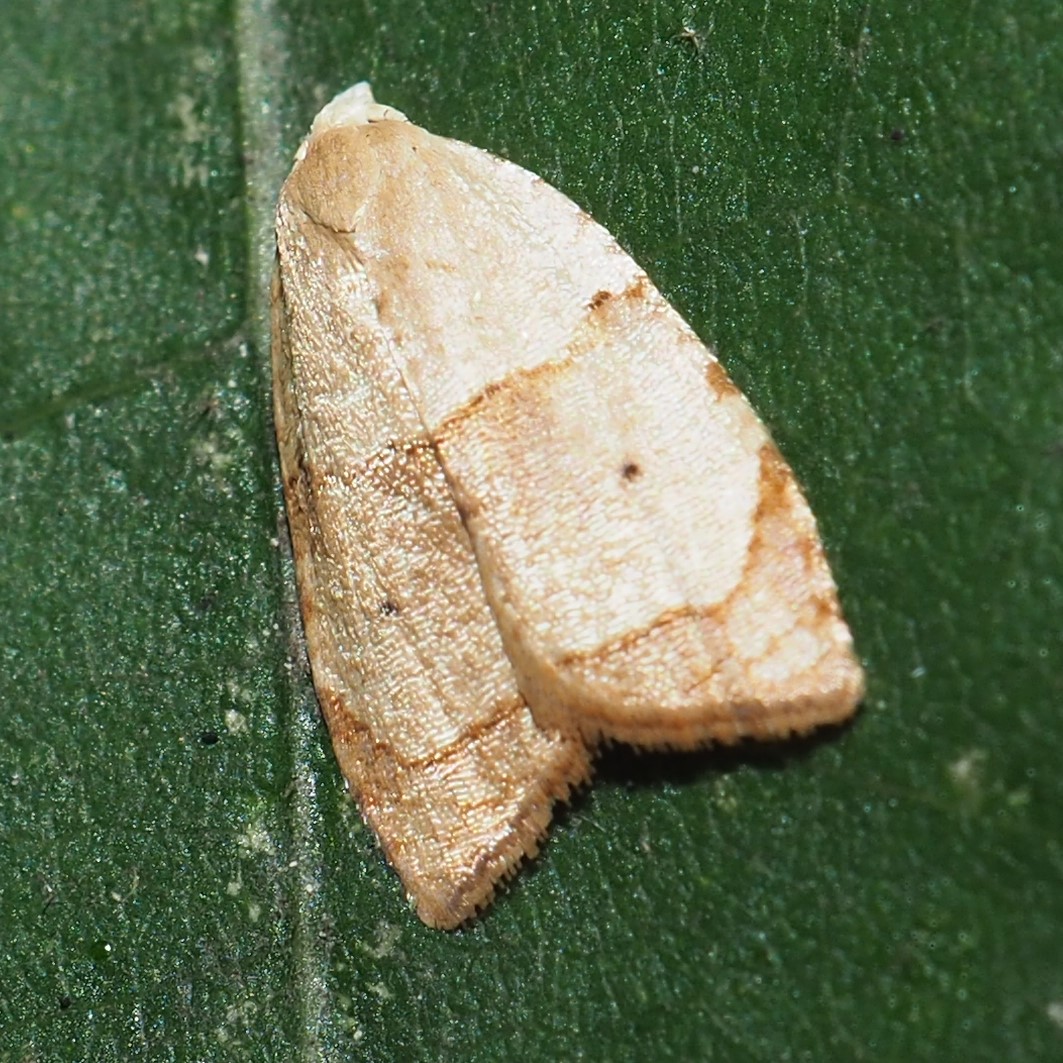
There were more Mystery Moths, like these two, who were also resting in the shade of the shop siding. The second turns out to be the Porcelain Grey. Third was a new caterpillar to me, but @srall of iNat identified it as the caterpillar of a Tortricid Leaf-rolling Moth. I just happen to have a picture from June 2016 of one of these moths, not necessarily the adult of this caterpillar, but close. Here it is.
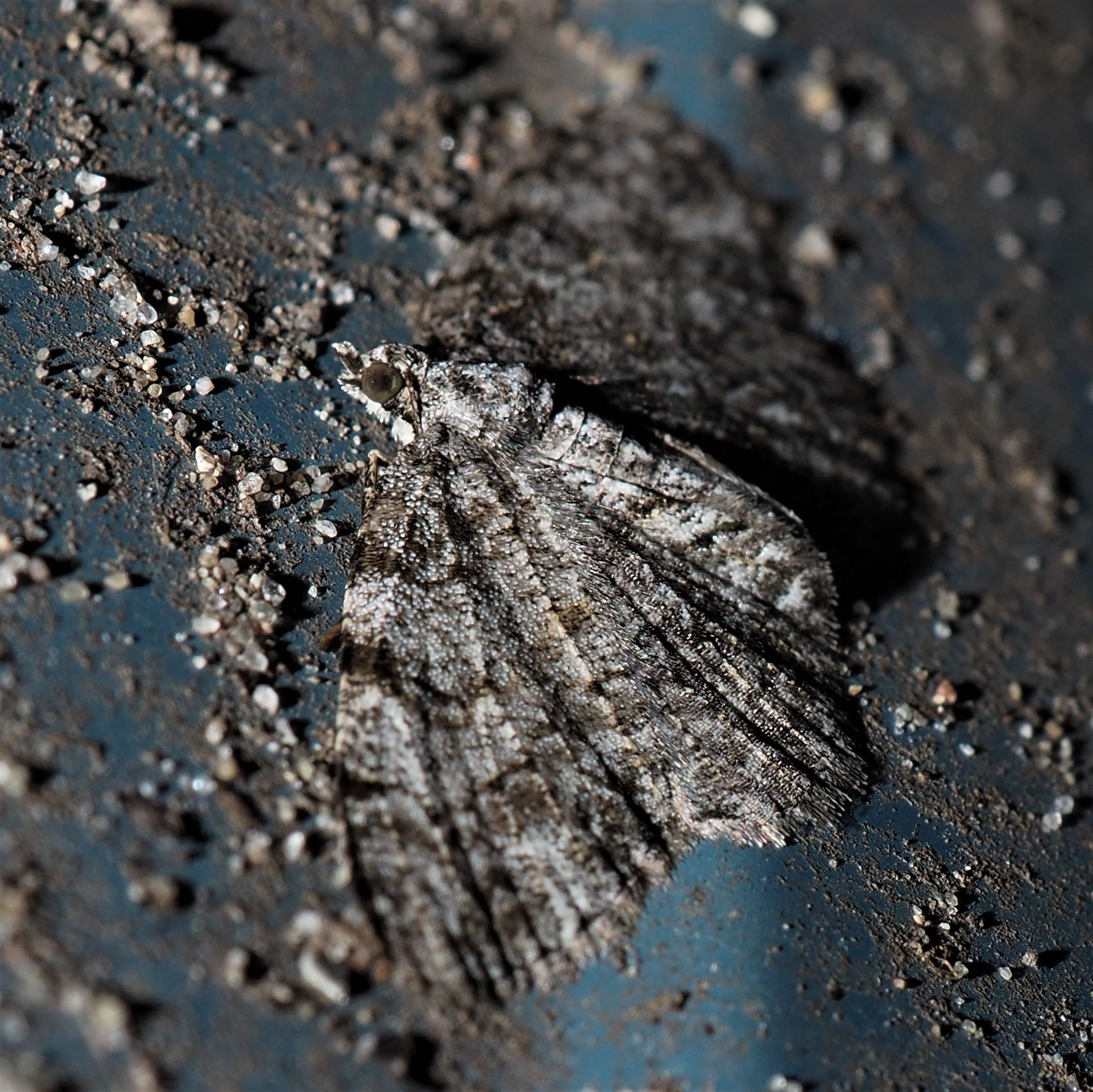
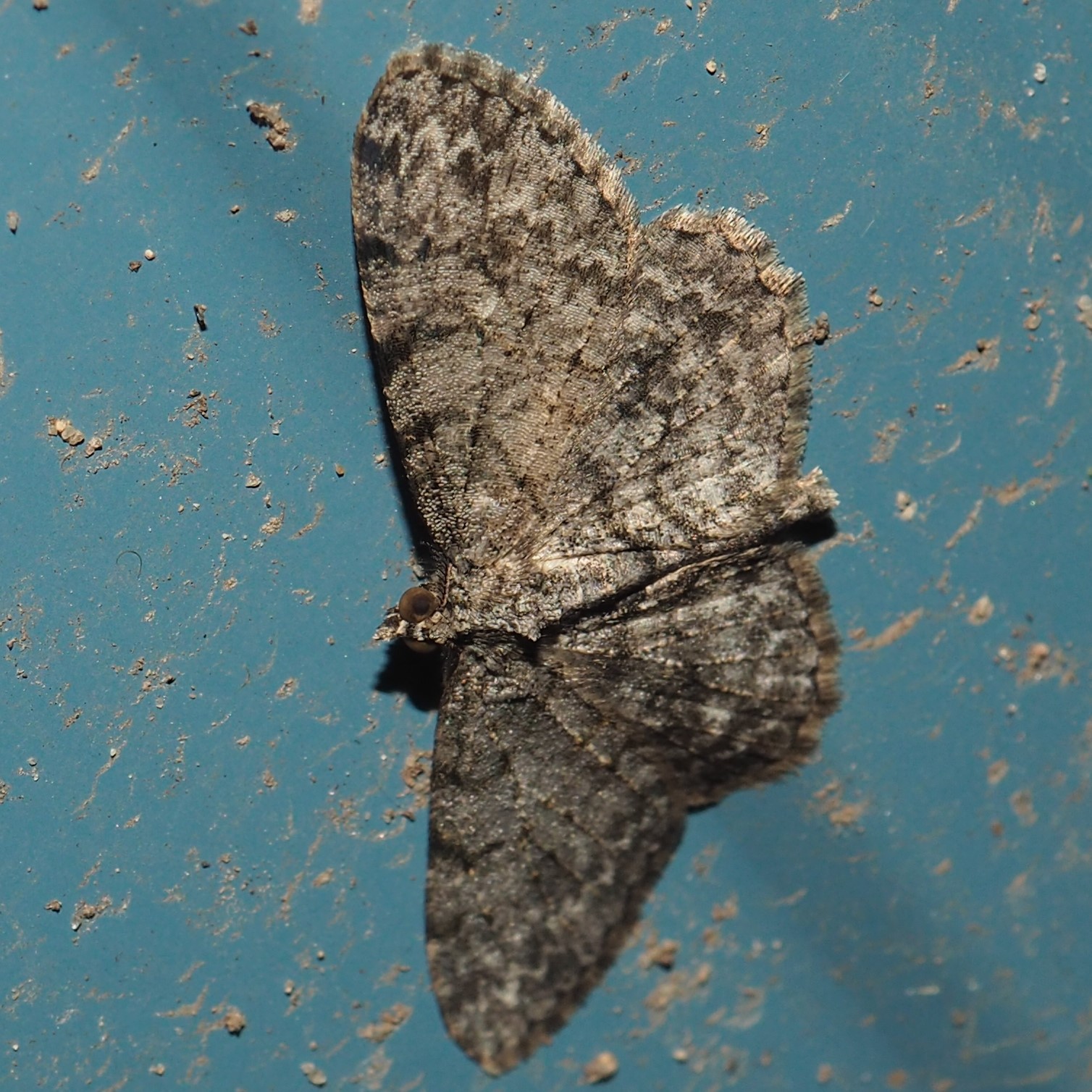
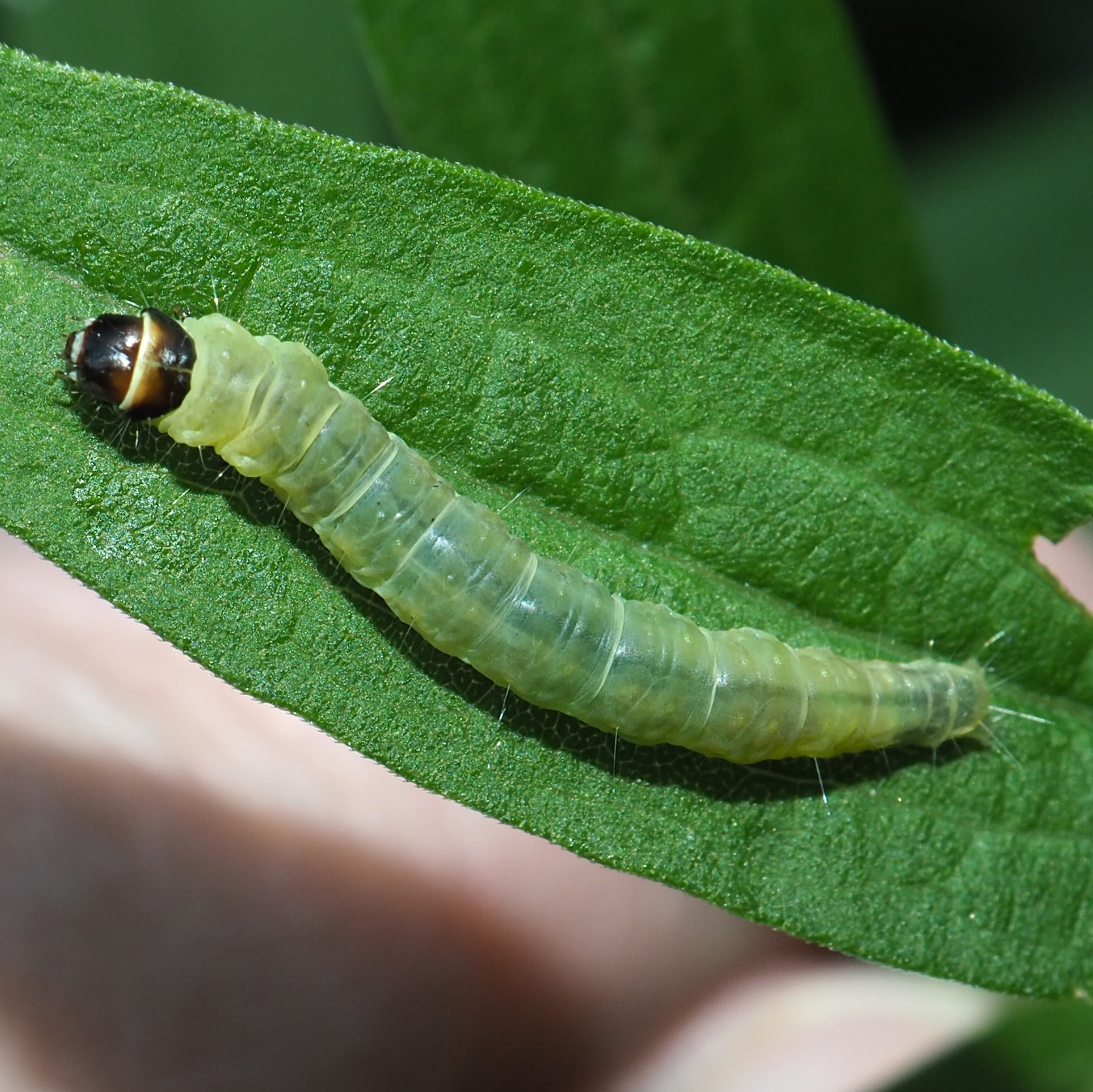
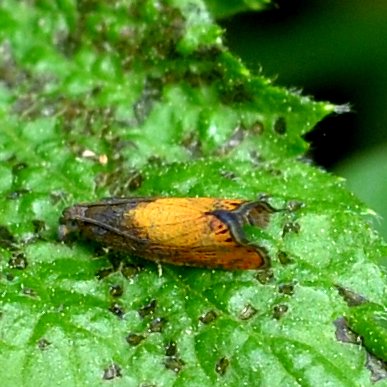
Let's look at some of the Orthoptera (Straight-wings). Two weeks ago, you saw a baby Two-spotted Cricket. Well, yesterday (August 9), not many inches from where you saw it, there was a lovely adult. Here, I'll show you the baby again, just for comparison. Second picture: the adult. Third: I was pulling out a leaf so as to get a better shot, and for some reason, the cricket walked off the leaf and began to taste my finger. I didn't notice this until I felt a tiny pinch: no harm done, but I retracted my finger and let it go back into the leaves.
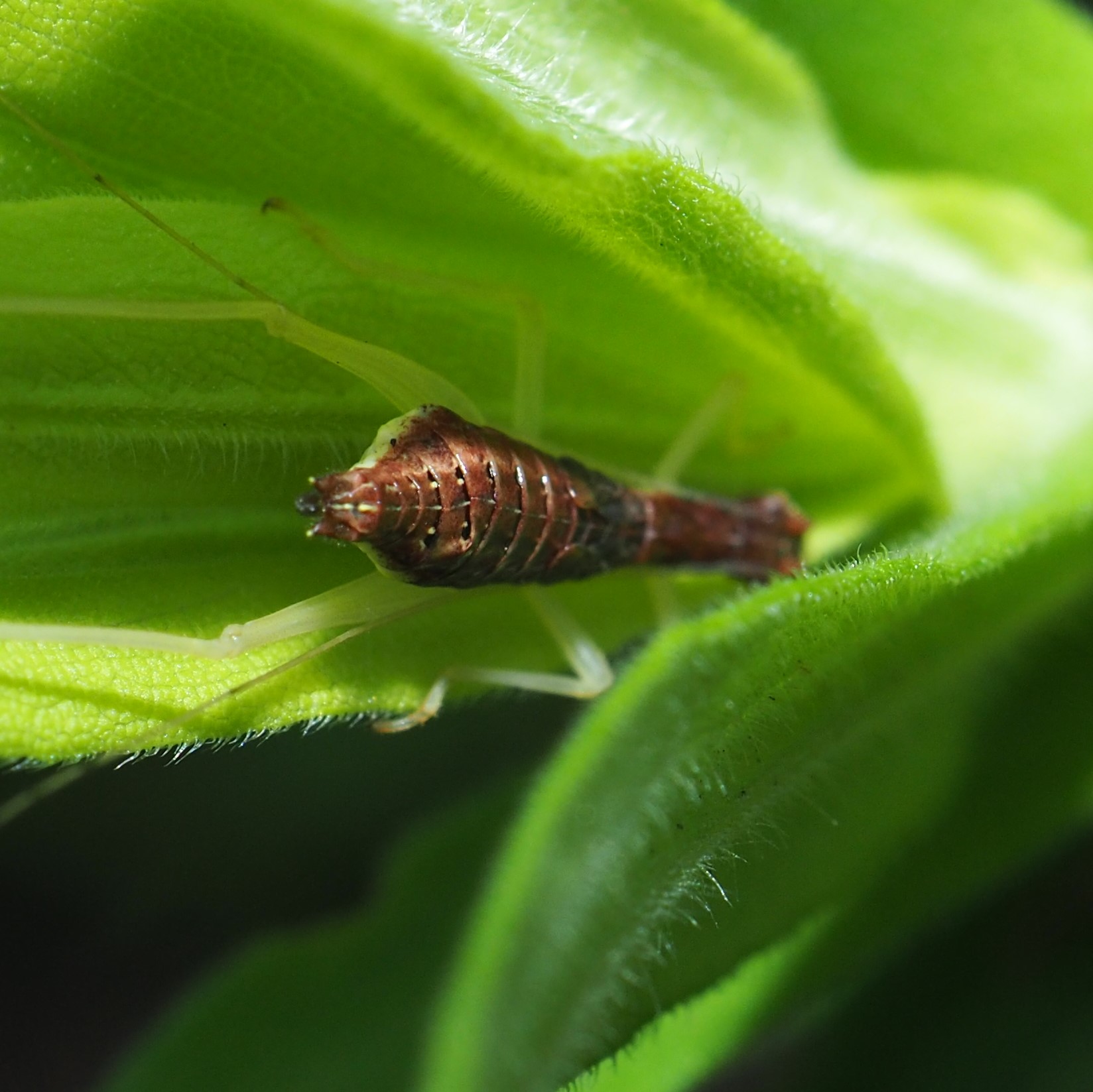
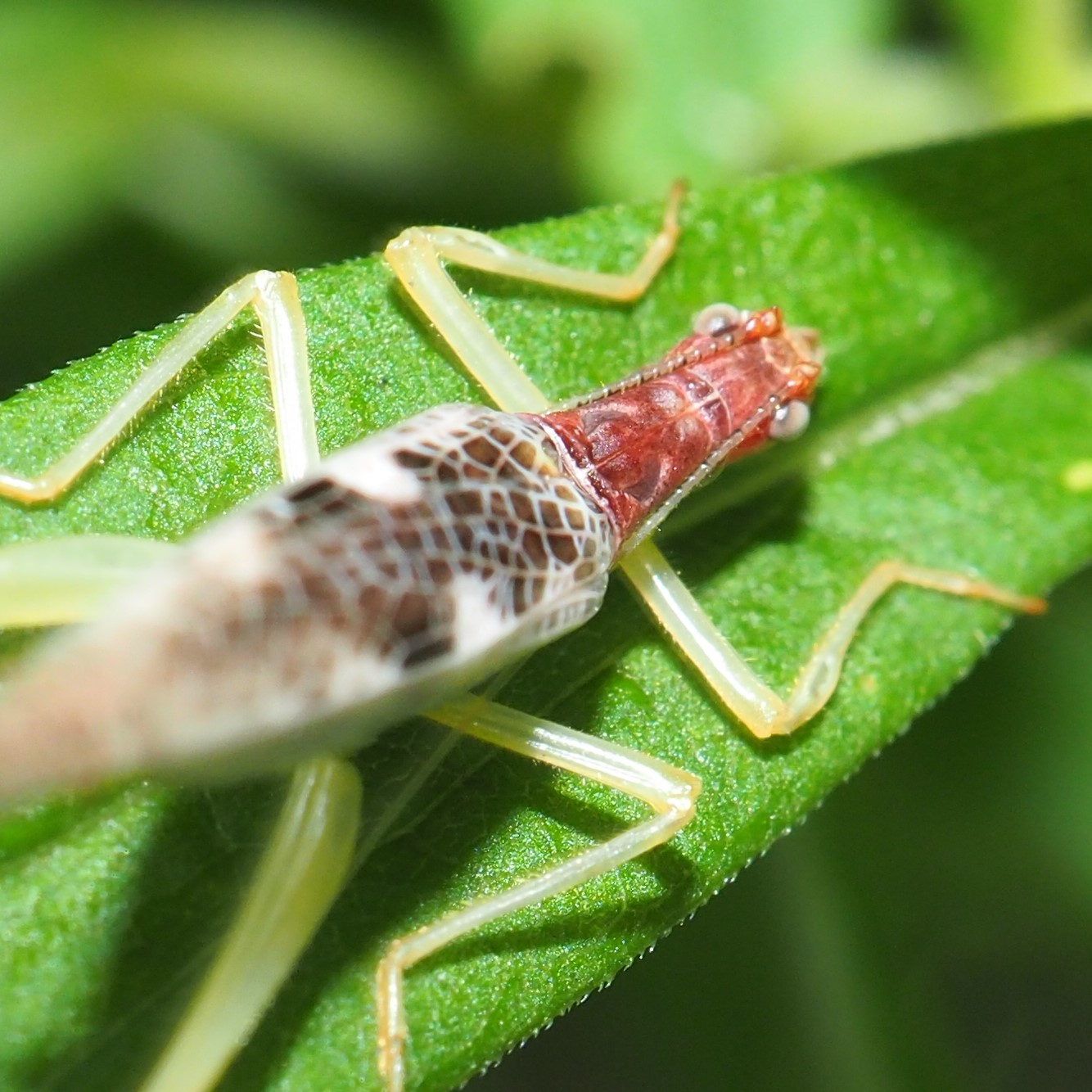
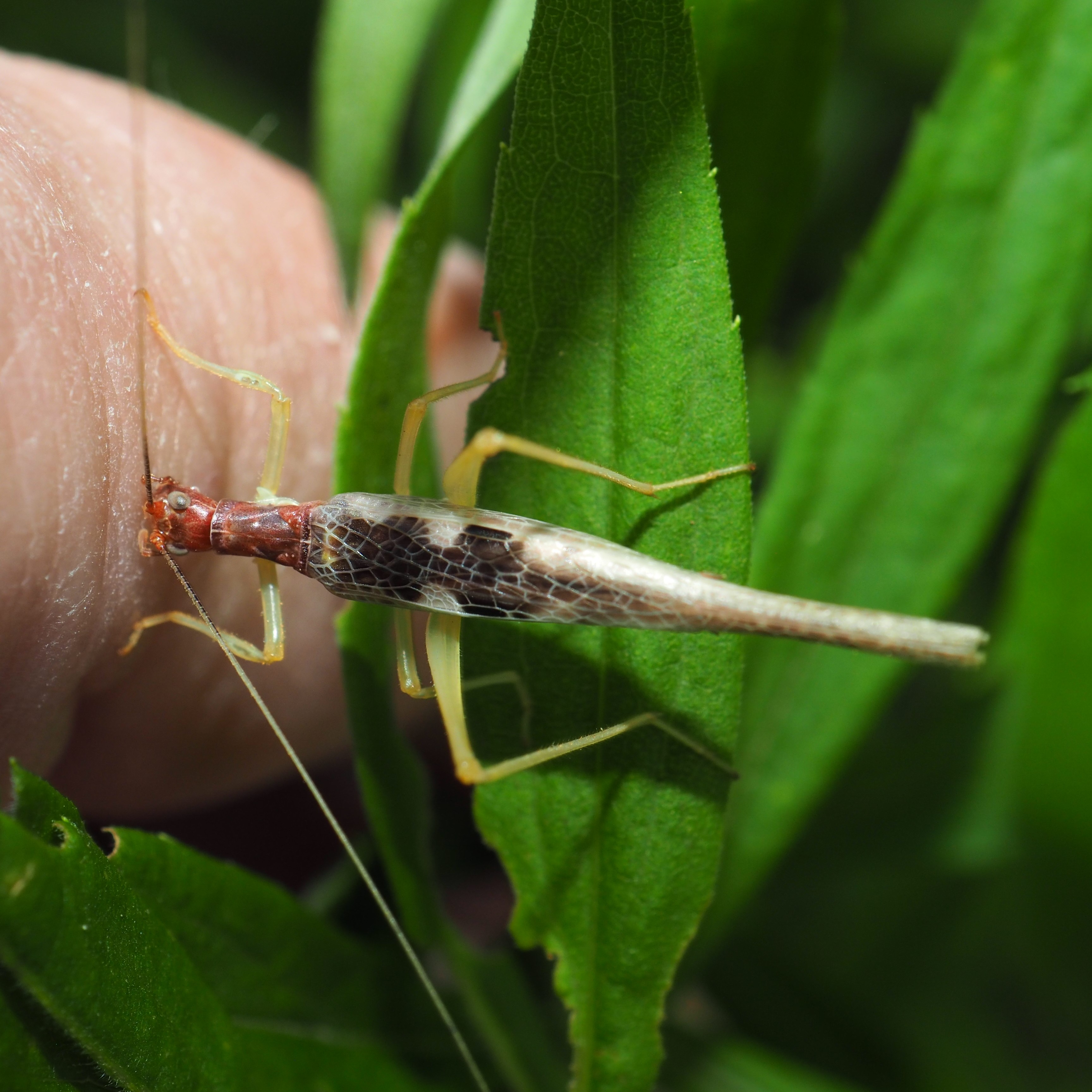
Here's that little grasshopper of genus Melanoplus, the one that scoots up and down the shop wall, this time on a plant. Second is another kind of tiny green grasshopper. The last two images are of that Scudderian Bush Katydid, maturing nicely. Can you tell that this one is a female? Her ovipositor is quite advanced, but you can see her wings are only partly developed. Last is a frontal view. She seems to be sizing us up. Aha, she says, a female human advanced in age. Better be kind to her.
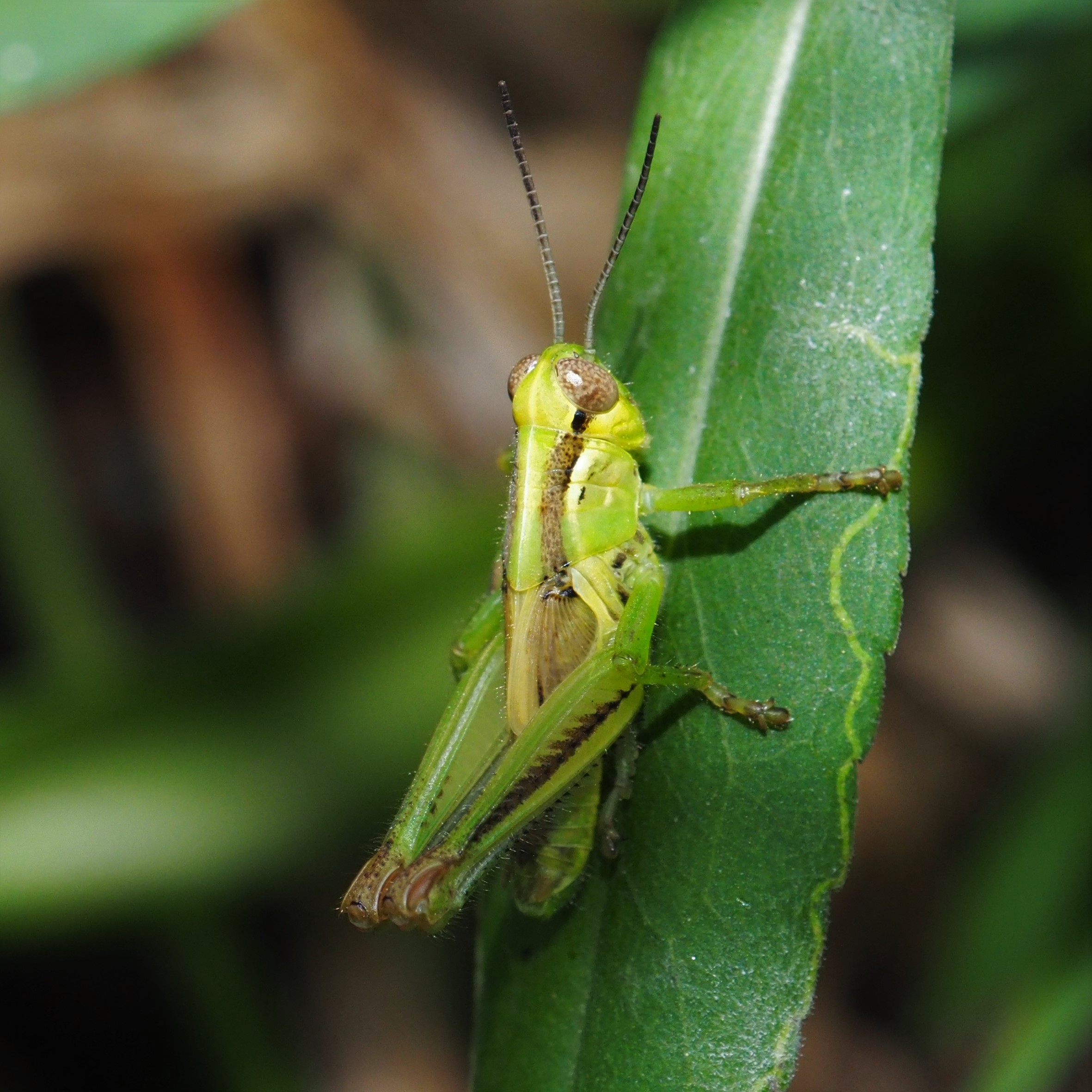
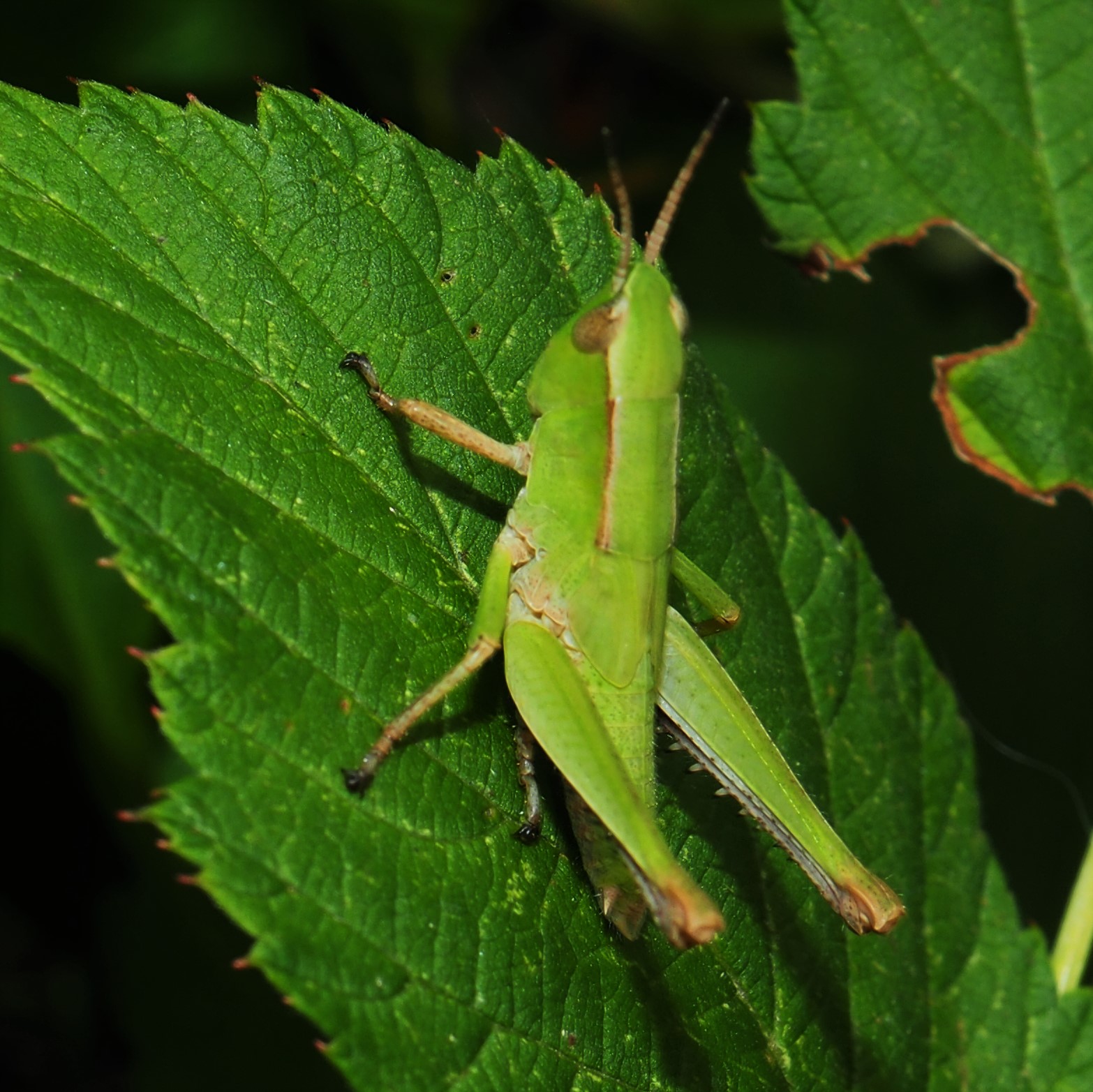


The most common Dragonfly in my yard continues to be this little Meadowhawk. But this pretty little damselfly came and lit on the goldenrod for a moment. Joshua Lincoln of iNat identified it as a Skimming Bluet (Enallagma geminatum). I love its rainbow eyes. The other morning at about 6:30 a.m., I was standing at the backyard-facing upstairs window and suddenly noticed something sailing through the air at about my eye-level. Back and forth. Finally I was able to see that it was more like a dragonfly than anything else. Back and forth gathering mosquitoes, I think. What an exciting sight!
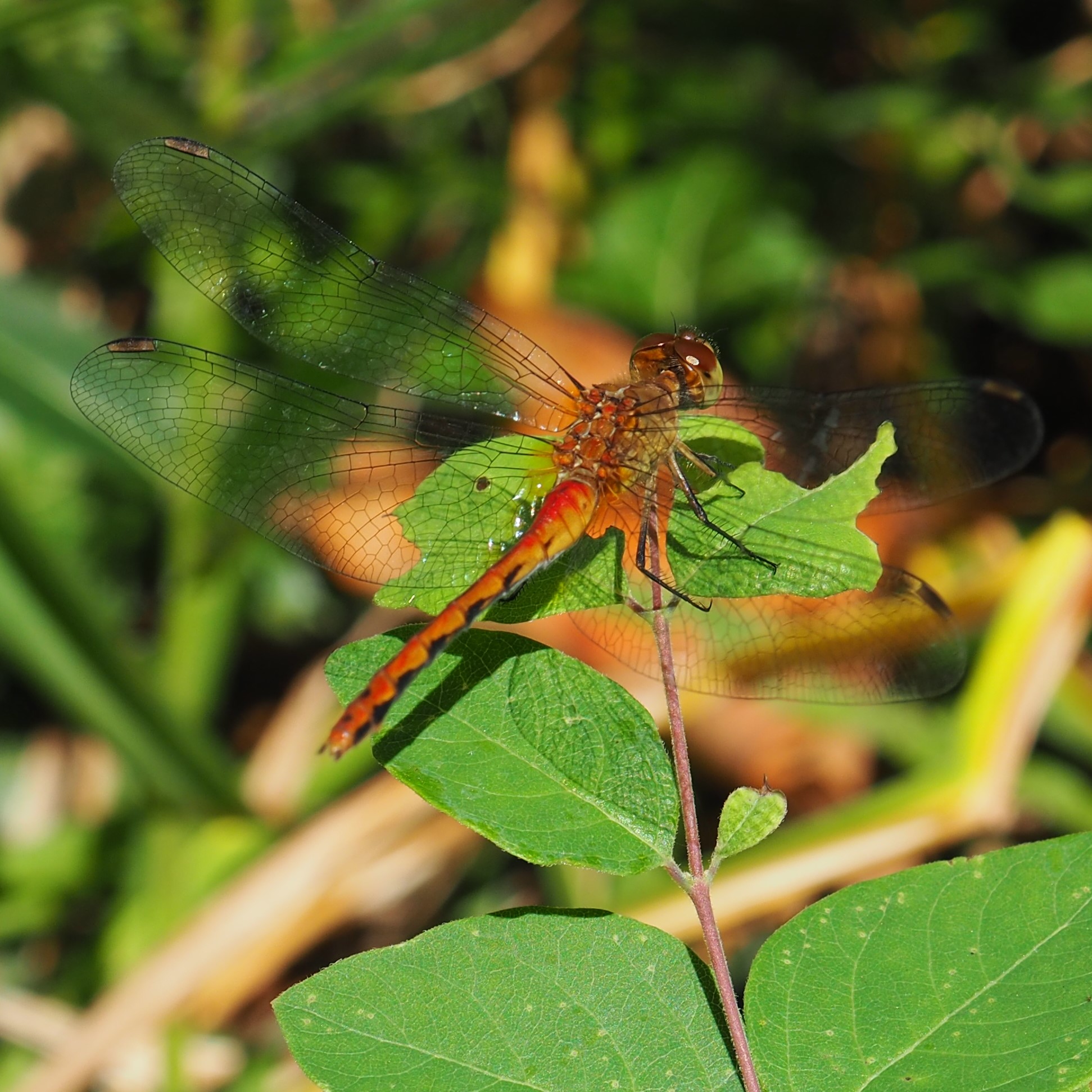
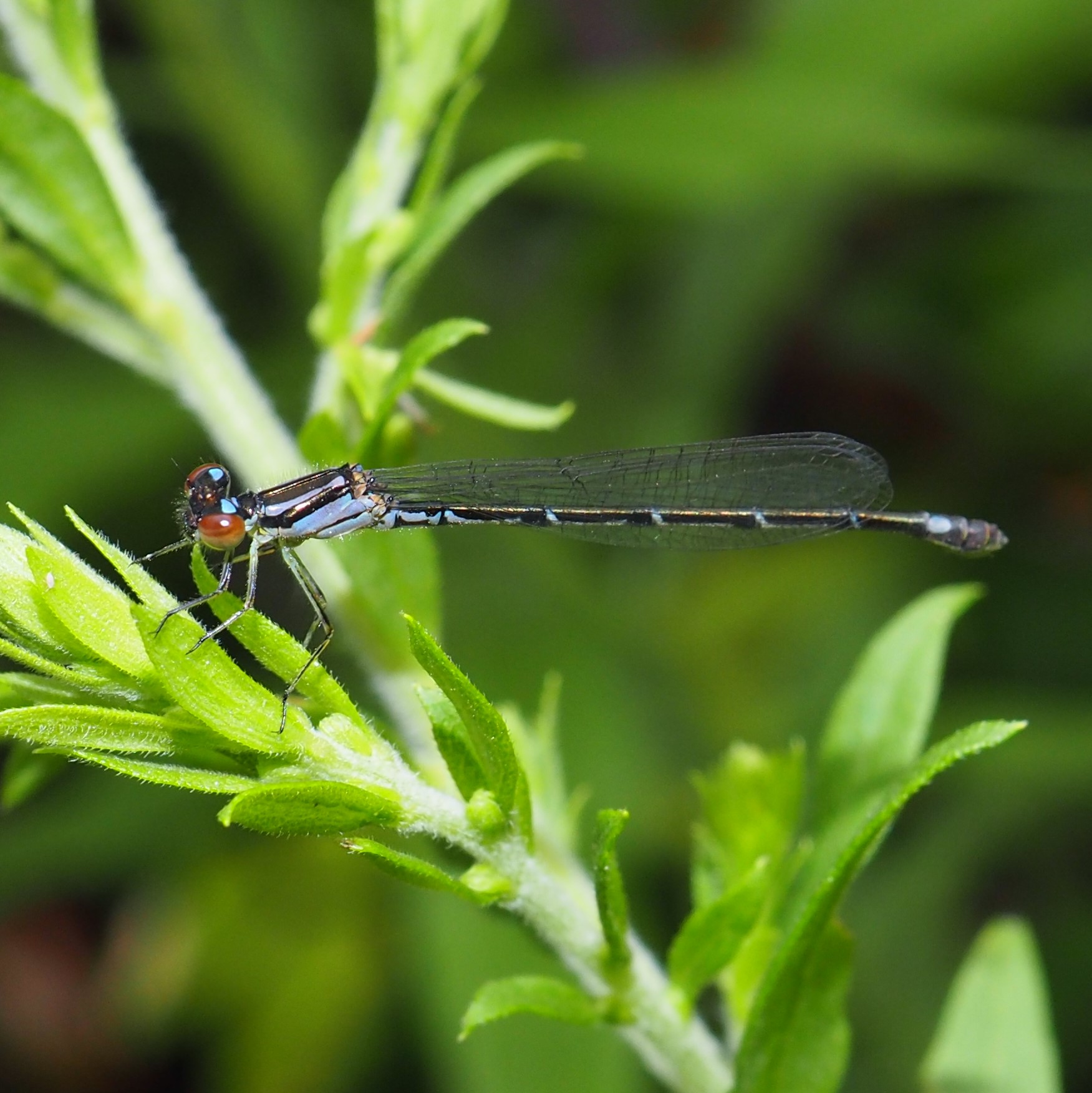
The pond plants and fish are getting back into their original shapes, now that the seven Raccoons are missing. I don't know when the next batch will find their ways from the storm sewers, whence they emerge at sunset to go a-marauding in people's yards. But for now the lilies are getting their strength back, and the fish are hungry.
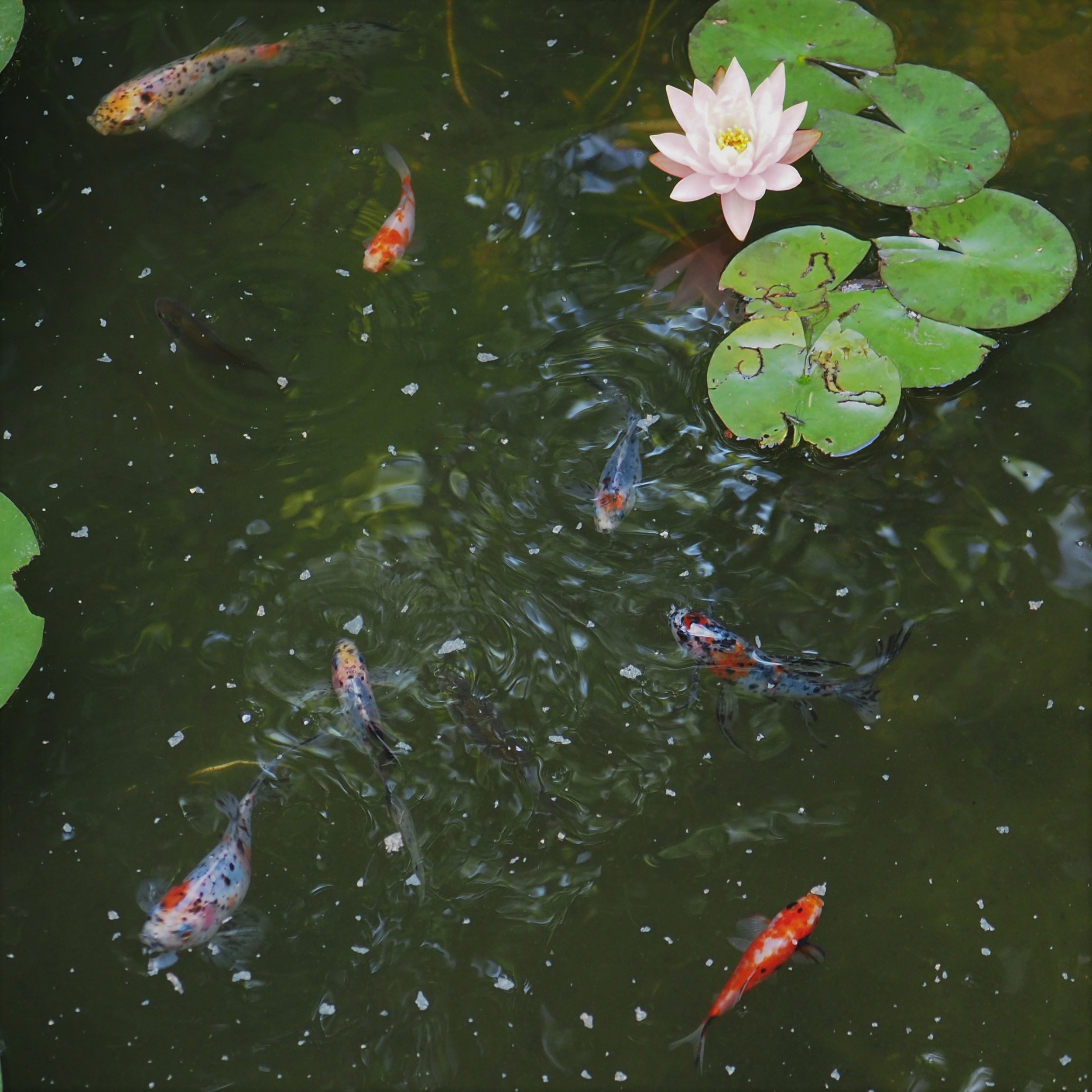
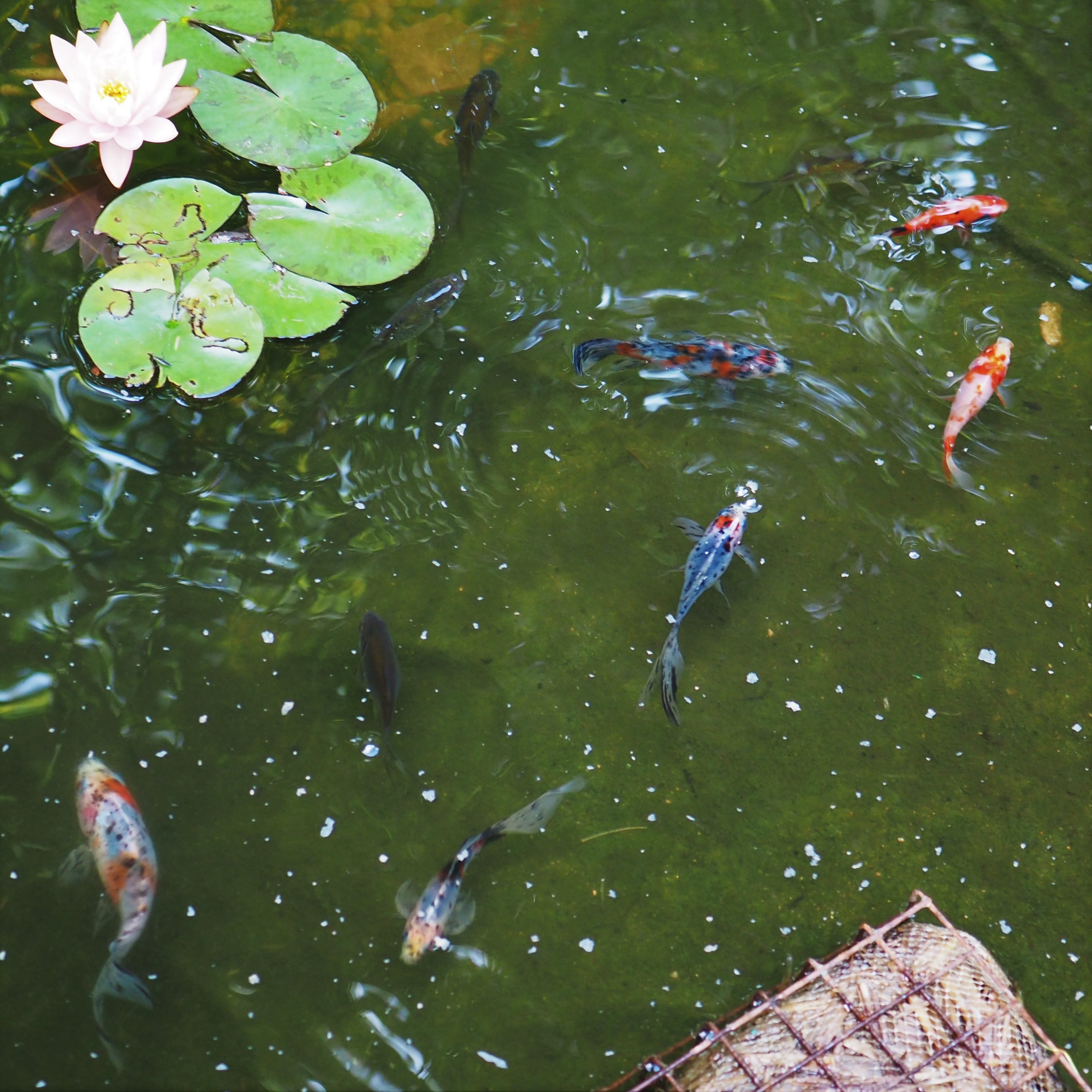
Fly Time! As usual, we start off with the Crane Flies. The "Block-printed" ones dominated the scene. It seems there are a couple of distinct patterns, but mostly they vary by the amount of opening and closing the wings.
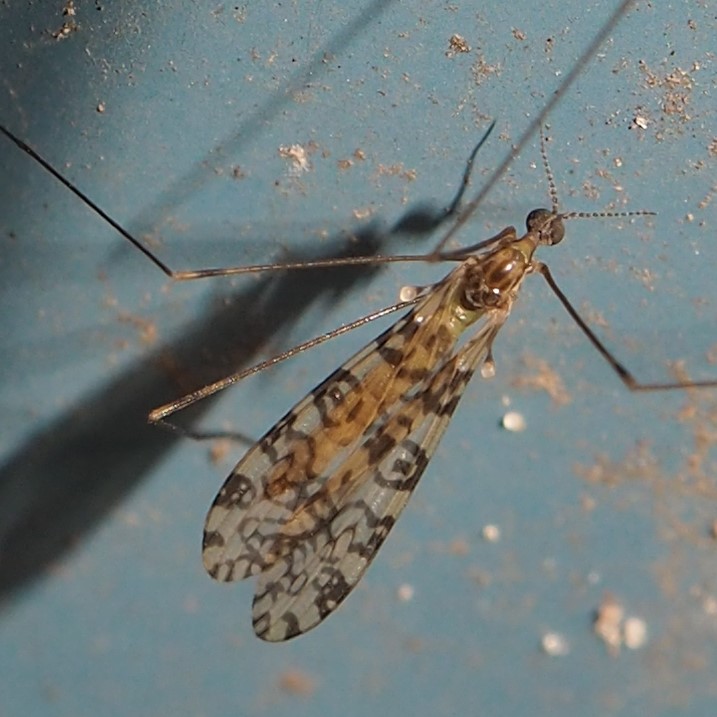
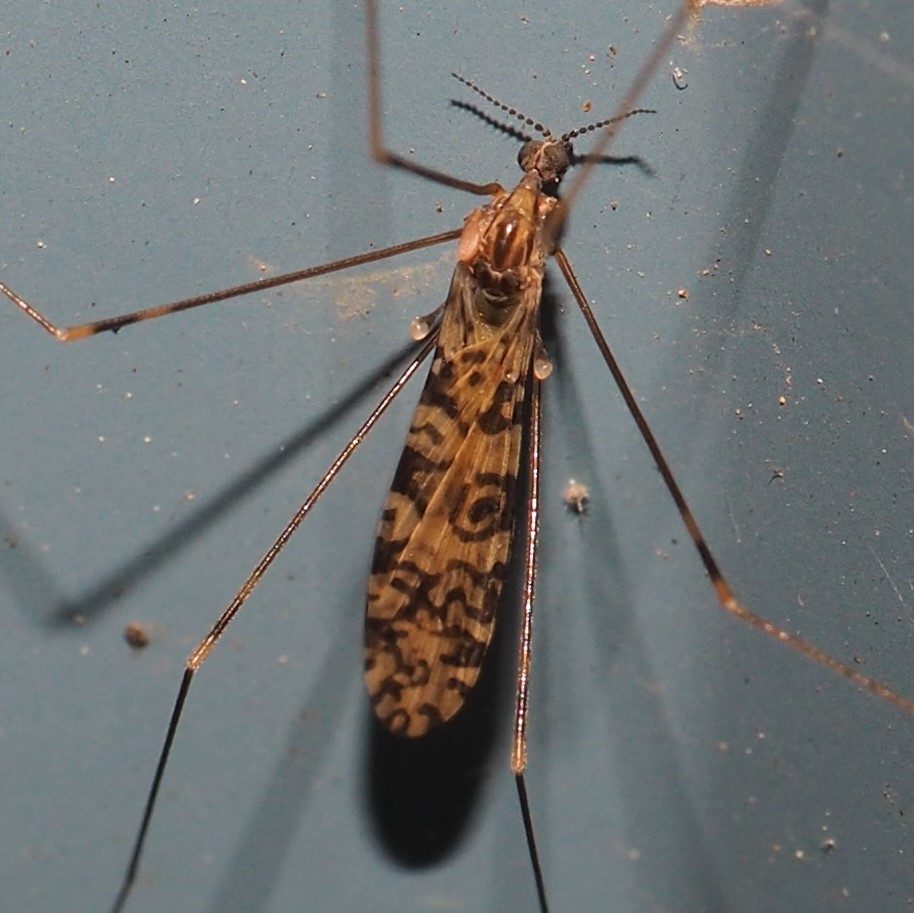
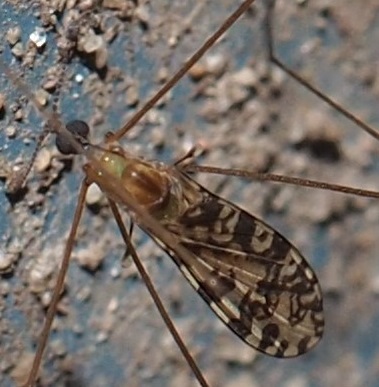
Here are some midges. The first two are Non-biting Midges. The third is a Gall Midge. I'm only becoming at all aware of galls, but essentially, the larvae of the Gall Midges cause swellings in parts of their host plants.
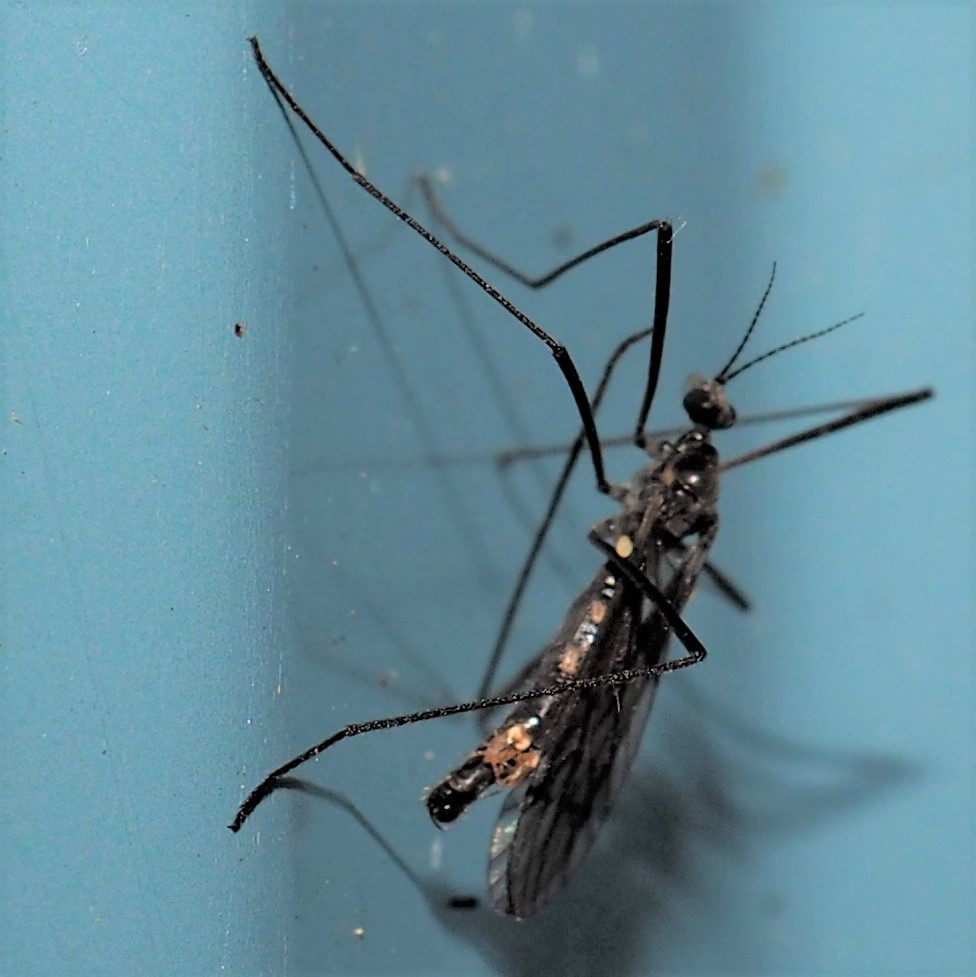
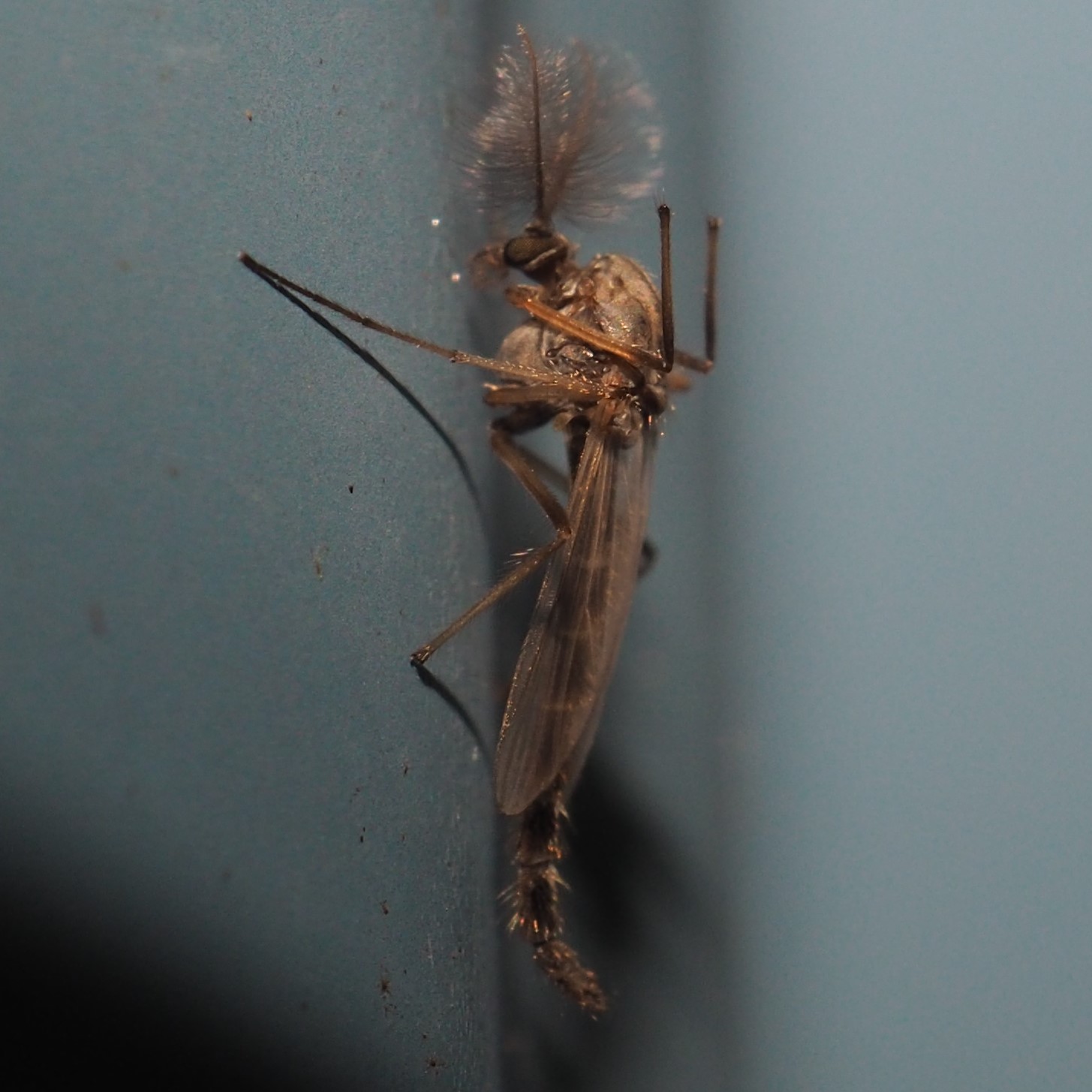
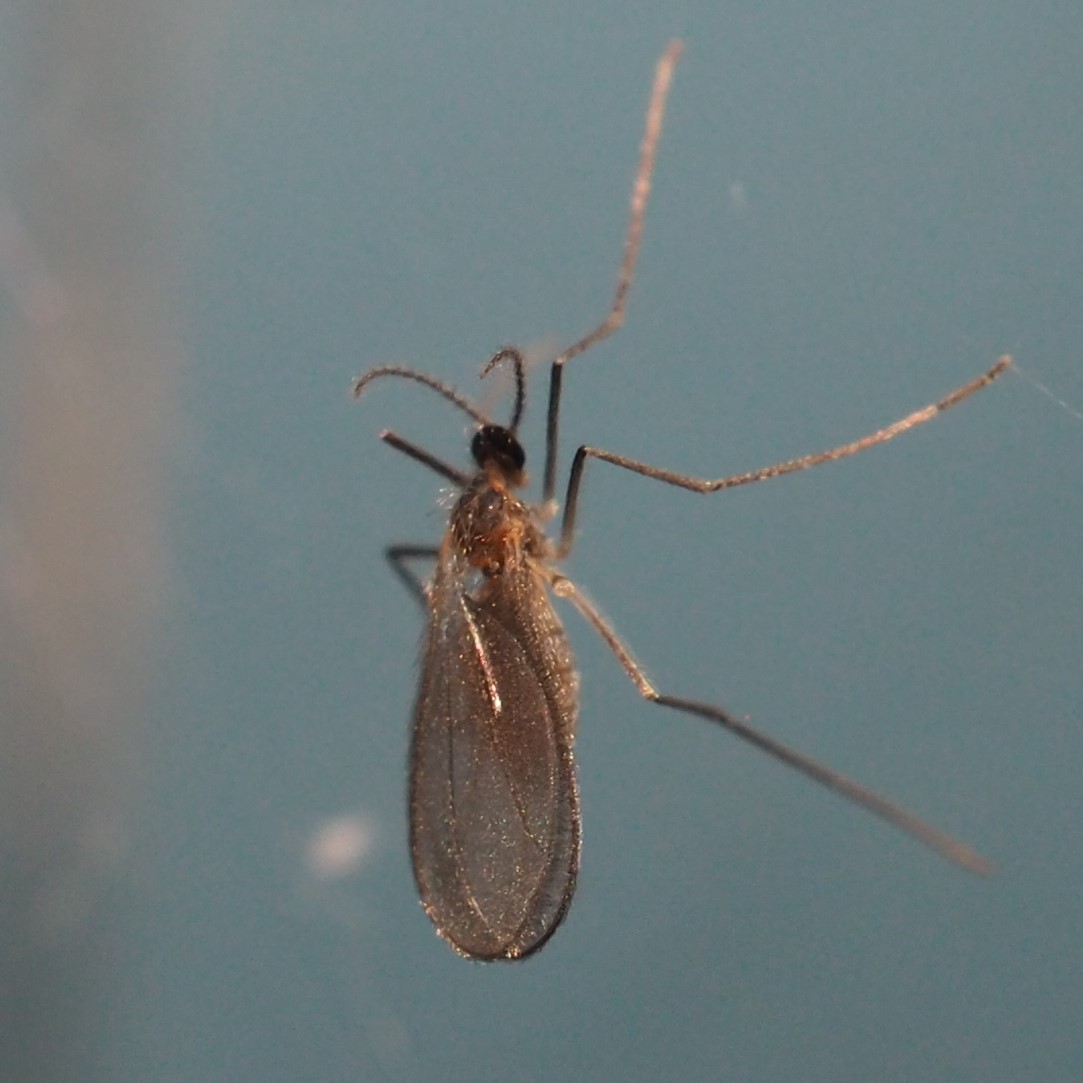
Here are a couple of examples from iNat where the Gall Midges work on their hosts.
Gall and Forest Midges
Grape Hazelnut Gall Midge
Many kinds of creatures can cause these deformities, such as Mites, Wasps, and lots of others. I'm going to come back after Flies to talk about Galls, etc.
Here are some cool Flies. Most of them don't have ID's yet. First off, a Fly in the Goldenrod. Then a Fly in the Jade Plant. Third is a pair of mating flies in the genus Liriomyza. These flies mine the leaves of various plants. For example, the tracings in number 4 are caused by Liriomyza eupatorii, a member of the present genus.
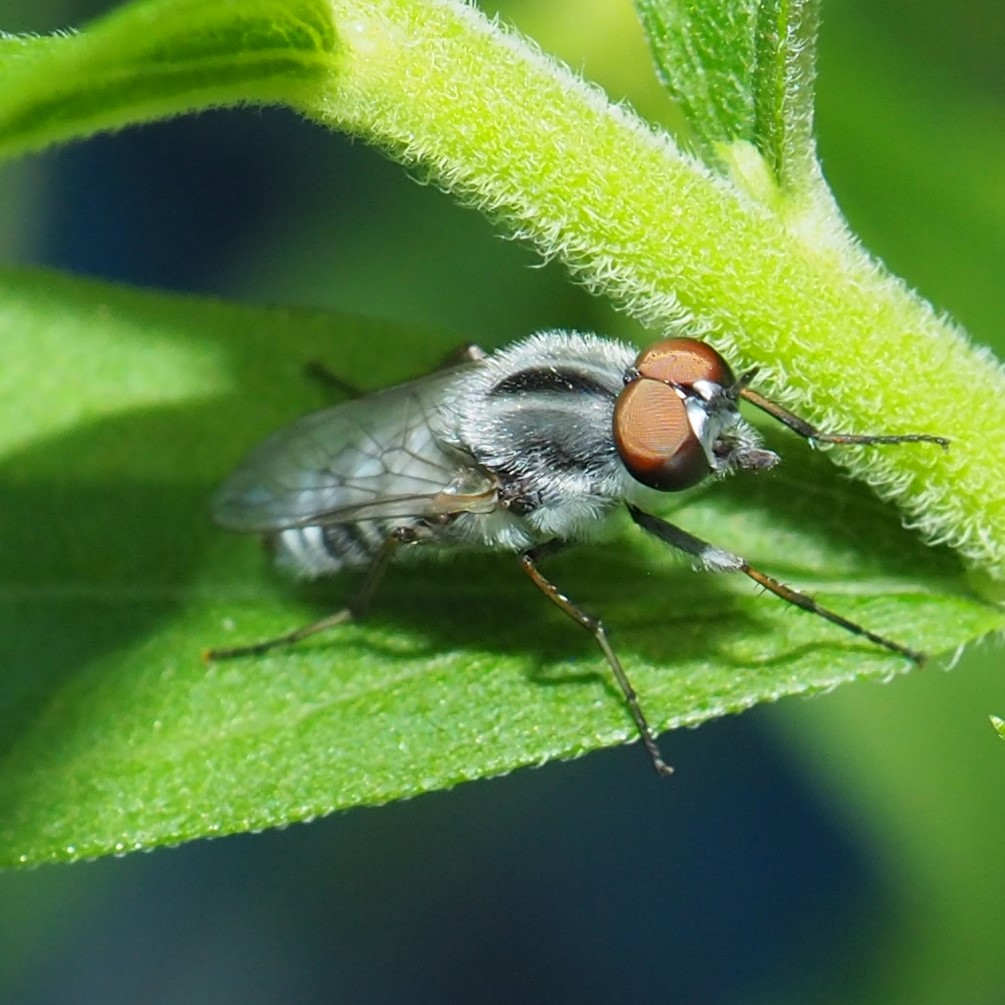
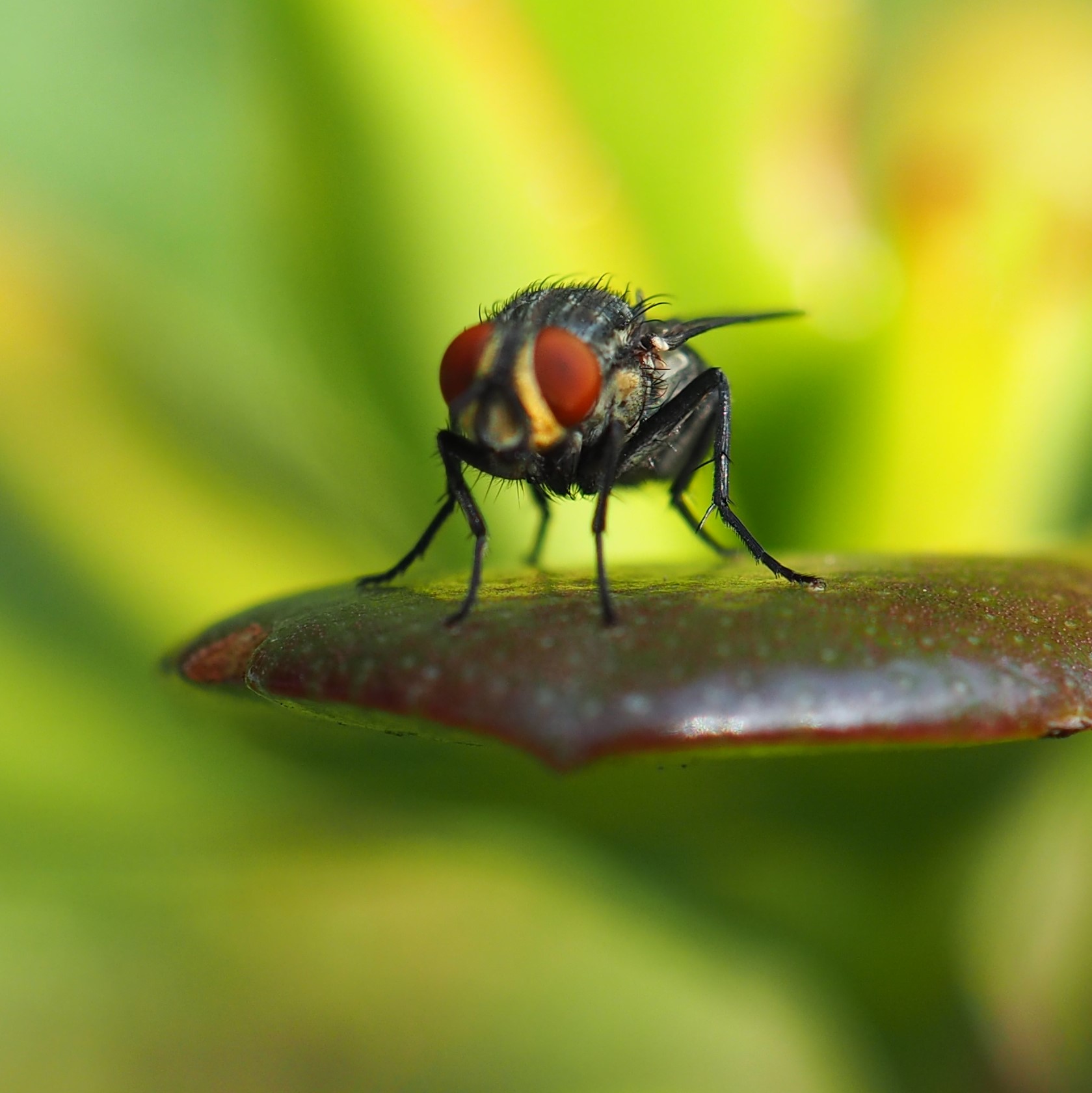
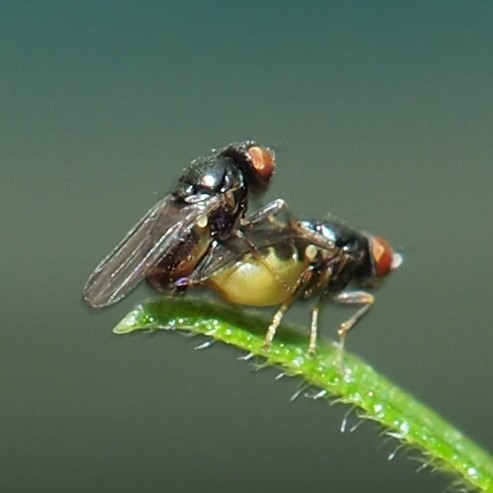
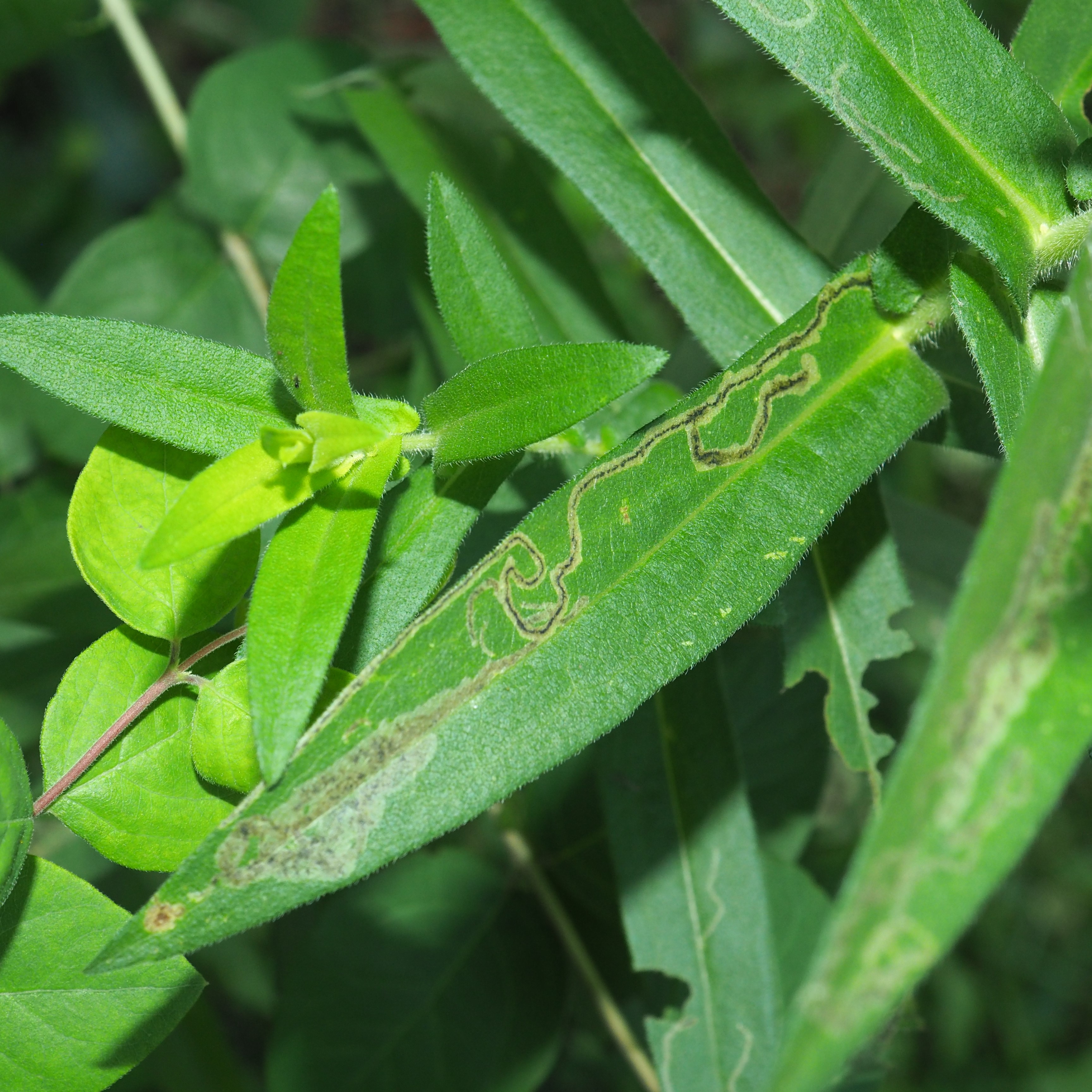
Here are a couple of Moth Flies. Are they the same or different species? Your homework! Third is probably in the genus Sullia. Love the color!
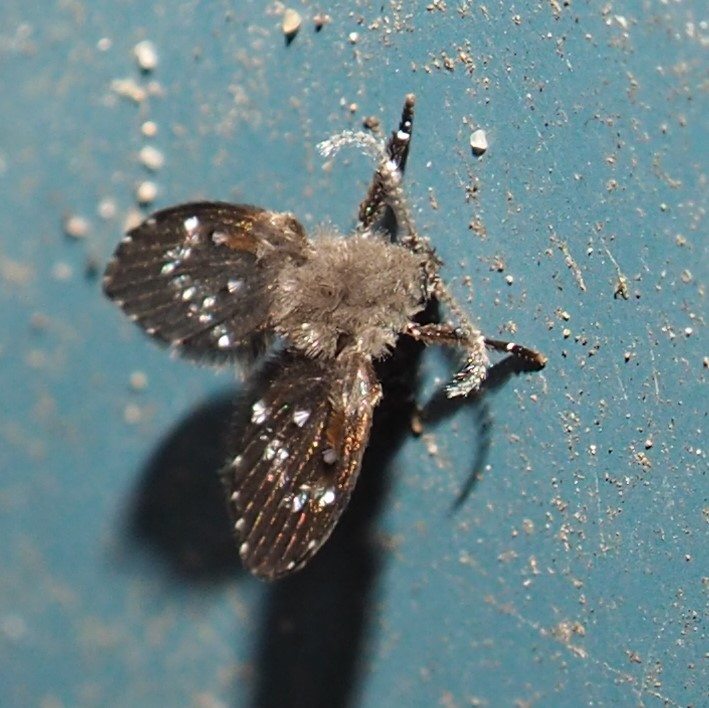
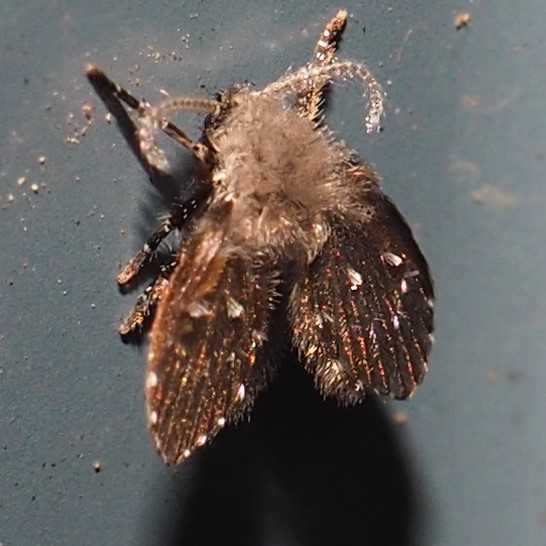
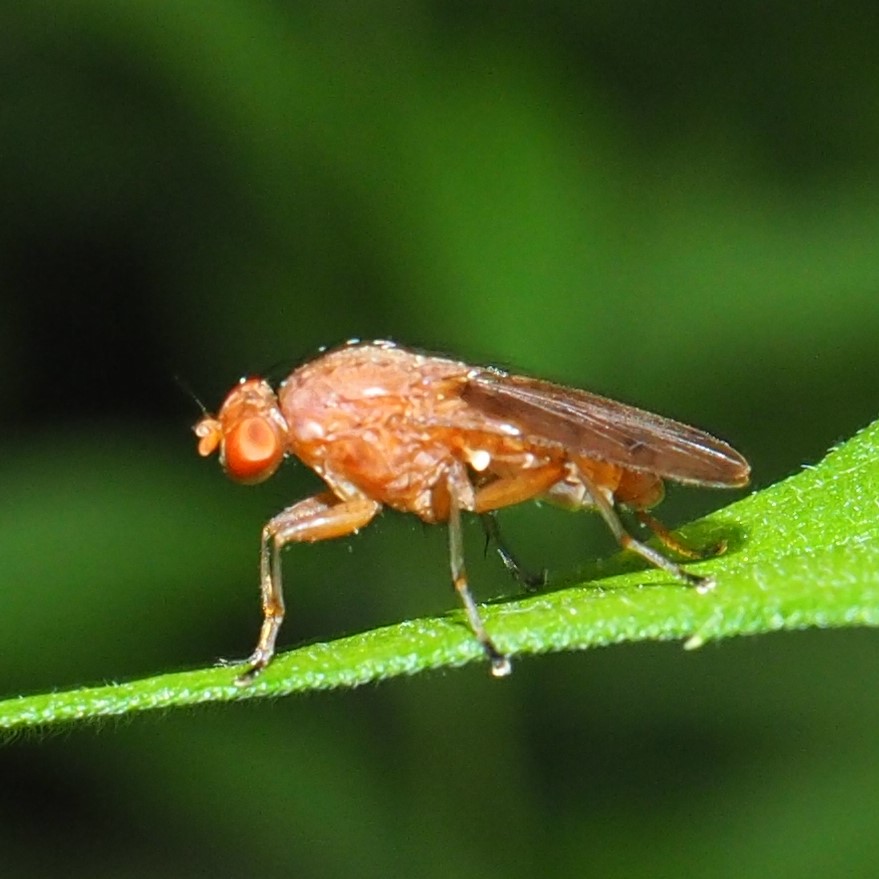
Here are a few more old friends. First is the female Quadrate Snipe Fly, then the Sarcophagus that eats dead matter. The Long-legged Fly jumps when you take its picture and so you end up with a blurry picture in a different place. Fourth, the fly was still in the air when the shutter slammed. I've got to learn how to speed it up. (I know, I know, I have to read the manual.)
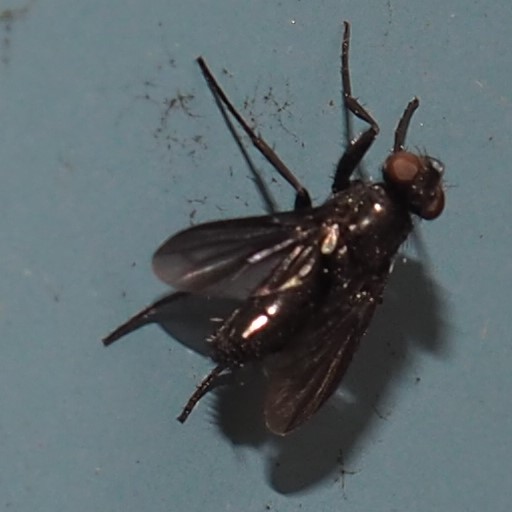
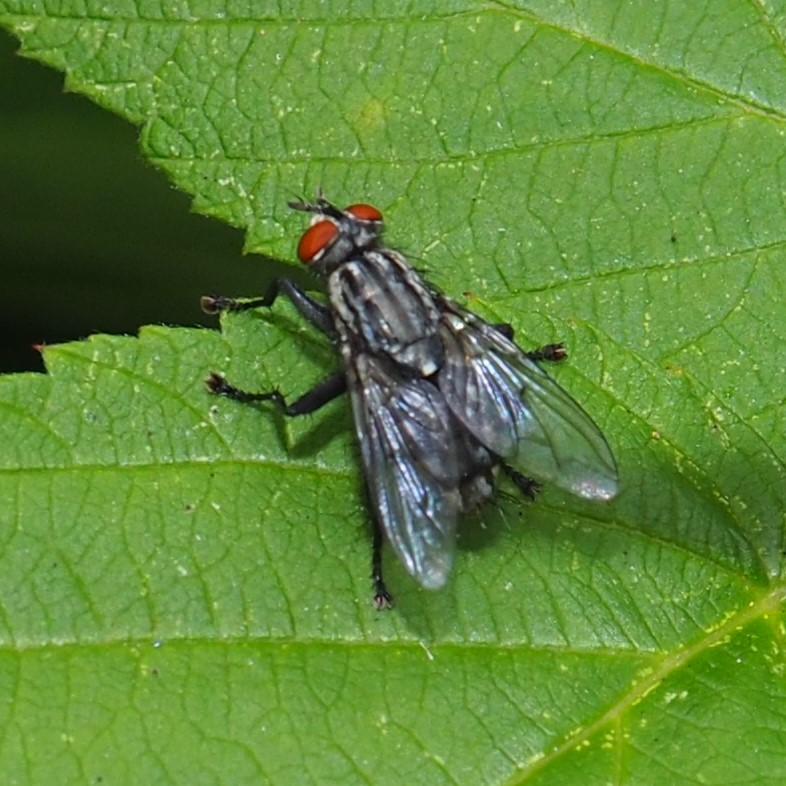
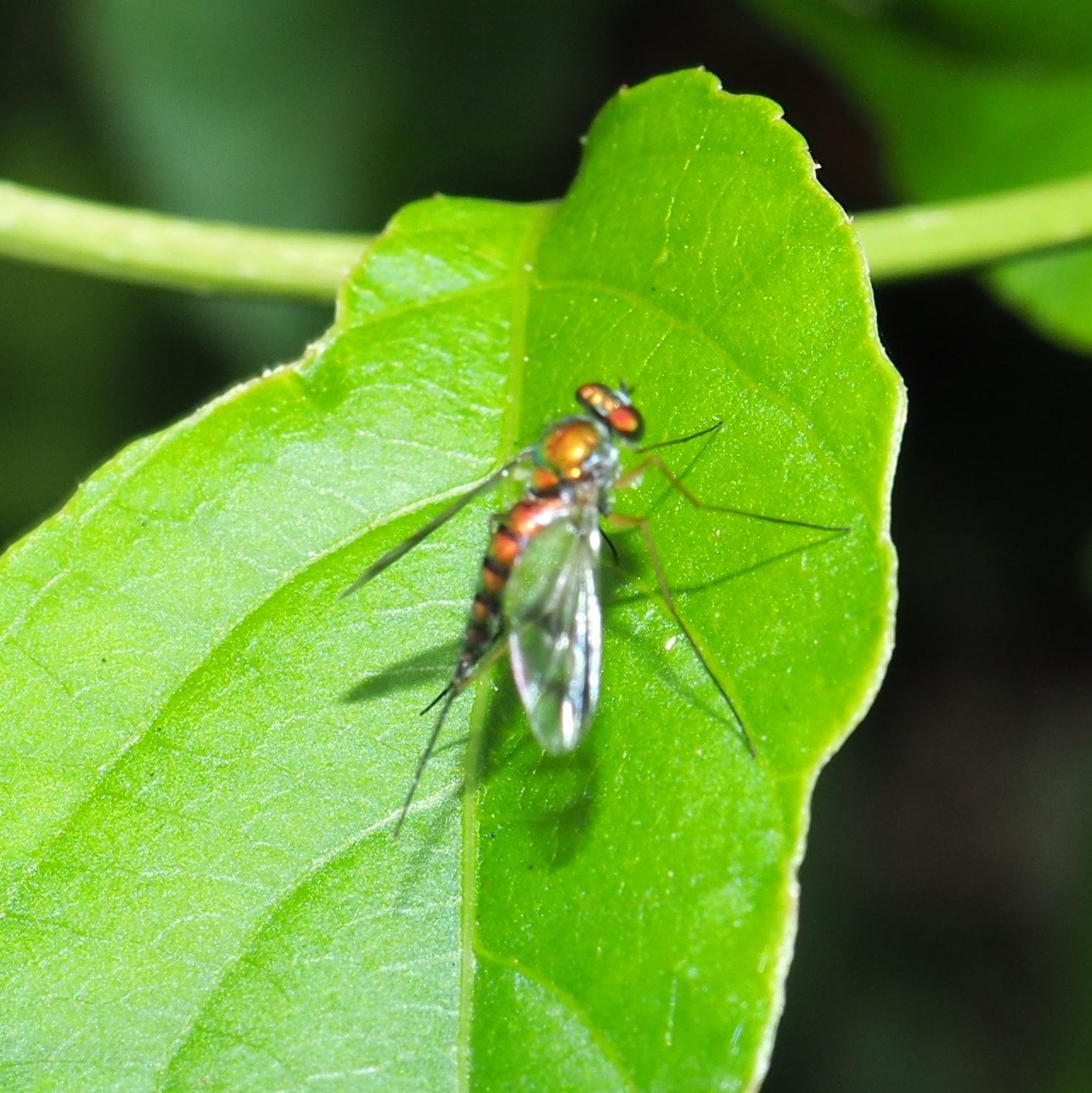
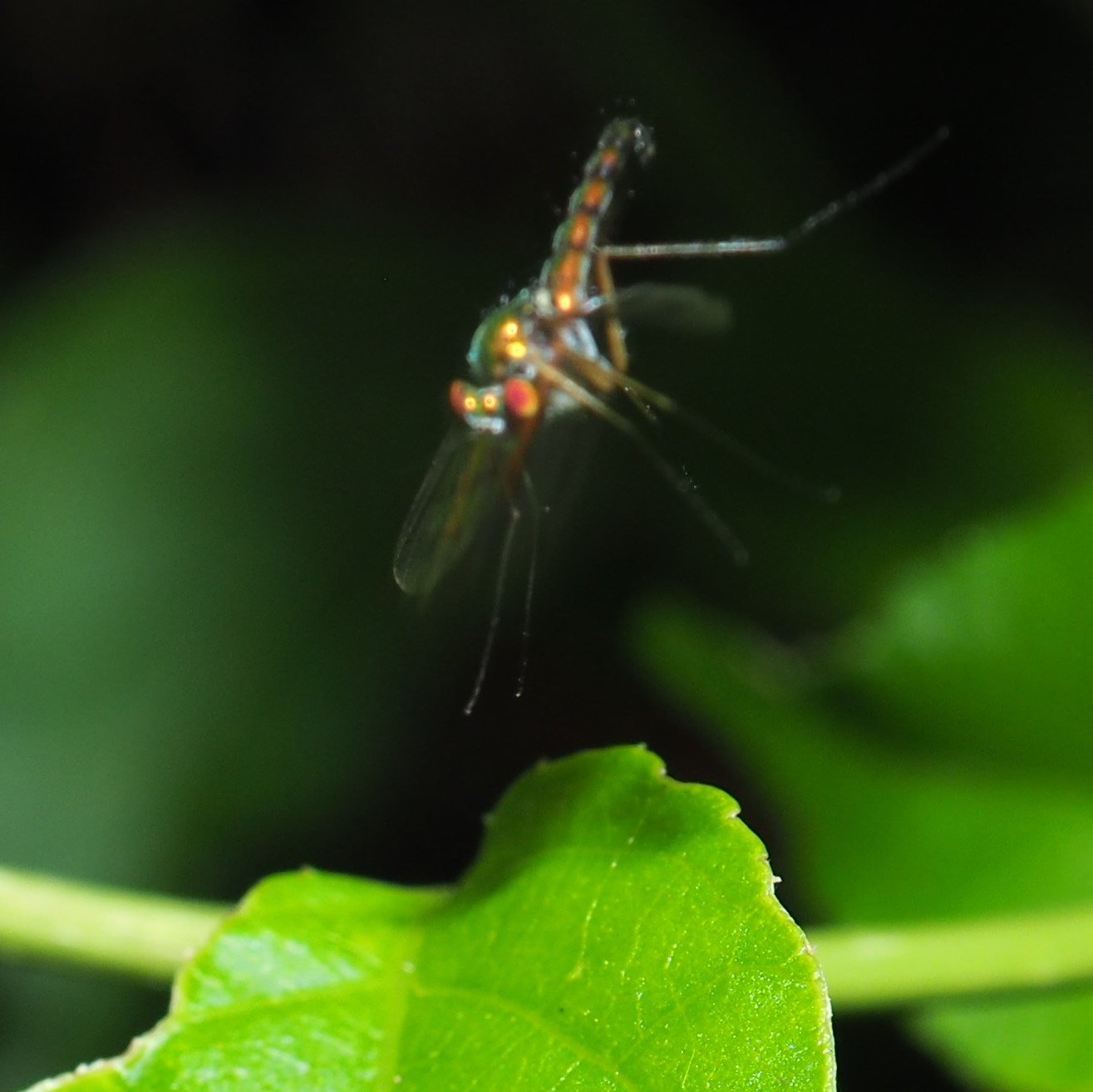
I'd like to go back to thinking about galls. It's sort of a generalized term for strange happenings caused in plants by some kind of creature. Generally, the critter lays its eggs in the particular kind of plant tissue, and as the larvae grow, weird lumps or other kinds of stray artifacts appear on the plant. These first two are extra bunches of plant inserted into the host plant.
Strange bunches of leaves on goldenrod caused by a fruit fly
Goldenrod Bunch Gall Midge
These are discreet galls (interesting growths). The first is caused by a tiny spider-like mite, hence a Gall Mite. The second is caused by a Gall Wasp.
Black Walnut Petiole Gall Mite
Oak Rough Bulletgall Wasp
This was just a glimpse into the world of galls and other deformations. More later. Oh. I just thought of another takeoff on Caesar. All Gall is divided into three parts: Insects, Spiders, and Mites.
Here are the two harvestmen we saw this week.
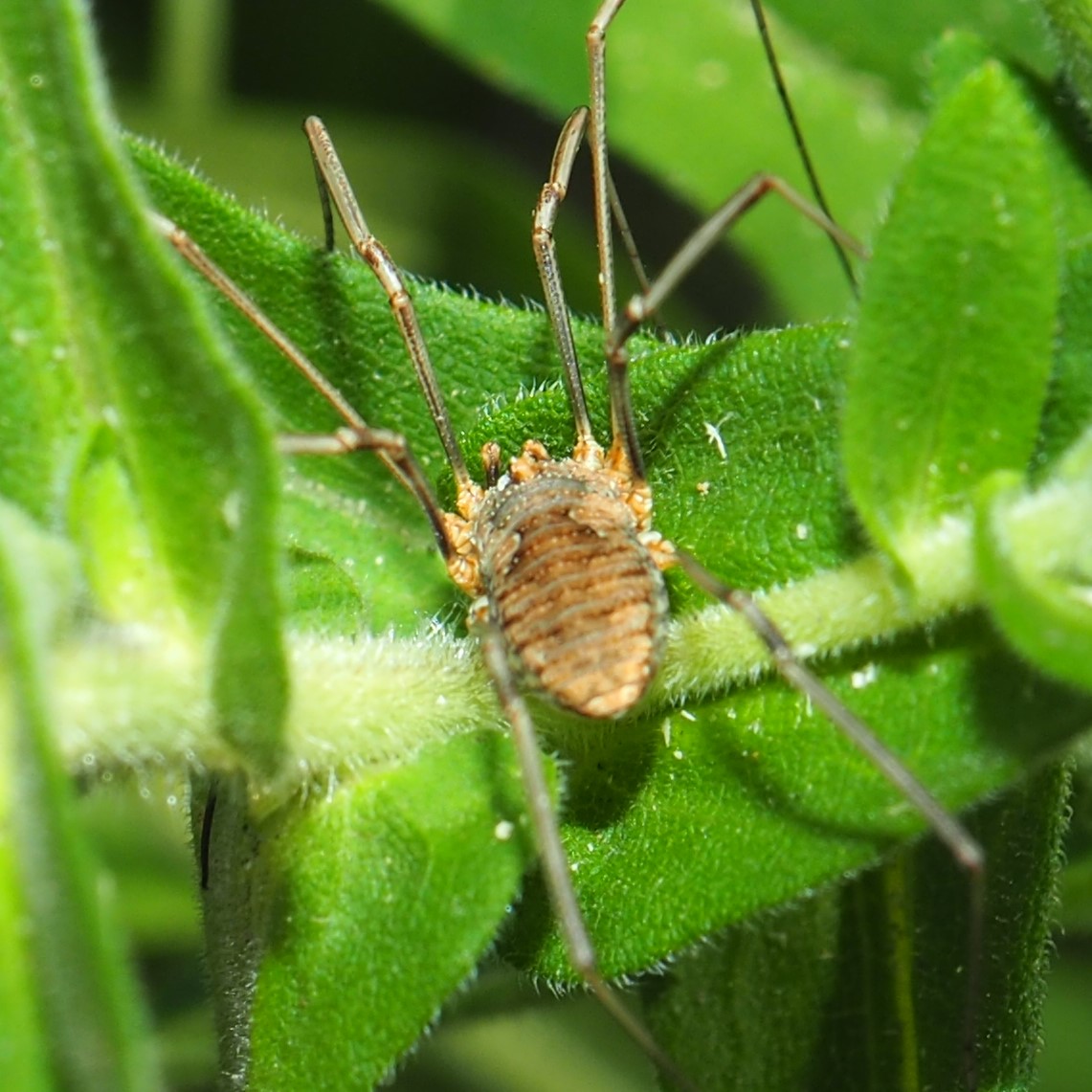
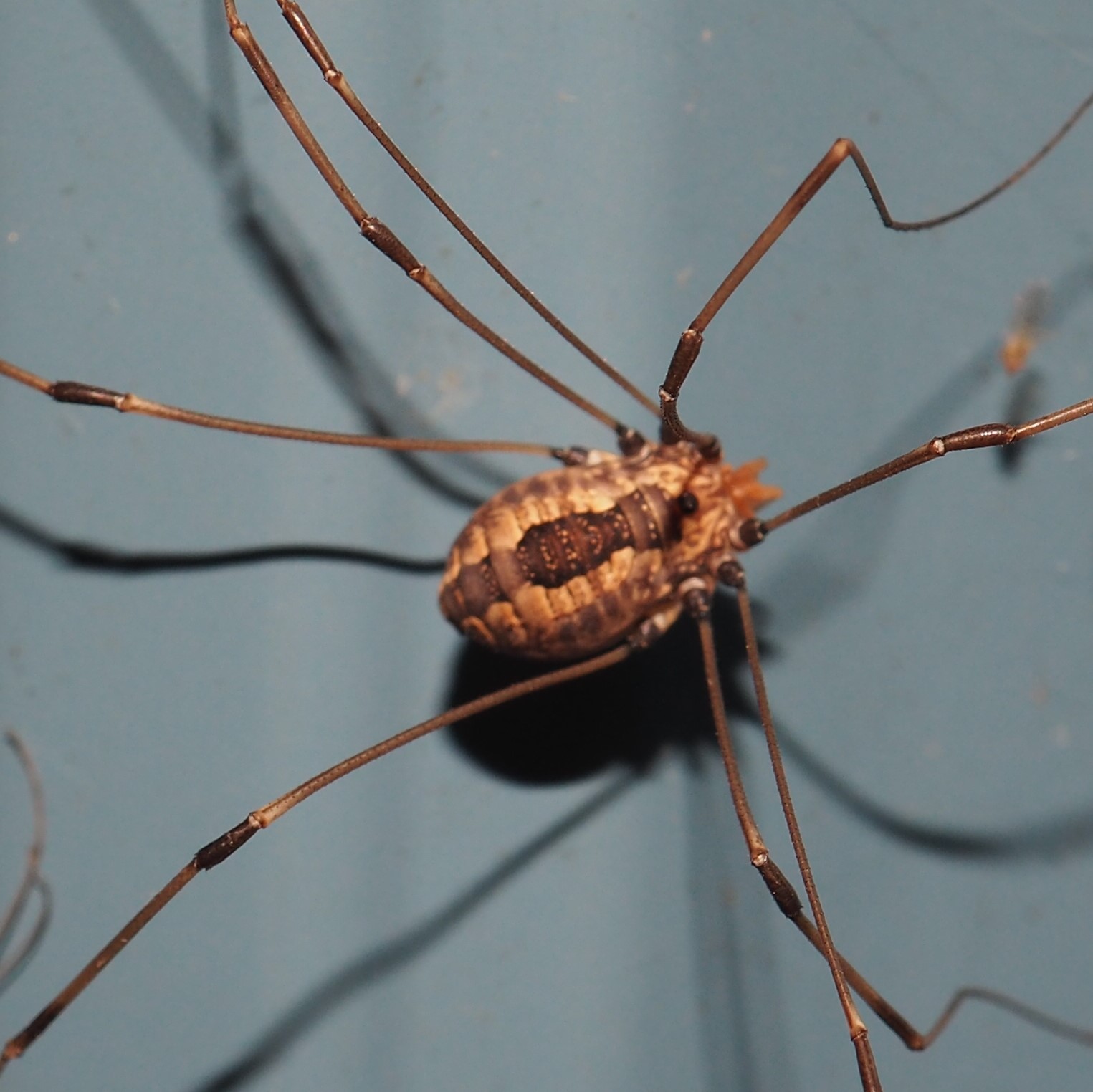
Let's take a quick look at some of the vegetation in the yard. We've been waiting impatiently for the goldenrod to bloom. Well, here it is in full bud. Sigh. Meanwhile the huge-leaved Sun and Substance Hosta is just passing full bloom, but still pretty exotic. The Fall Phlox is likewise passing its prime, but still lovely. Last is the Snapdragon from the Deck Flower Box.
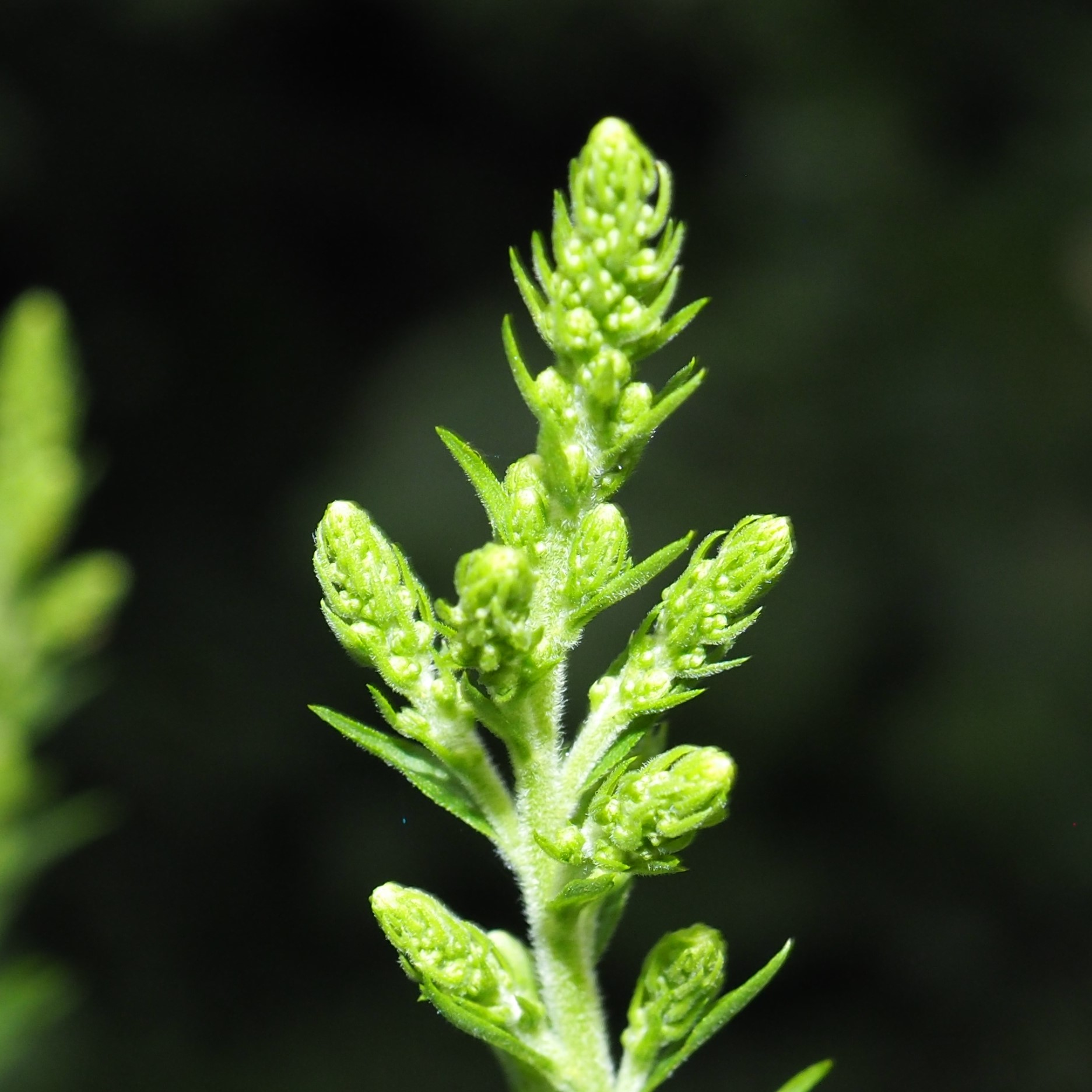
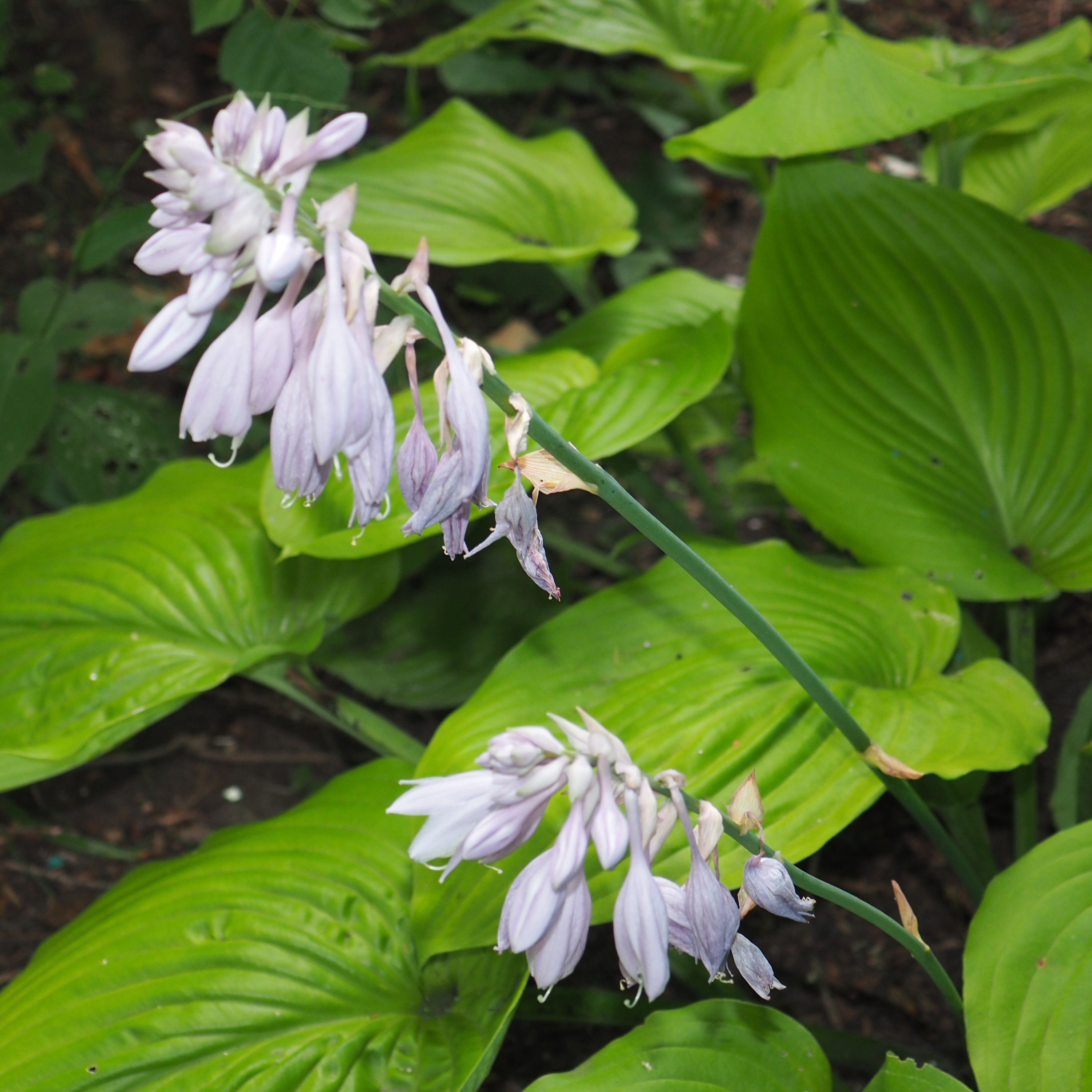
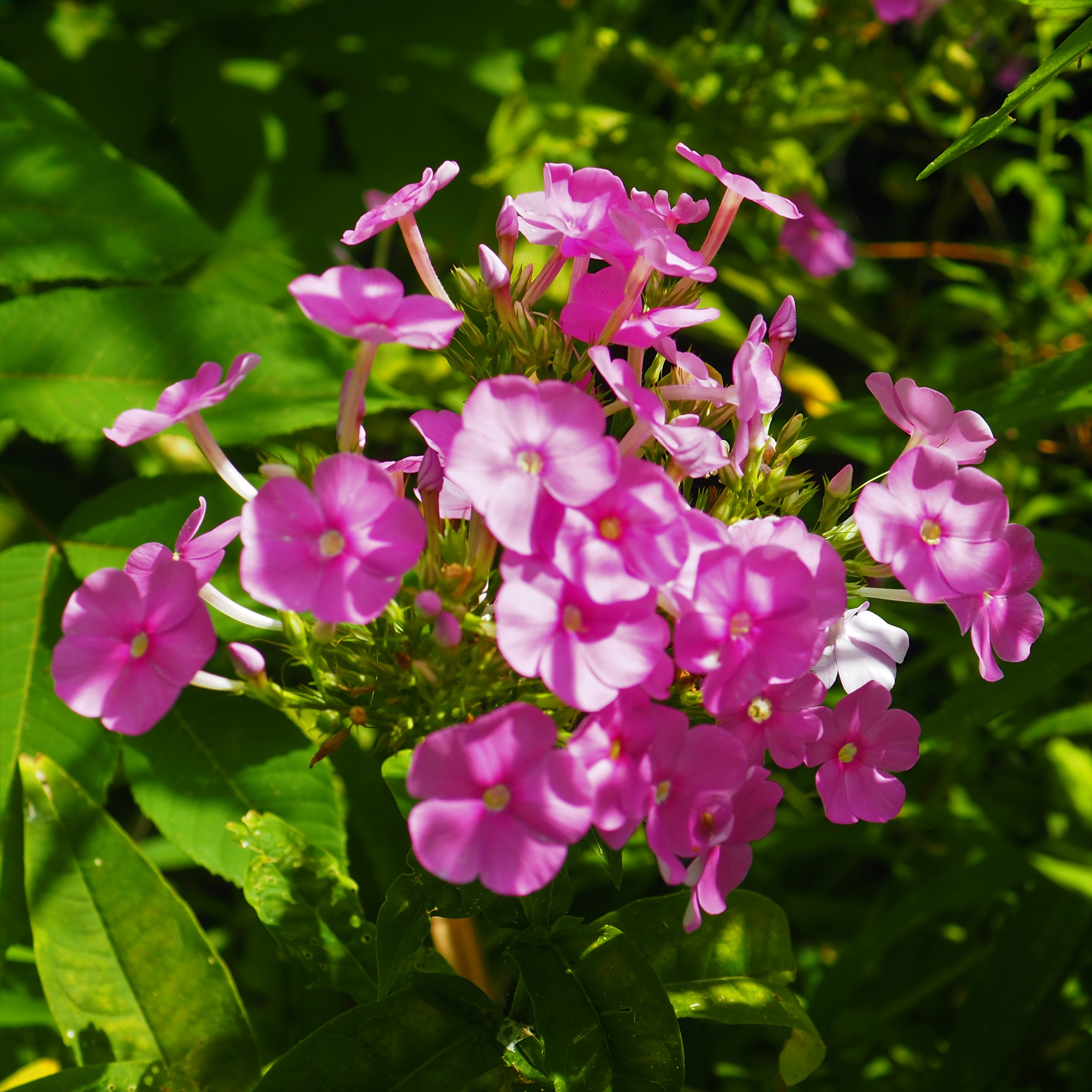
Here are the scorpionflies again. First is the female, and next the male with its rolled-up tail. That snail is still hanging on the wall, or is it just an empty shell by now? Finally, last thing before the spiders appear, here is a Sawfly, but I don't know which species. I always mistake them for flies at first, but am getting better at guessing "sawfly" next. Hint: Those squared-off eyes are a good clue.
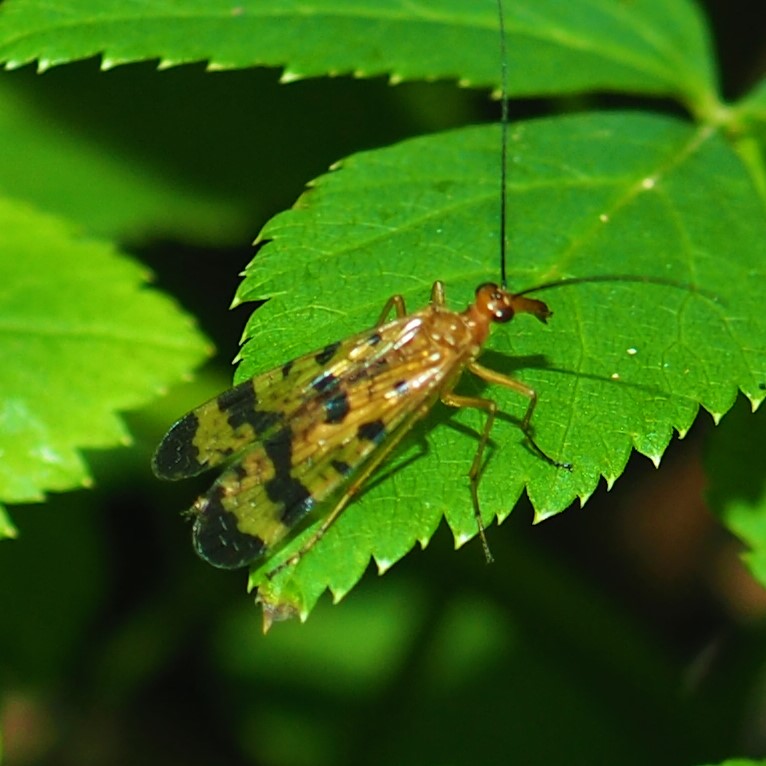
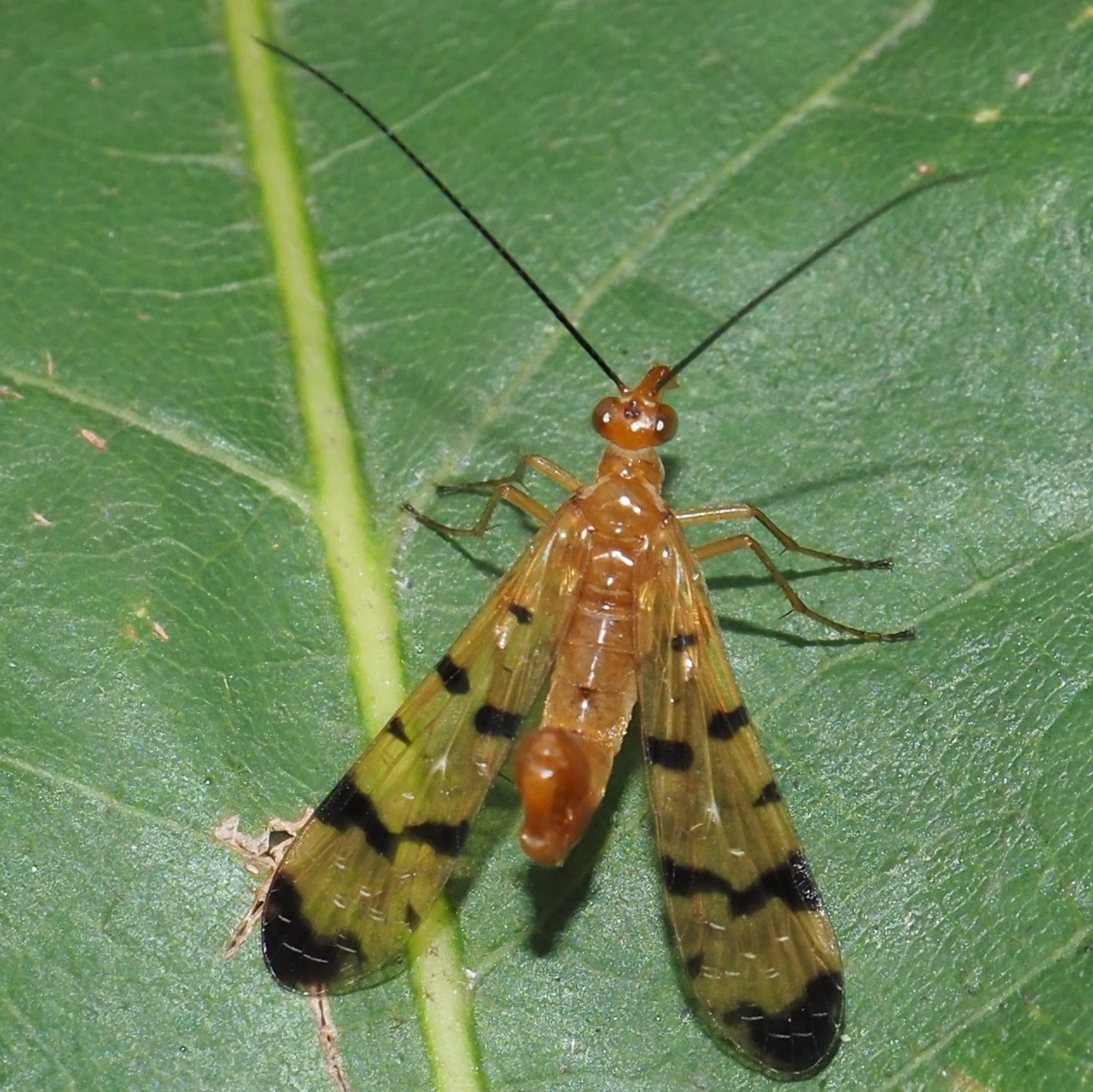
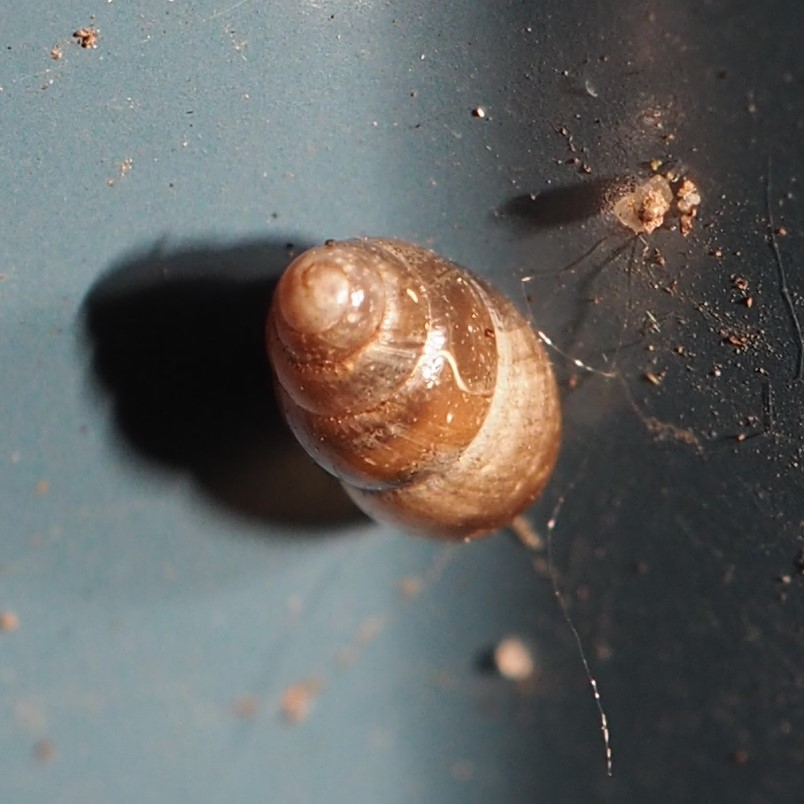
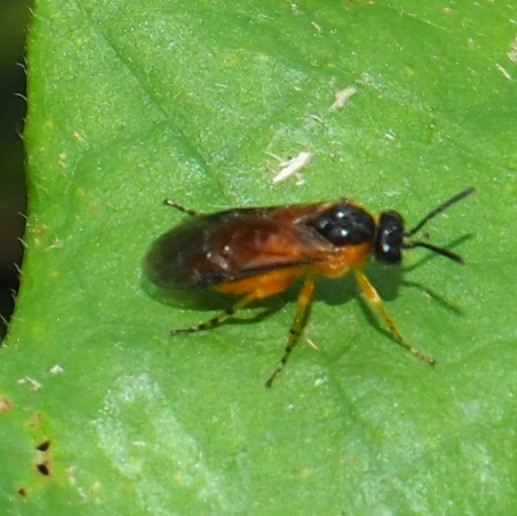
First Spider of the Week: here's that Cellar Spider again. They love the window wells on the outside of the shop. Those Common House Spiders are so so common. They seem to come in two colors: light and dark. The light one here shows the Nose that appears when it is facing like this.
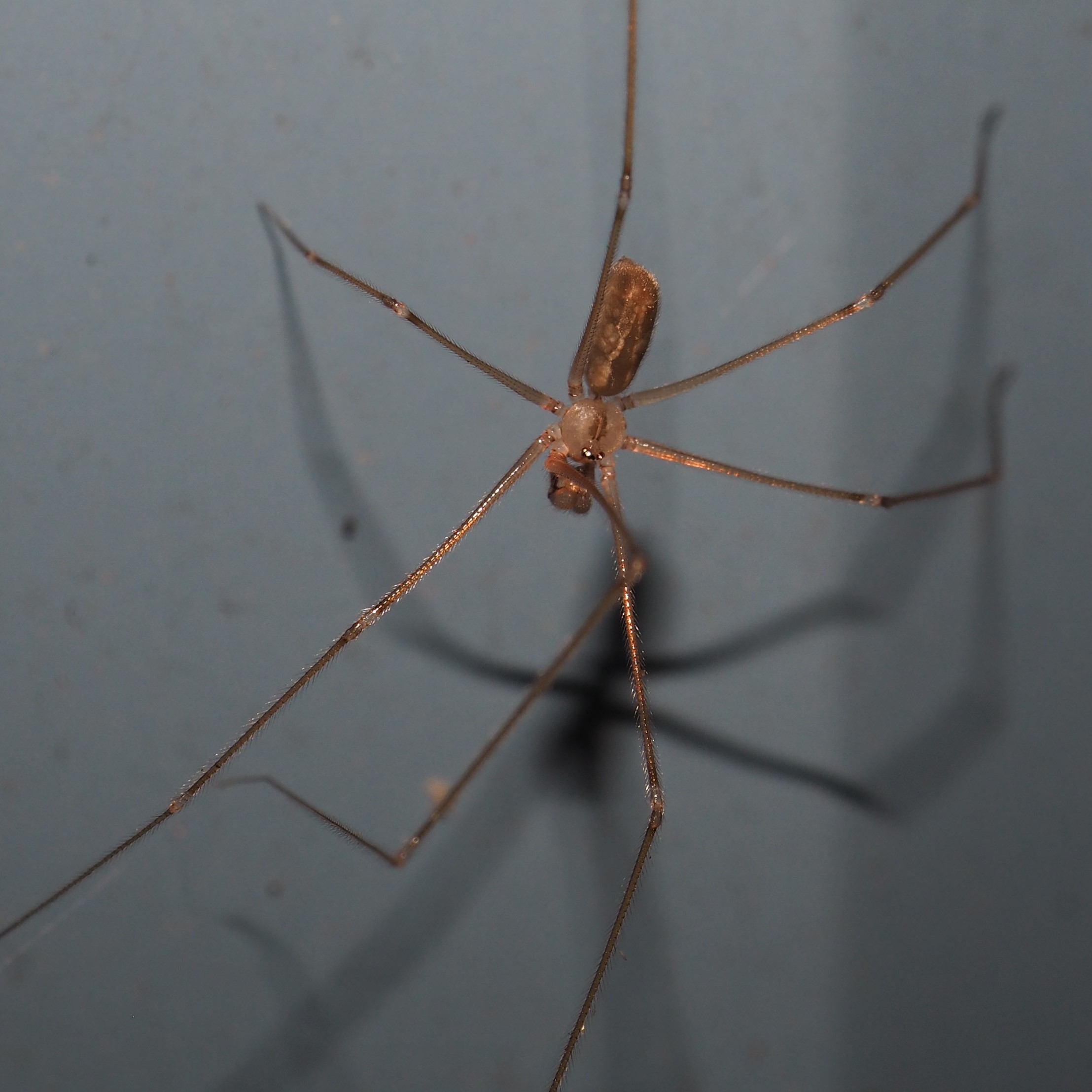
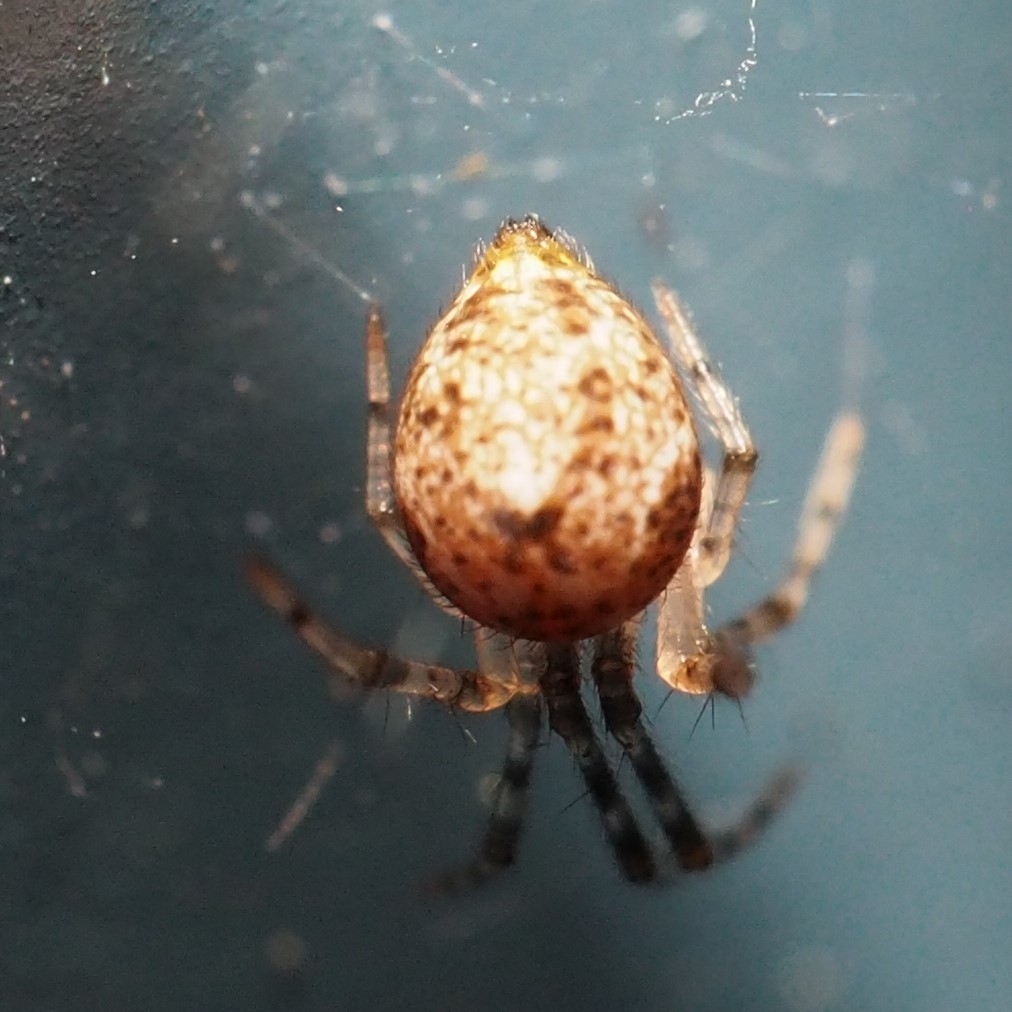
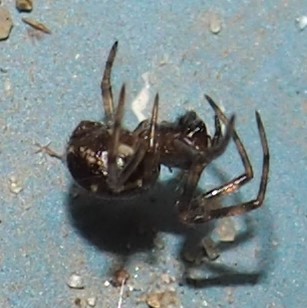
The tiny little Crab Spiders hide in the centers of their favorite plants, these days the Goldenrods. This first one looks HUNGRY, doesn't it? It, like the second one, are in the genus Mecaphesa, but the second one Might be the Northern Crab Spider.
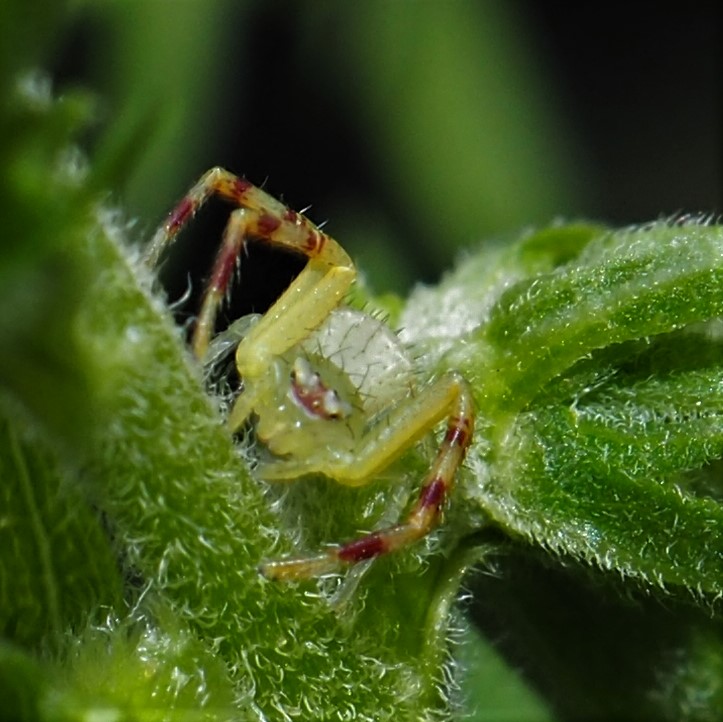
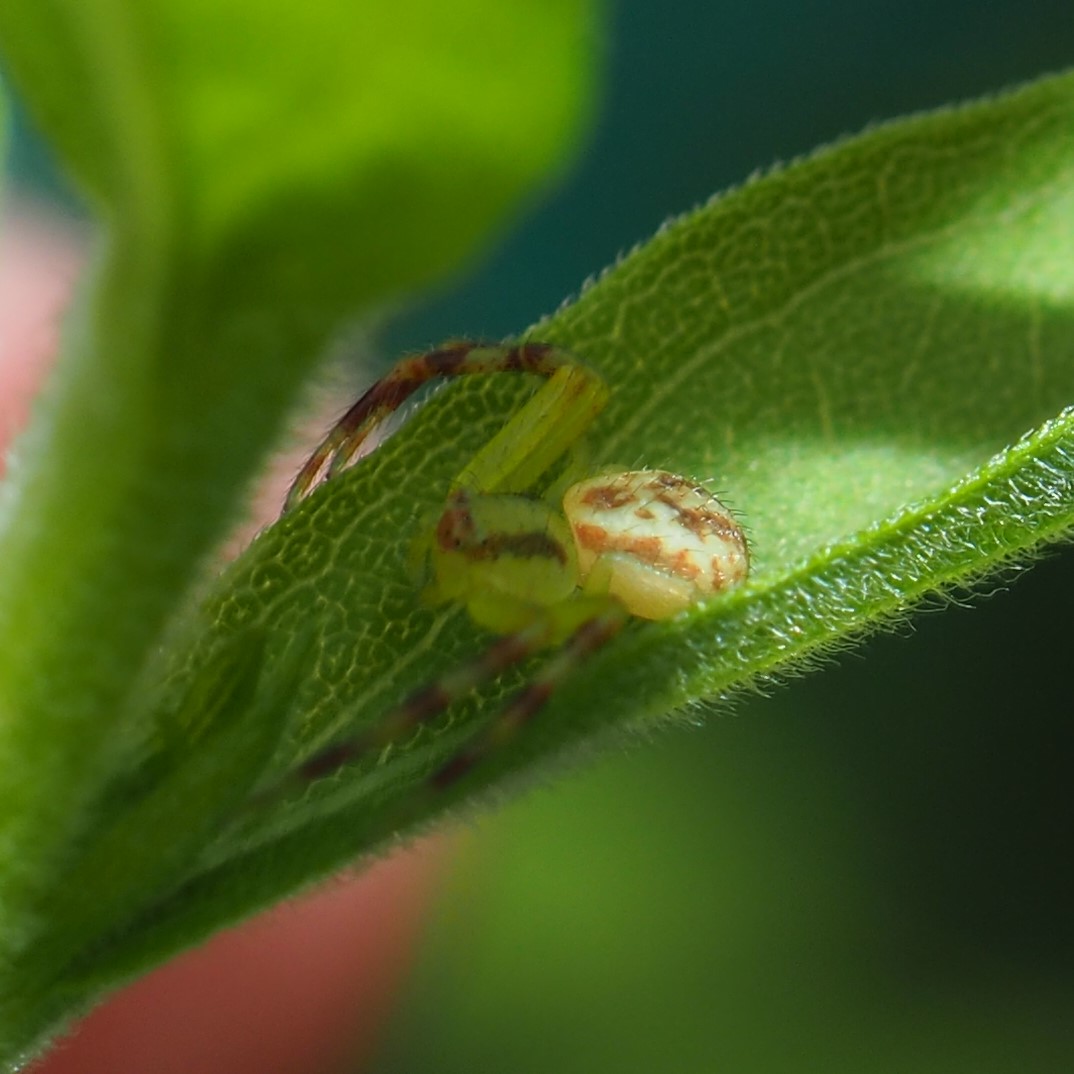
These days, there are so many spider egg balls. Here's one that has been on the east side of the shop for weeks now. The knobbly one on the north wall seems a bit knobblier now, and it looks as if there is either something hatching or something eager for a tender new spider to hatch. Three and Four show a snow-white egg ball and a similar ball a couple of days later, sliced open so carefully. How did that happen? Who sliced it?
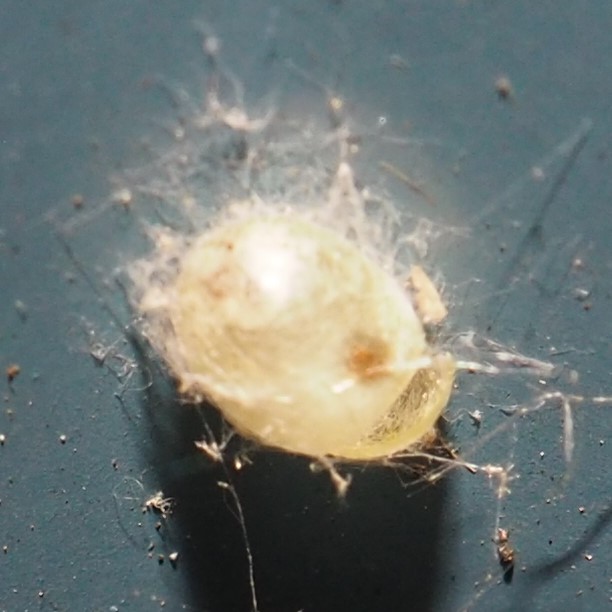
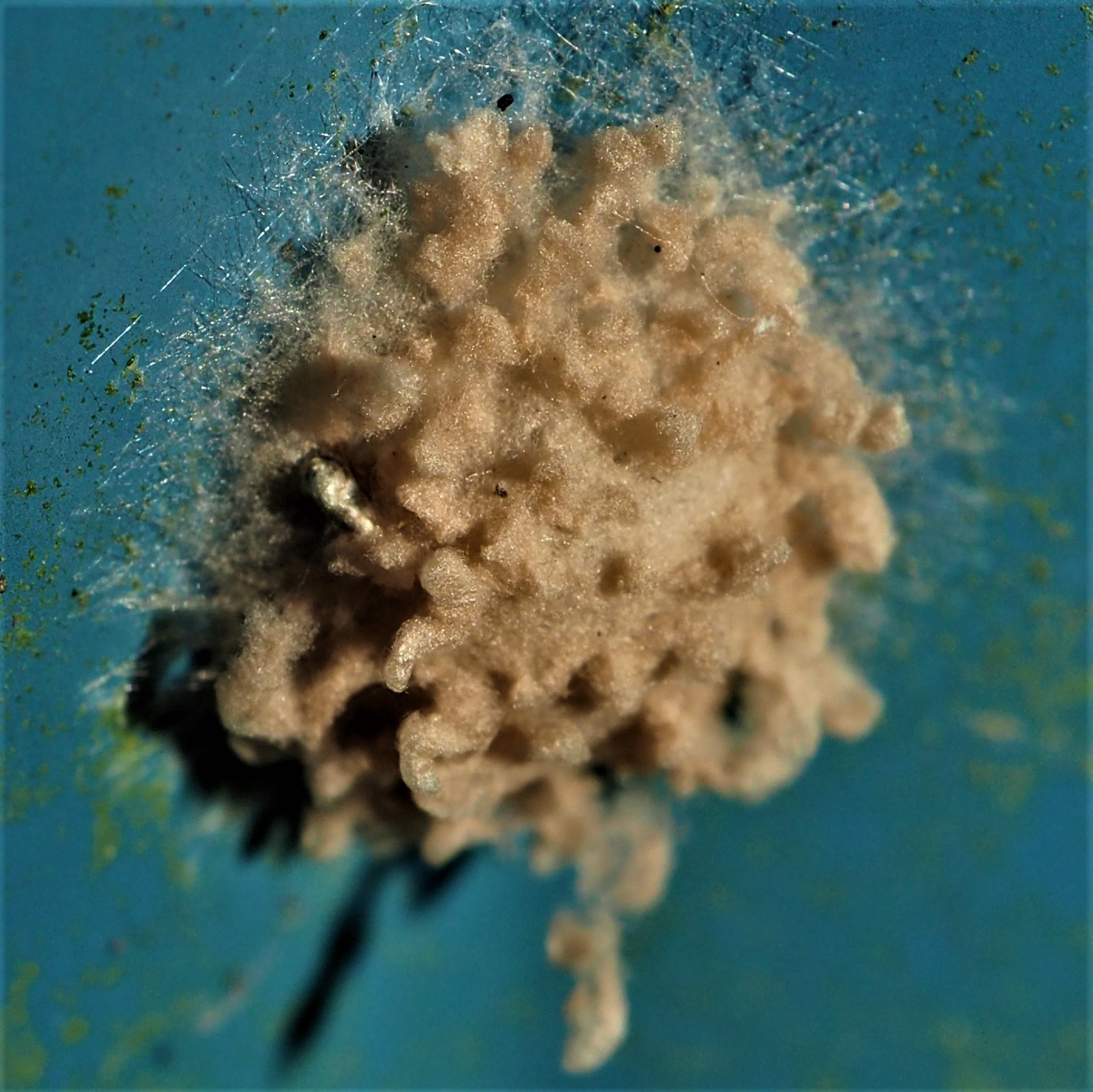
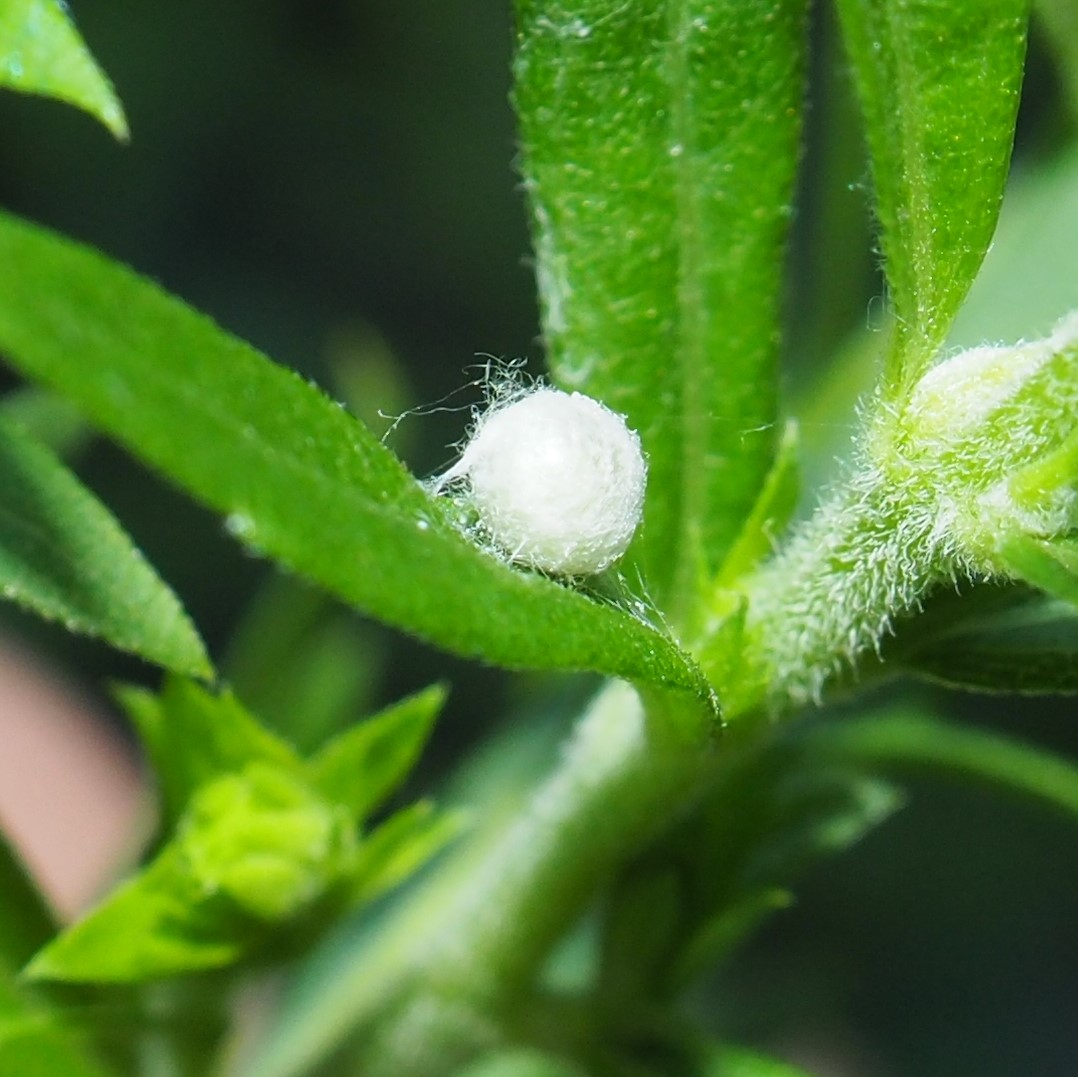
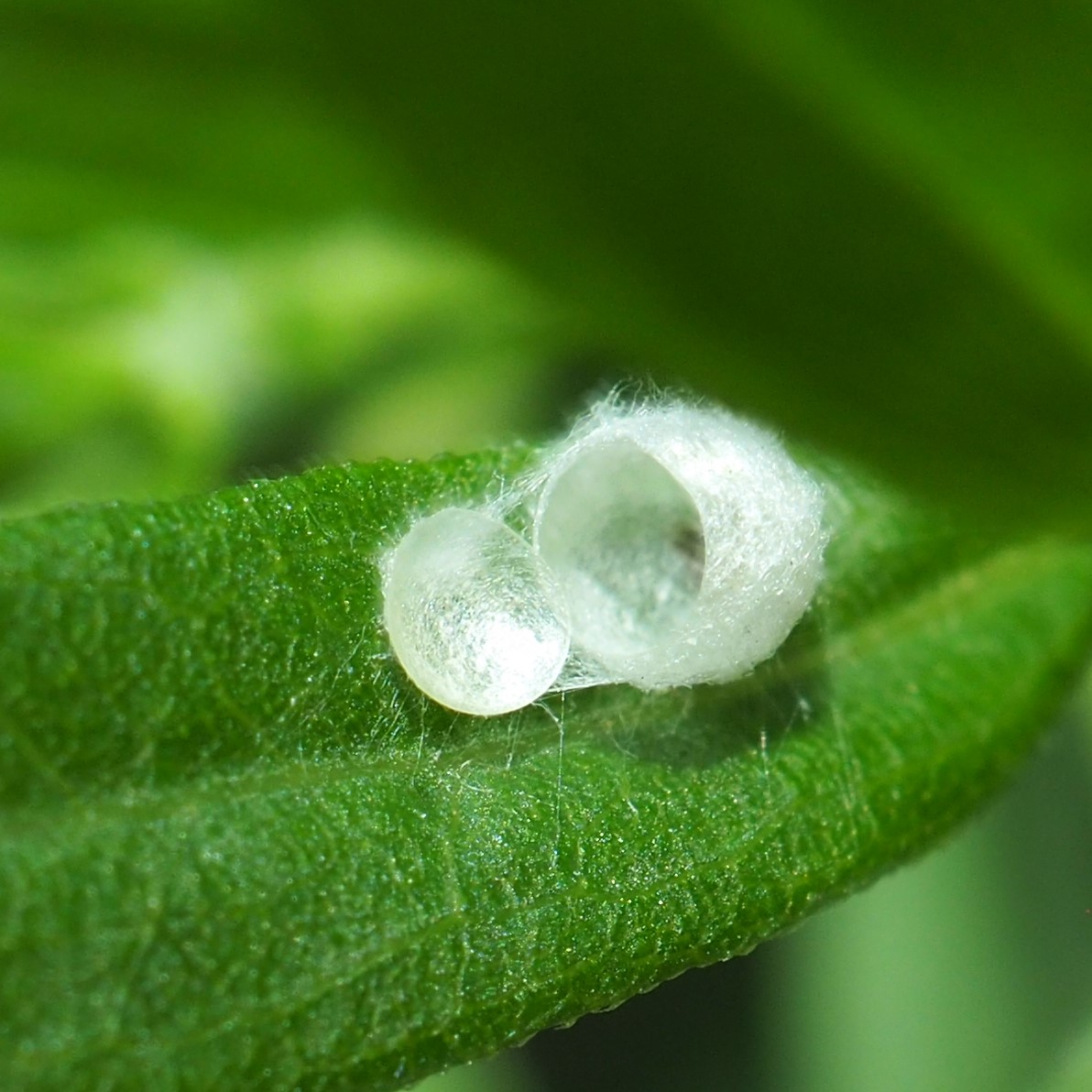
The Grass Spiders are getting larger. Meanwhile we see a few more Orbweavers each week. Here's that male Cross Orbweaver that we've been watching for some time. And I believe the next one is the Six-spotted Orbweaver. Here you can see three of the spots. It's still very small but it will be easier and easier to spot as time goes on.
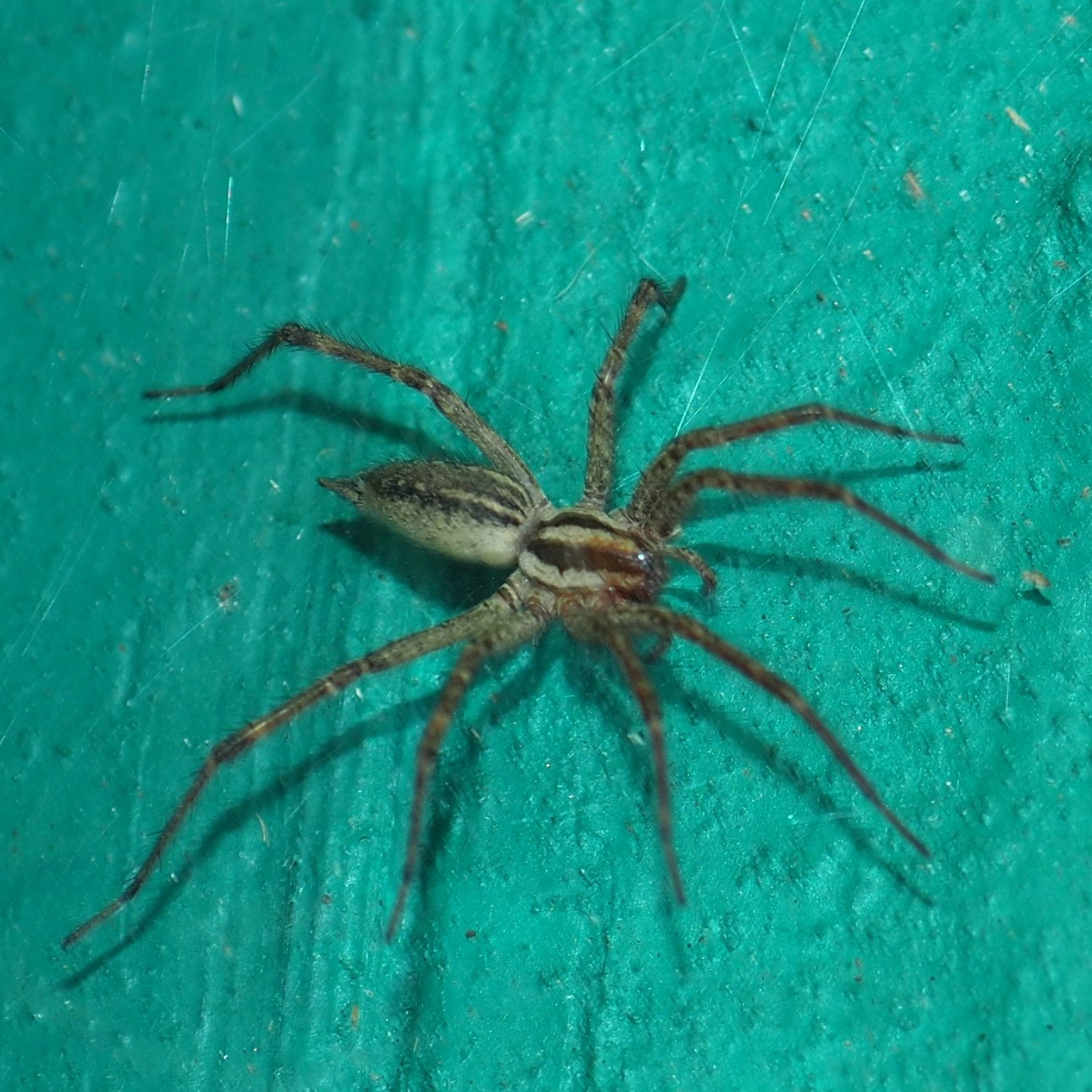
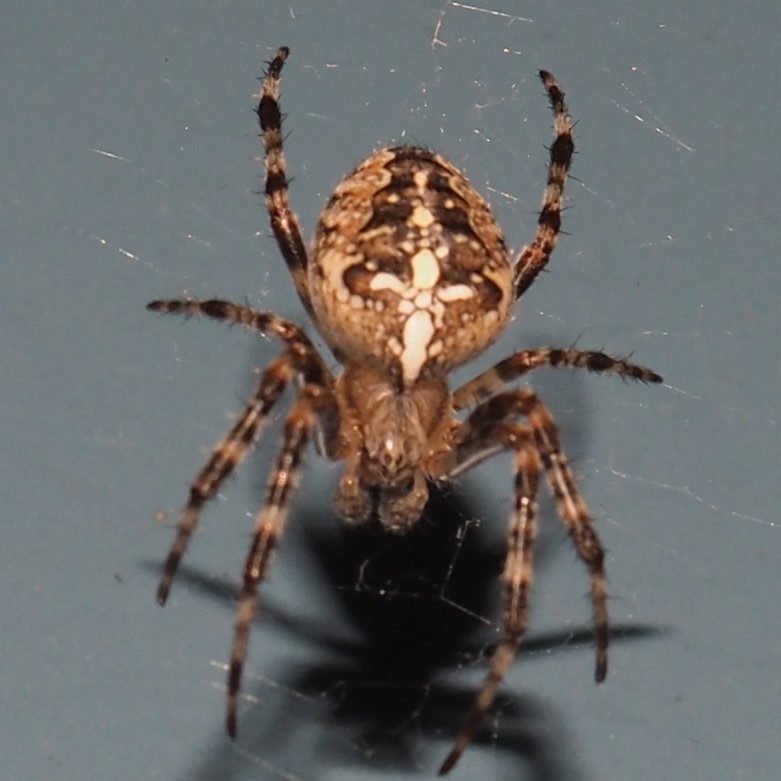
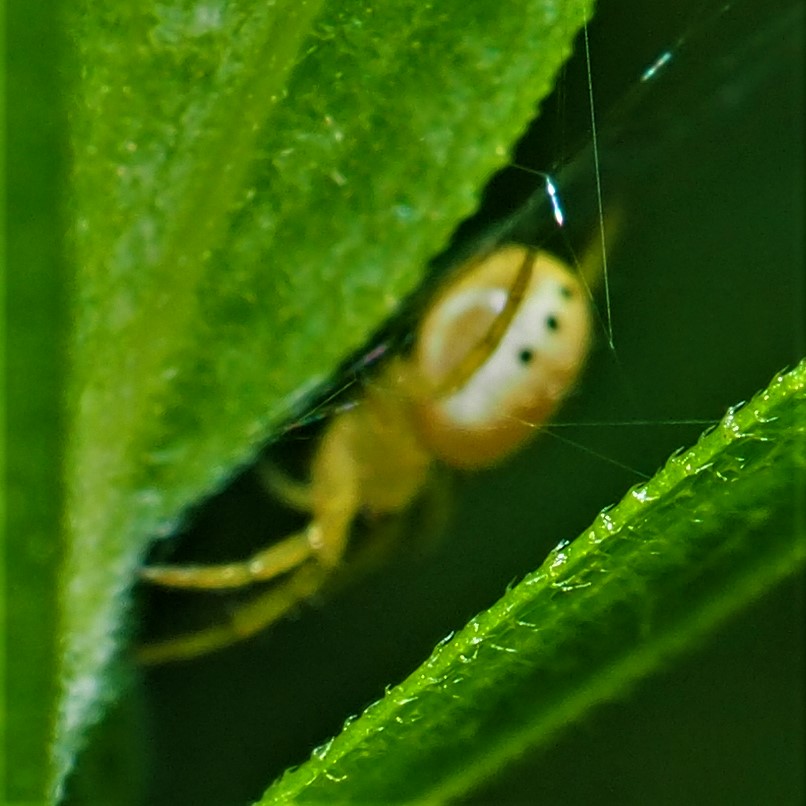
Would you believe, this is the Pirate Spider, Mimetus puritanus. But it is in a very uncommon posture. I couldn't recognize it at first since its big white smile is hidden. Second is a mystery spider to me. Its palps are black - how clever against that bright red body! This third shot is a strange scene. It looks as if two spiders are trying to capture each other.
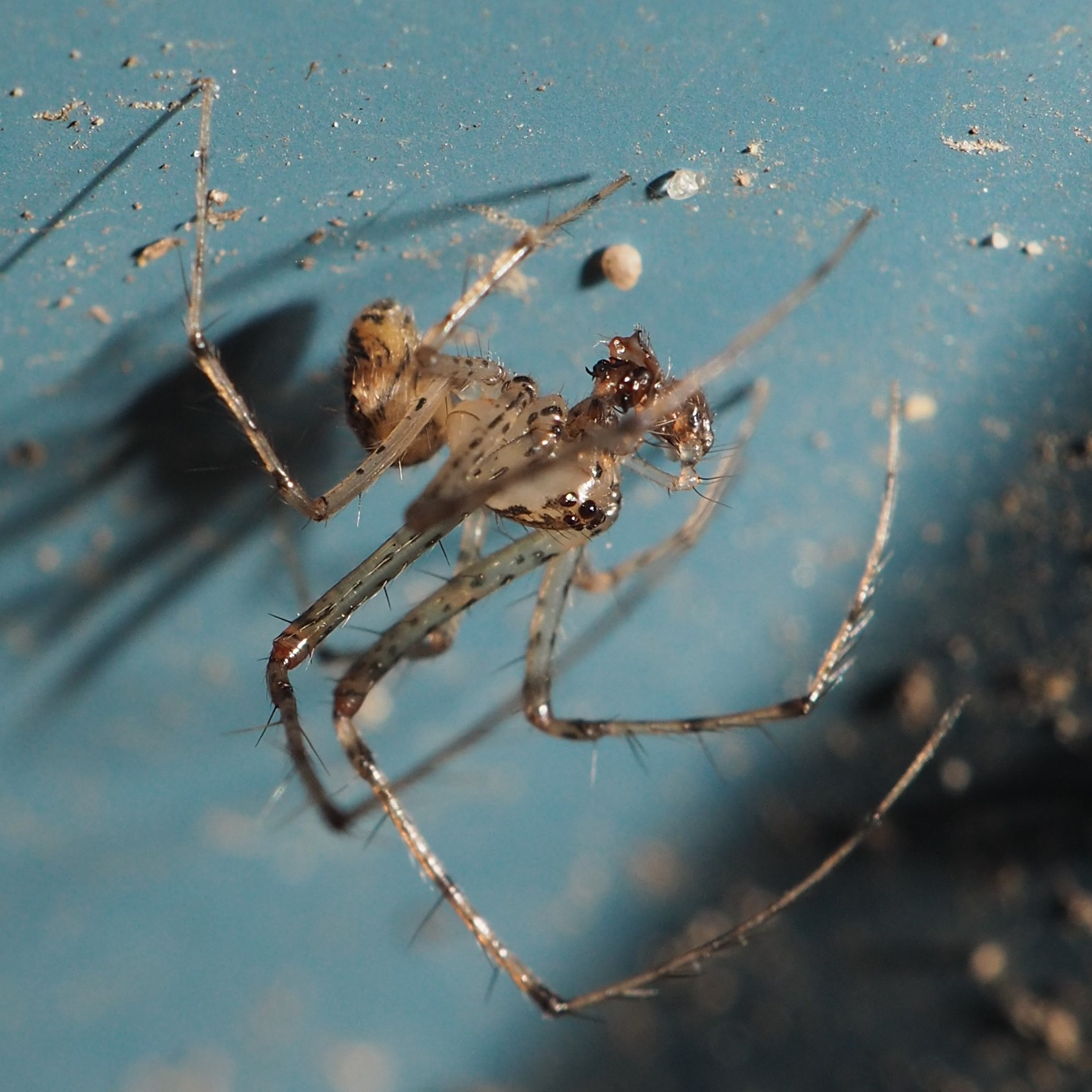
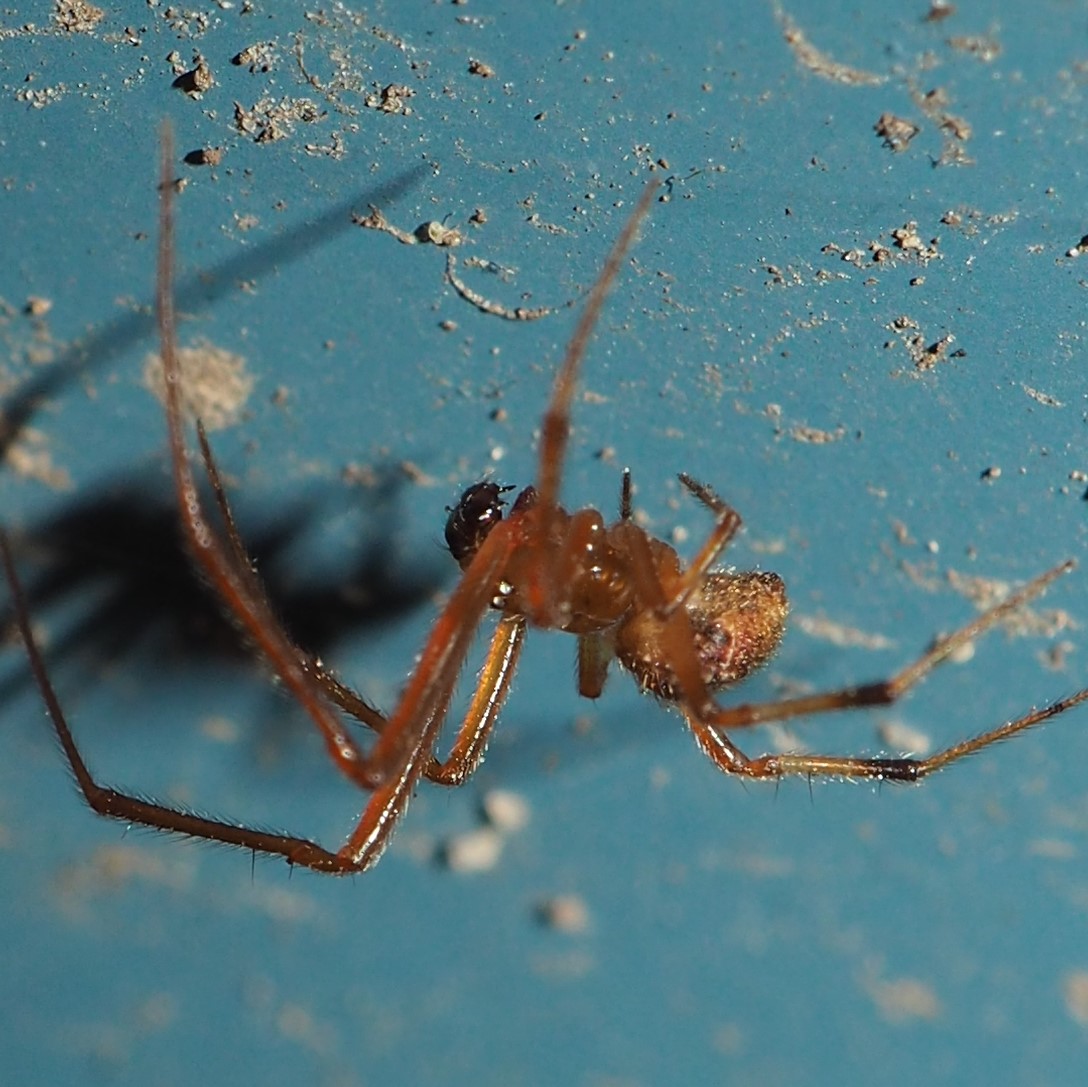
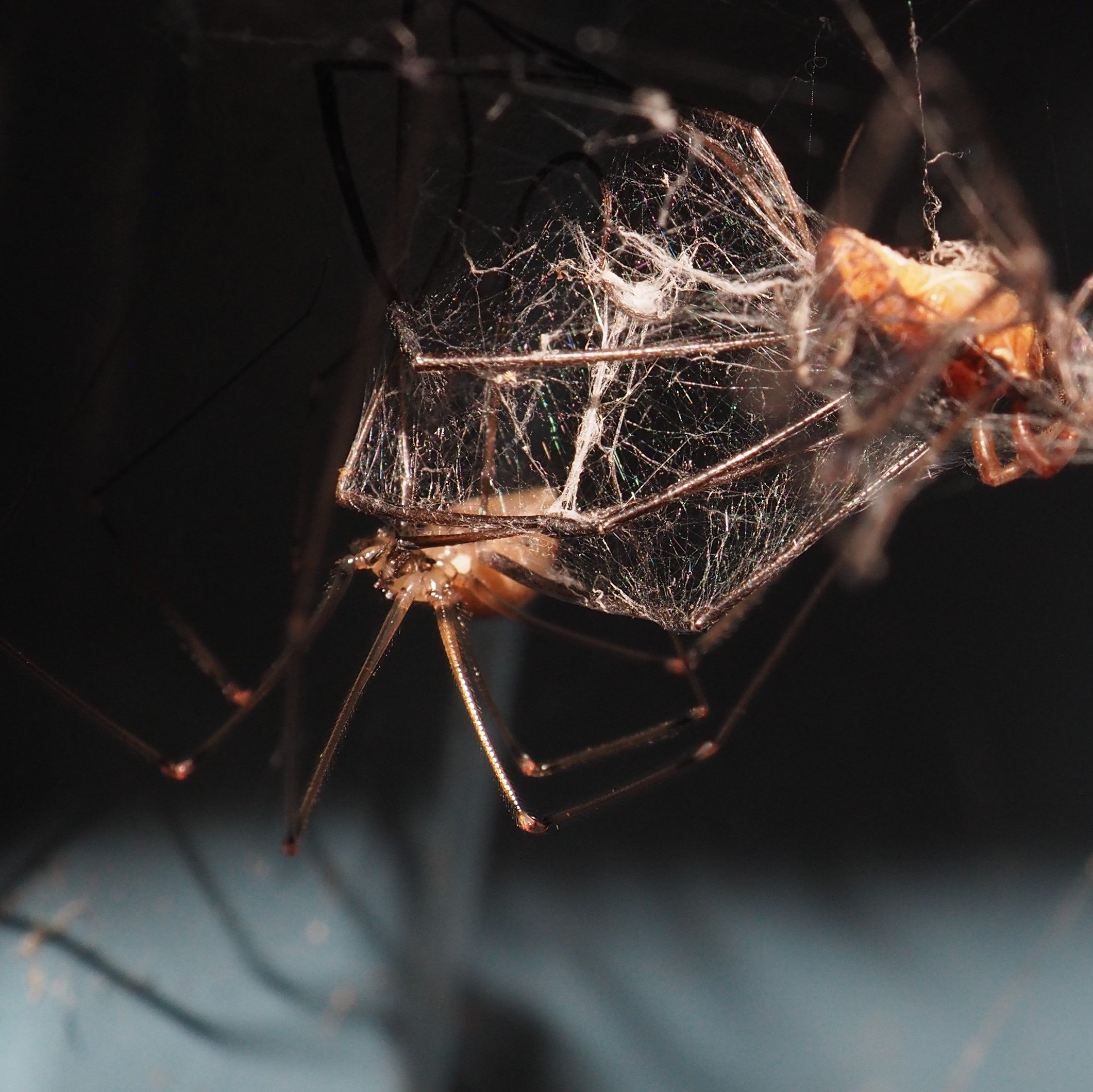
The wasps seemed all to be Ichneumonids or Braconids. This first one with the white patch on its antennae wiggles those antennae all the time. The second one was moving around the front porch step as if looking for small creatures to have for snacks.
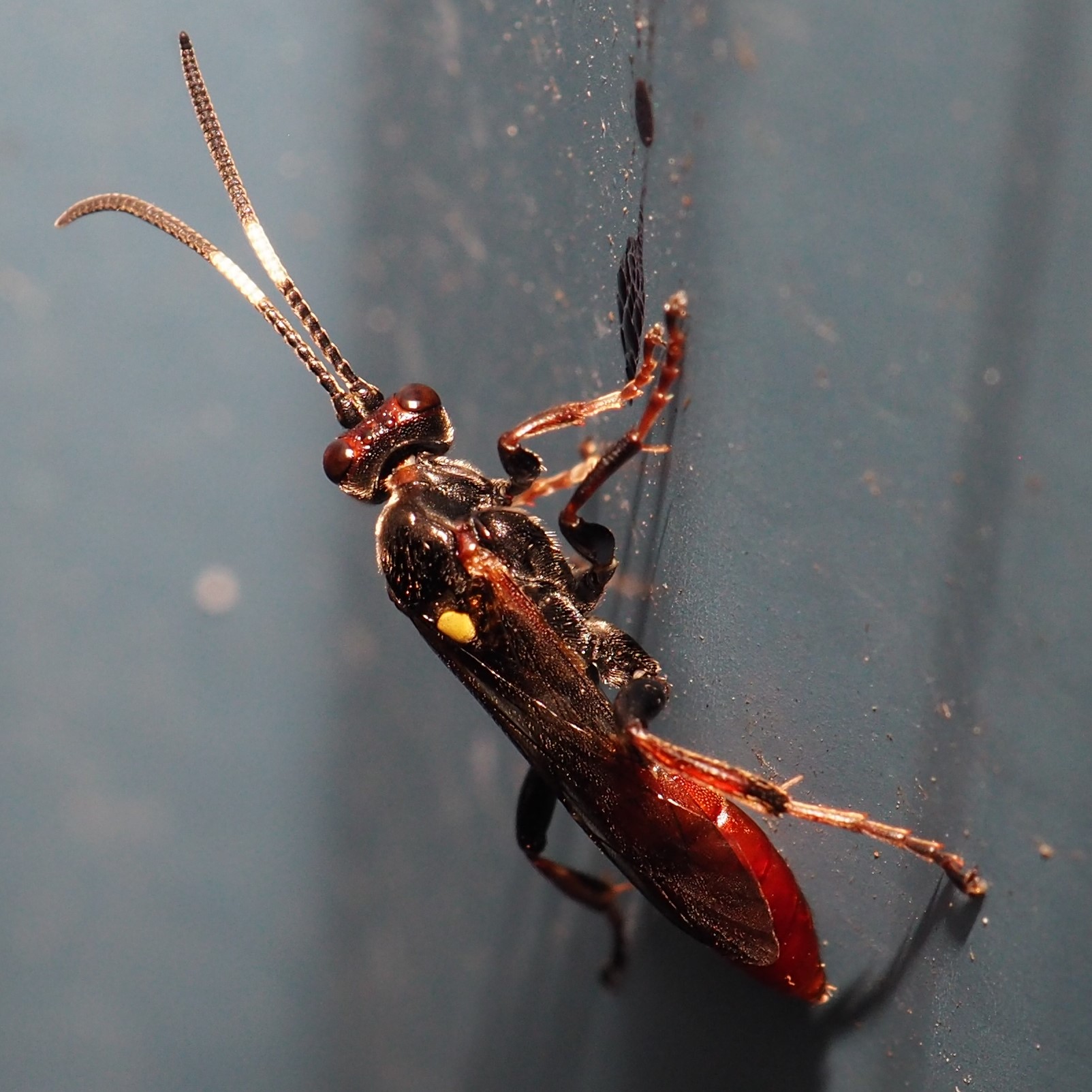
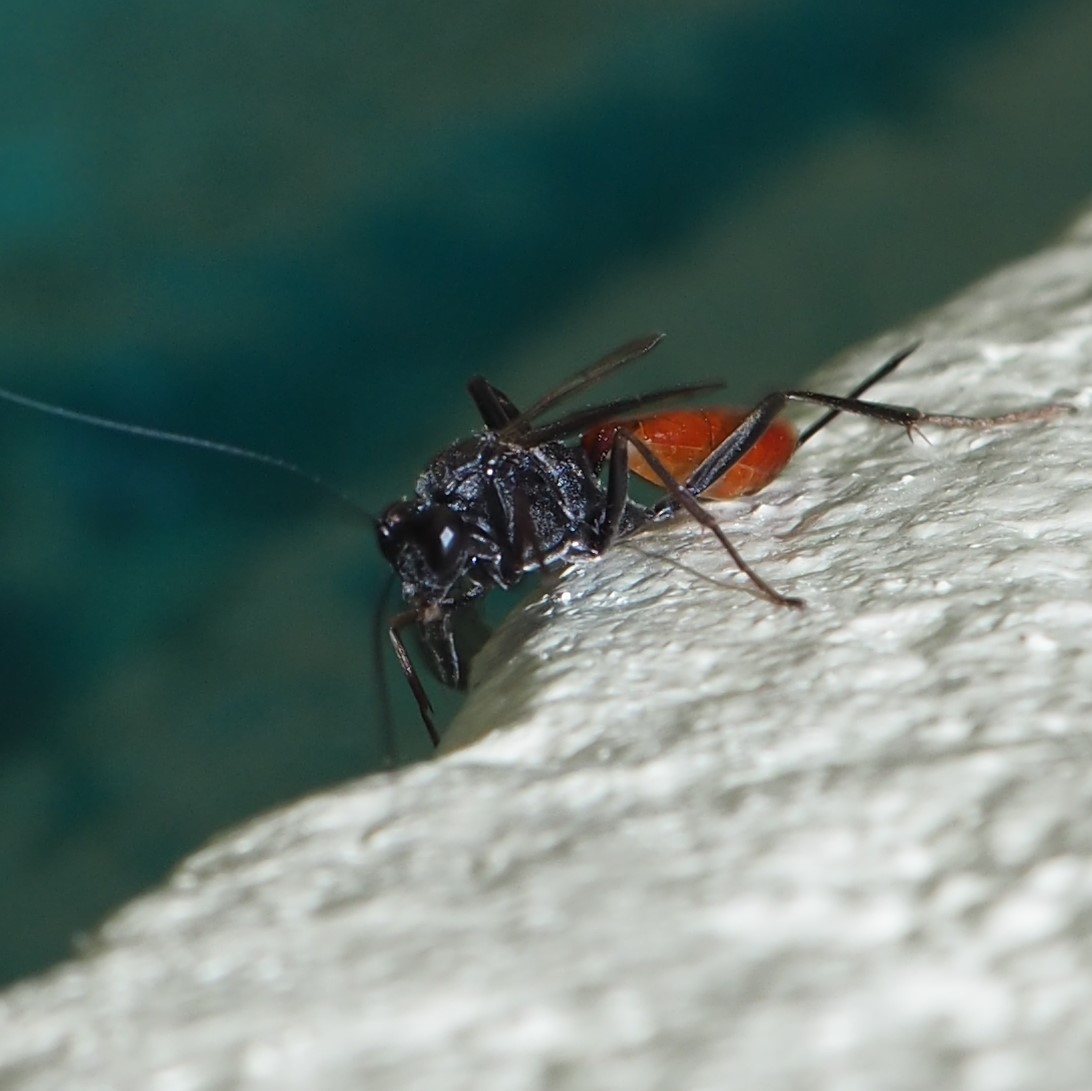
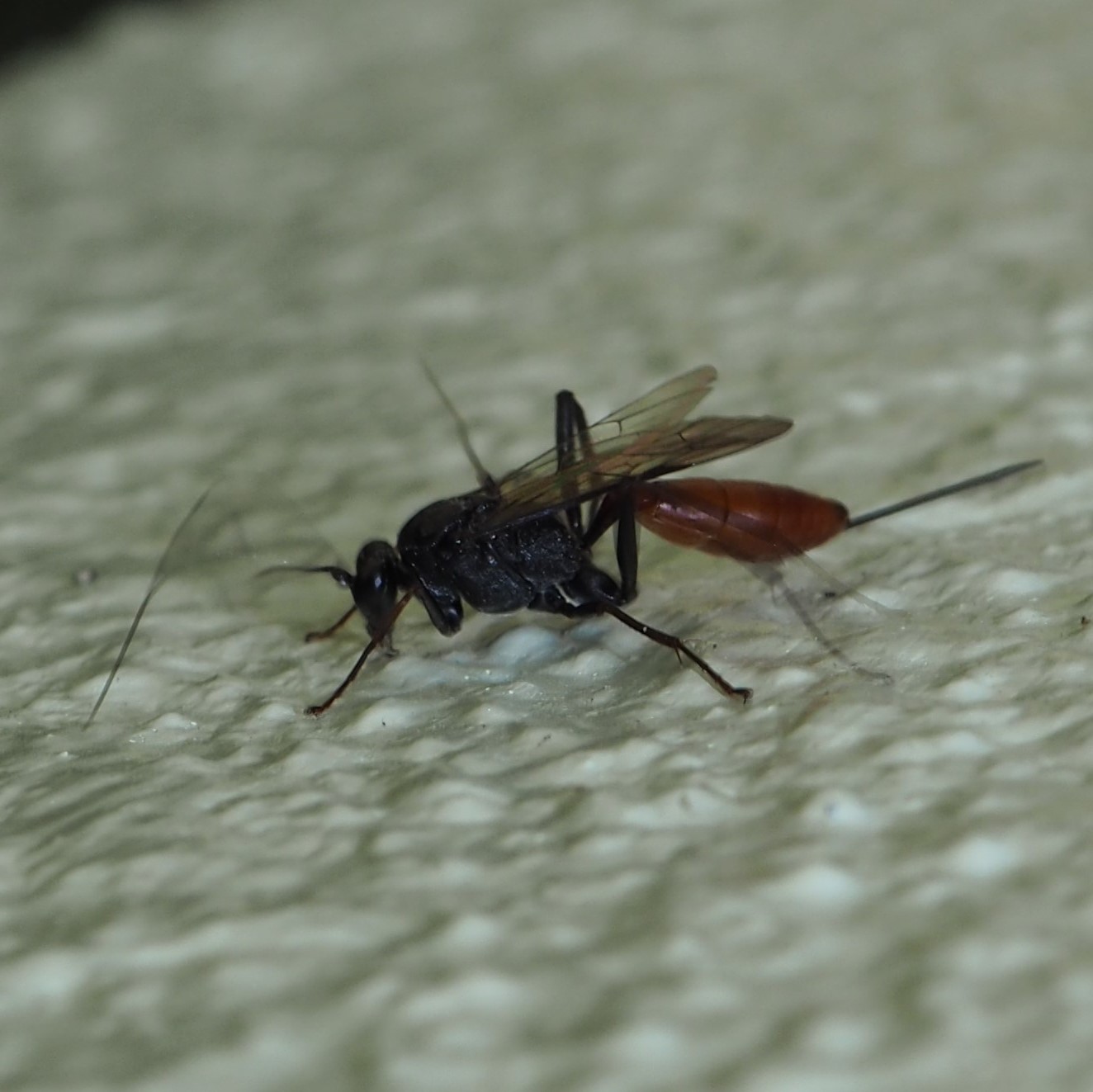
How about a very few more pretty flower pictures? The Trumpetvine, whose tree now almost makes impassable the only path from back yard to front - I'll have to start lopping soon but not while the Hummingbirds' favorite treat is blooming. The magenta snapdragon in the Deck Flower Box is magnificent for a 5-inch plant. The neighbors planted this succulent years ago and I thought it was Sedum Autumn Joy, but the flowers are different. This tall Day Lily is a variant or a misnaming of the Autumn Orange.
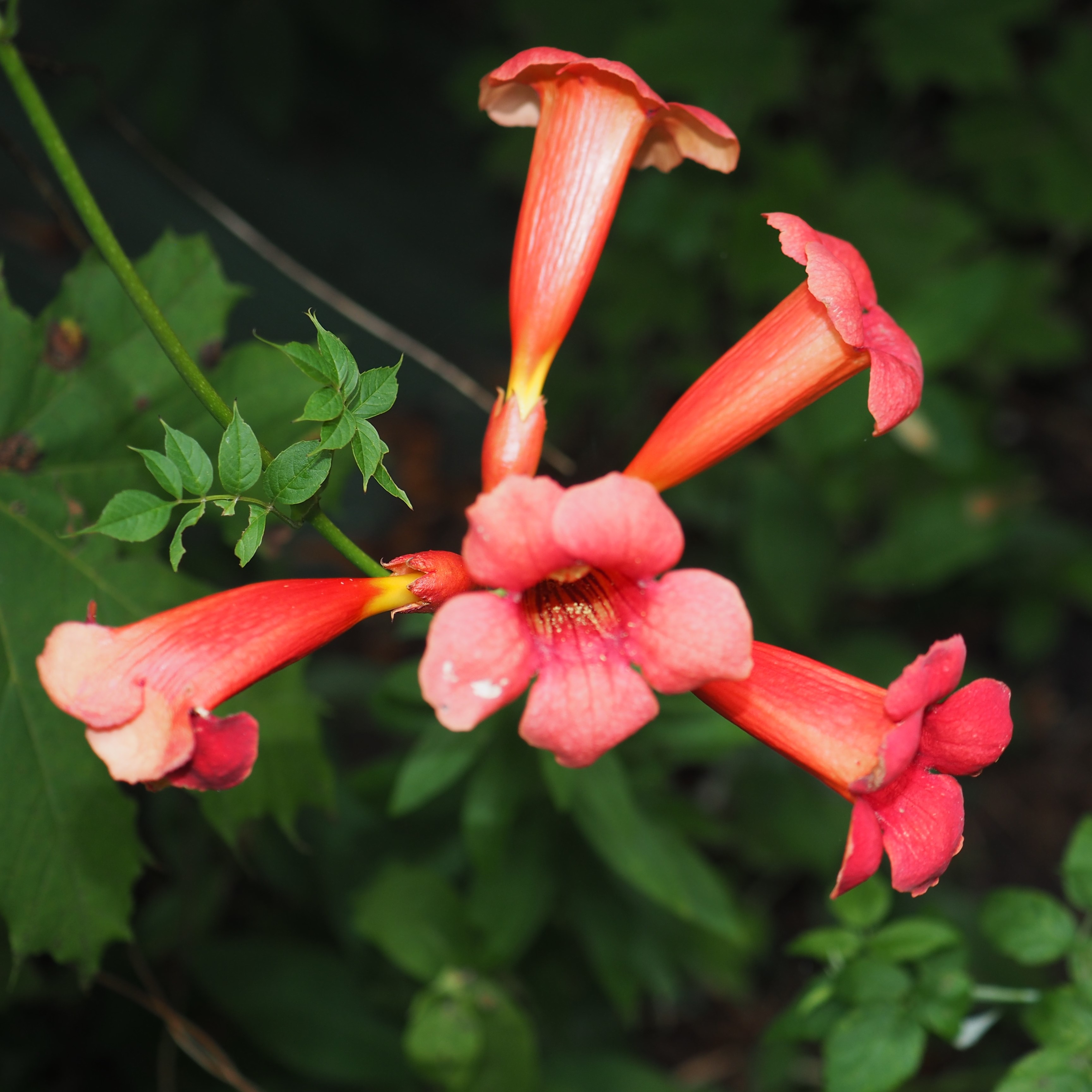
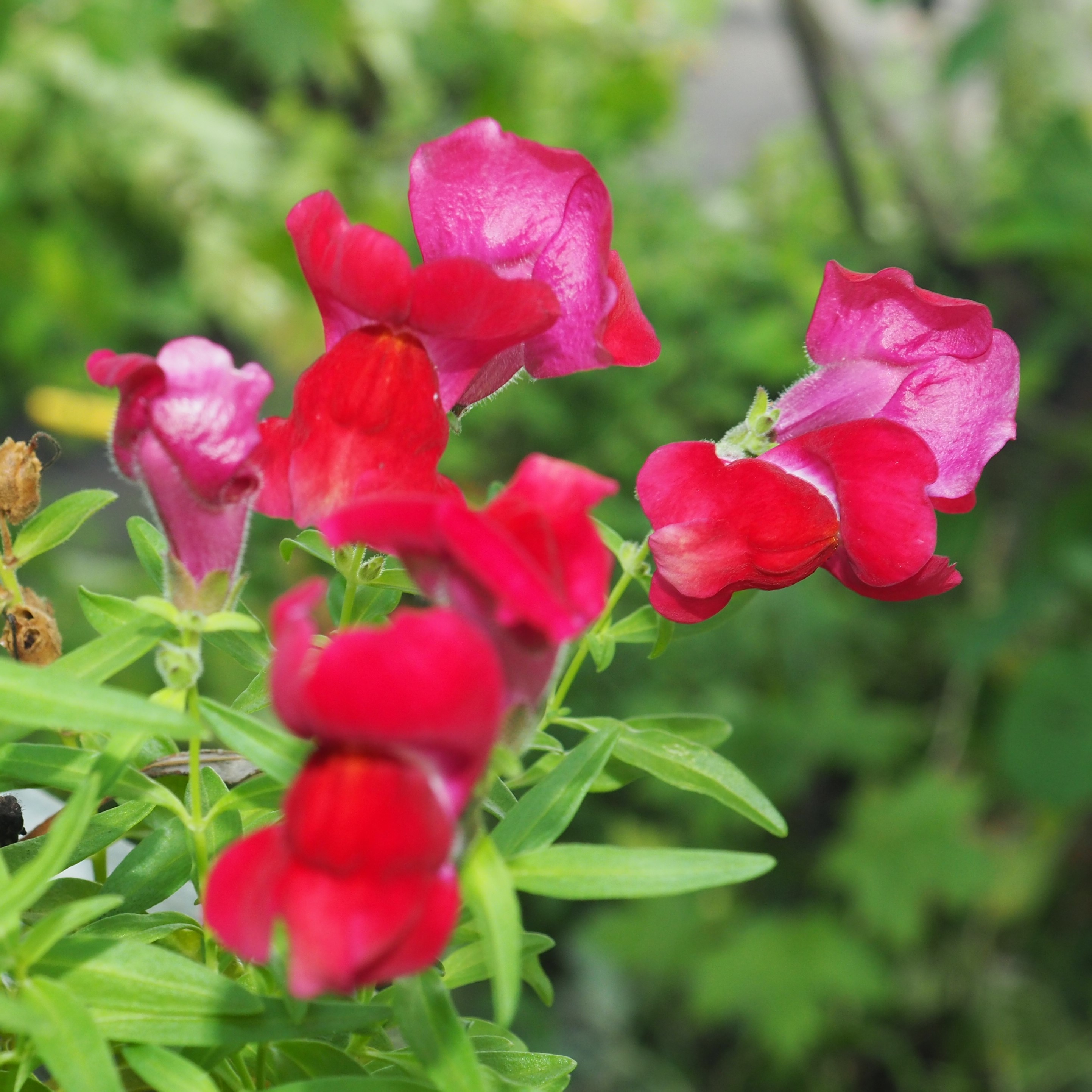

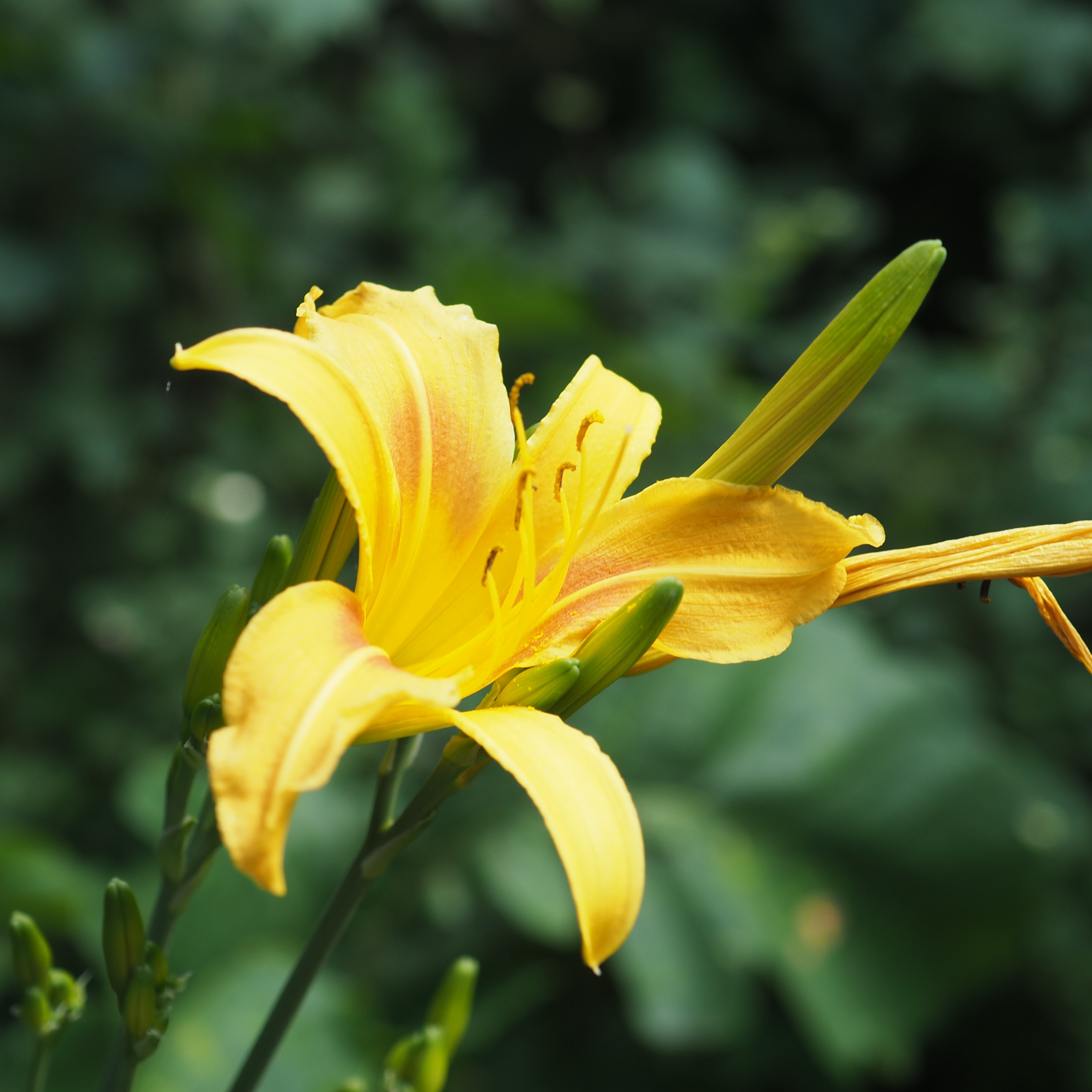
Now for what you've been waiting for: the Water Lilies! They give me the pleasure of pond-watching. They give the frogs a perch out of the water. They give the pond shade so that the algae can come under control. They give the fish some cover.
By the way, I didn't get any pictures of our beloved Froggy, but if I'm outdoors and talk to myself, I'll frequently be rewarded with a "Gollum". I repeat it and Froggy chimes back in. He is not in the pond but he's somewhere in the yard. Bully, on the other hand, refuses to let me take his picture or even admire his bully presence. I can see him sometimes from the upstairs window, sitting on one of the barley bales in the shallow end of the pond. So I go downstairs and gently open the back door and see and hear a small froggish plump as he disappears into the water. He can apparently recognize the tiny squeak of the kitchen door and equate it with the unwelcome presence of the papparozzi. But
Here's the first flowering of the magenta lily; the perfection of the large pink lily; The largest lily with its reflection and a fish swimming throught the reflection.

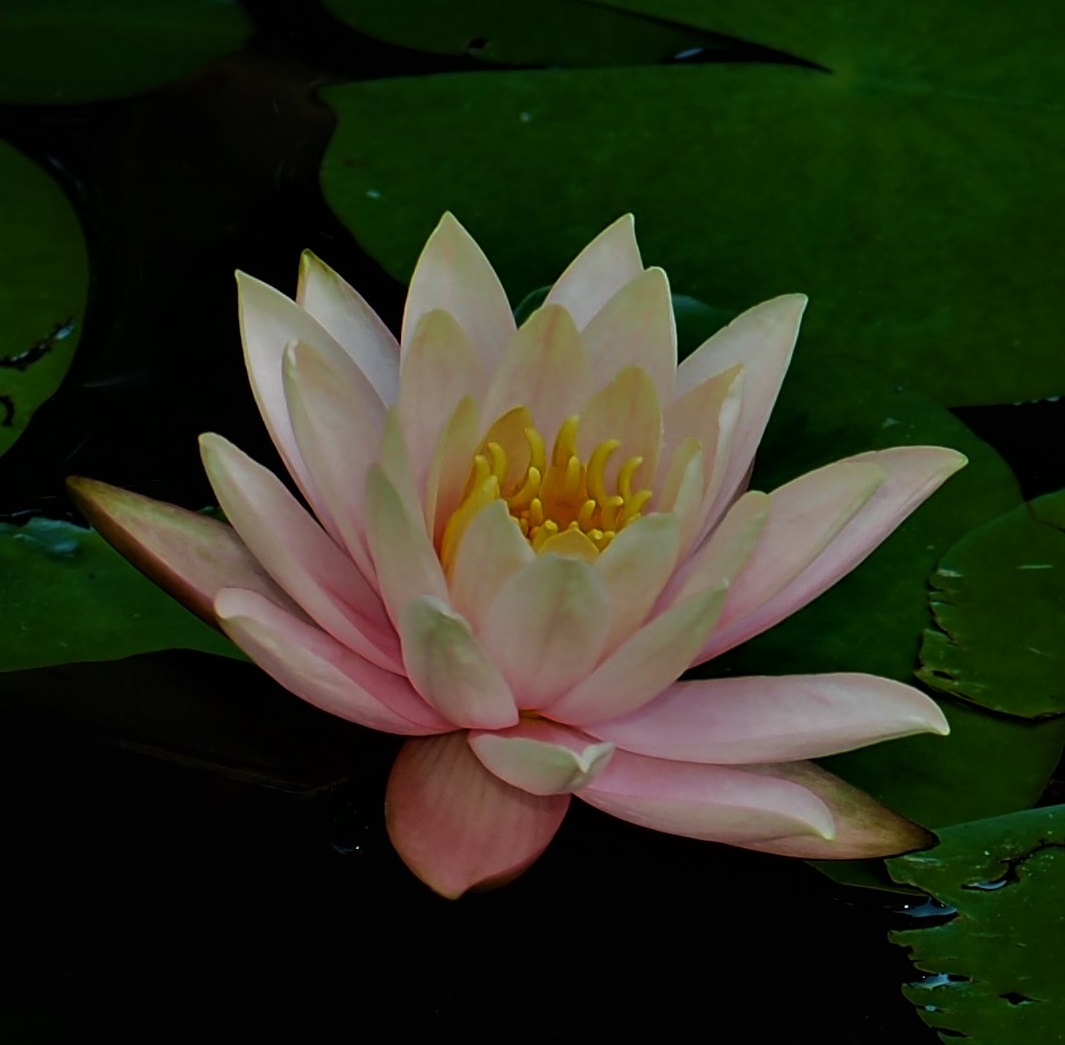
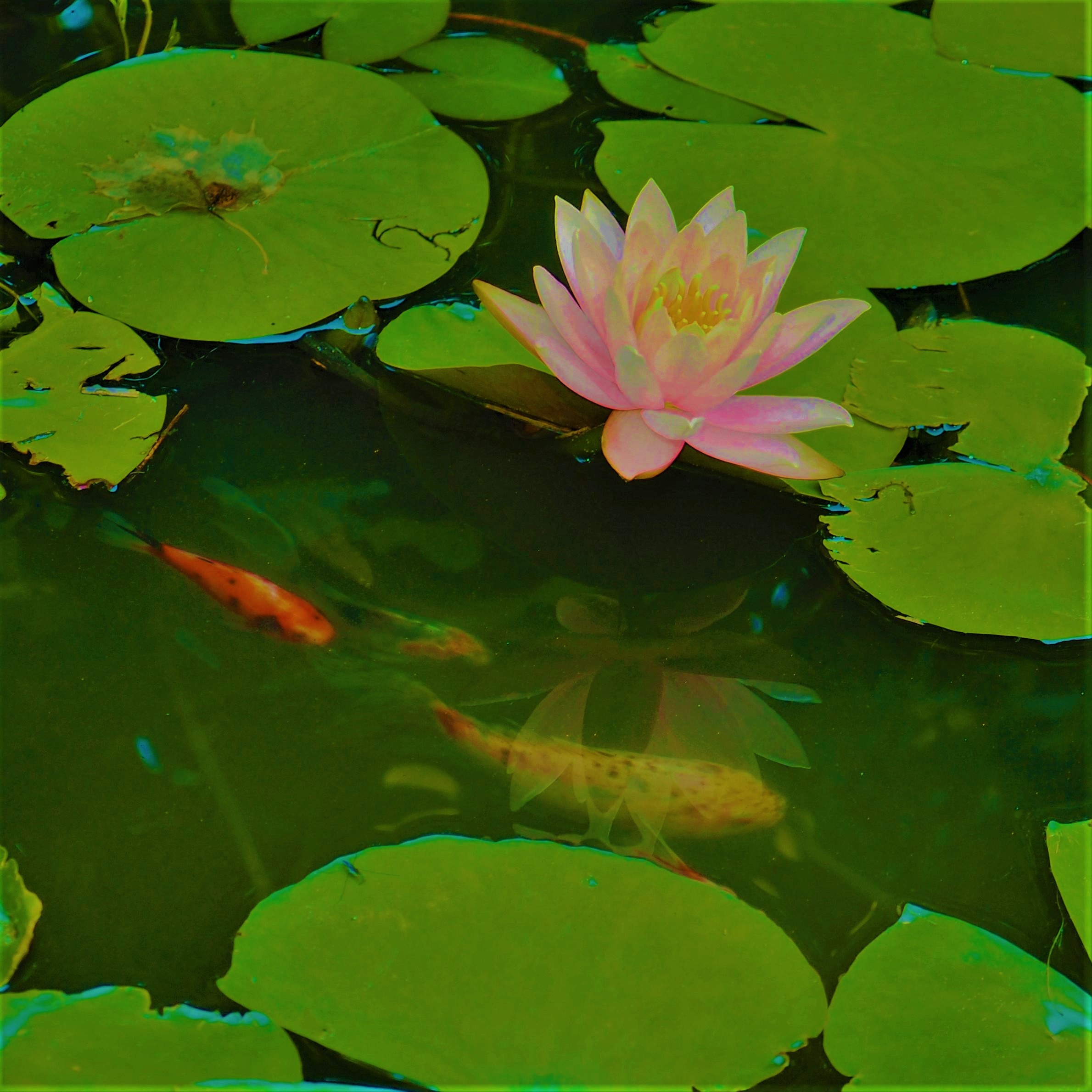
Finally, a view across the pond from north to south.
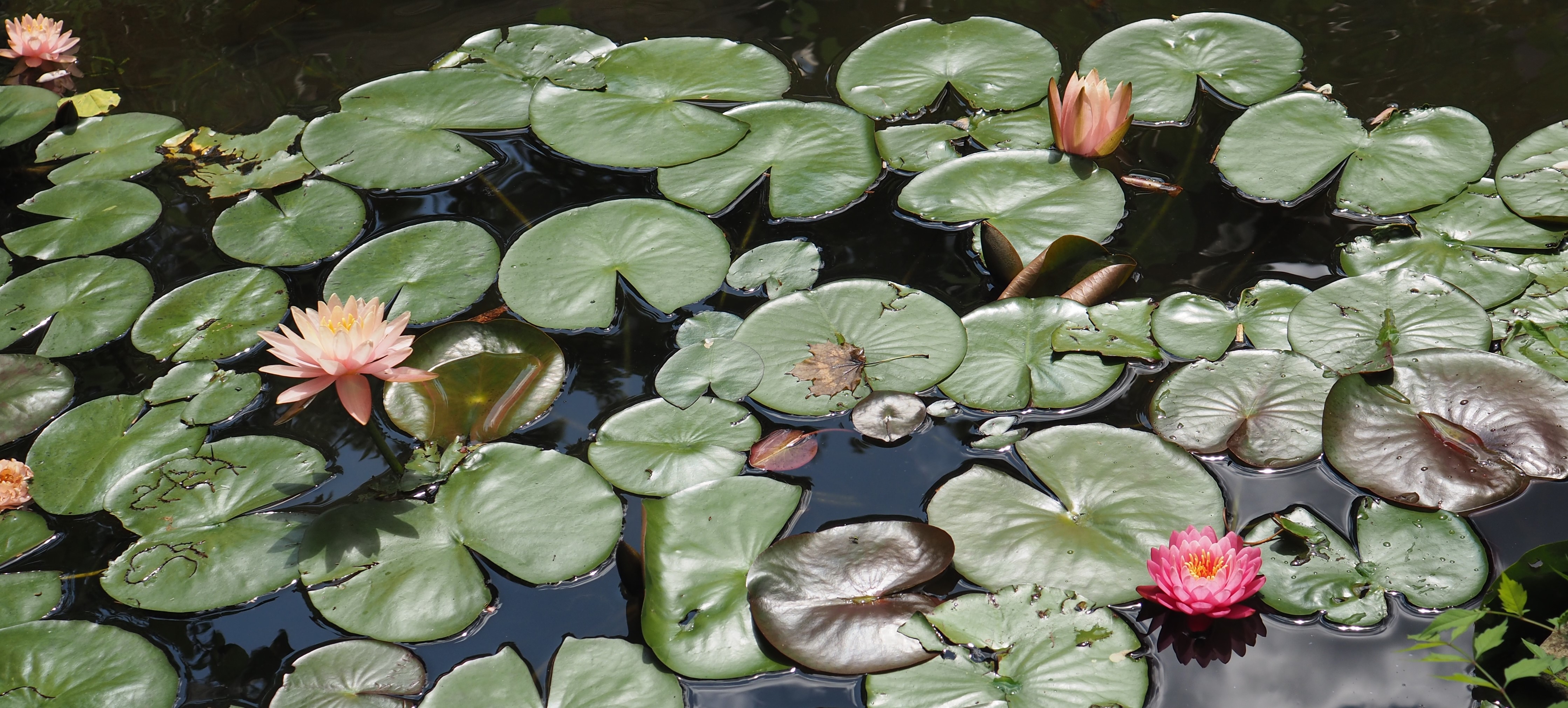
Look, everyone, please have a good next week. Get out and notice the delicate balance of nature and maybe that will help.
Love, Martha
Back to August 4, 2019
Forward to August 18, 2019
Back to main menu
copyright Martha O'Kennon 2019



















































































































